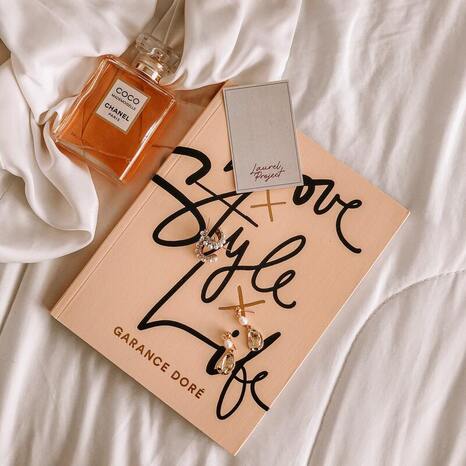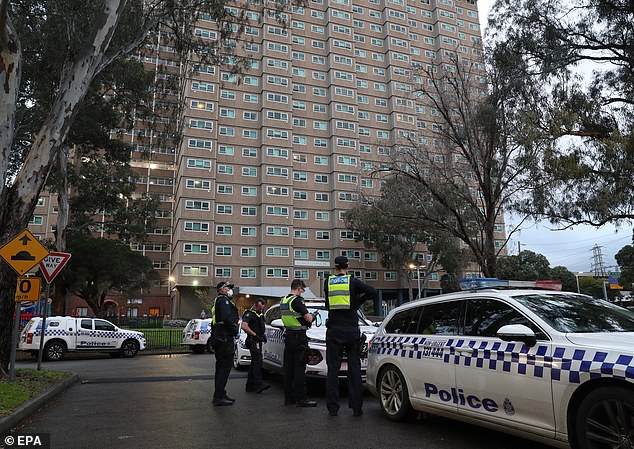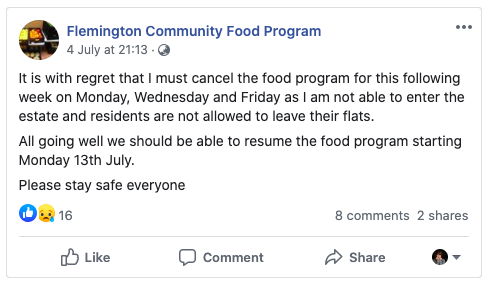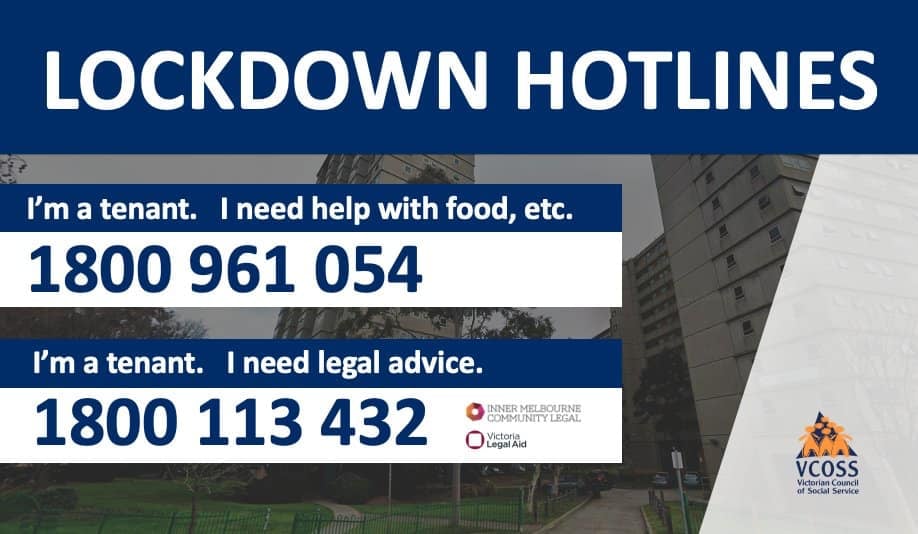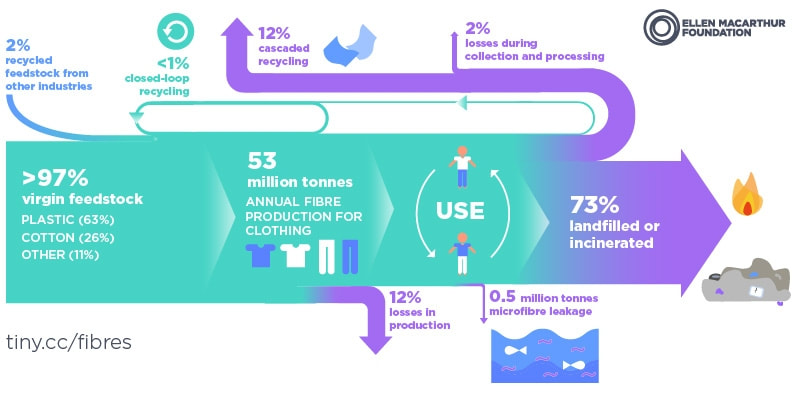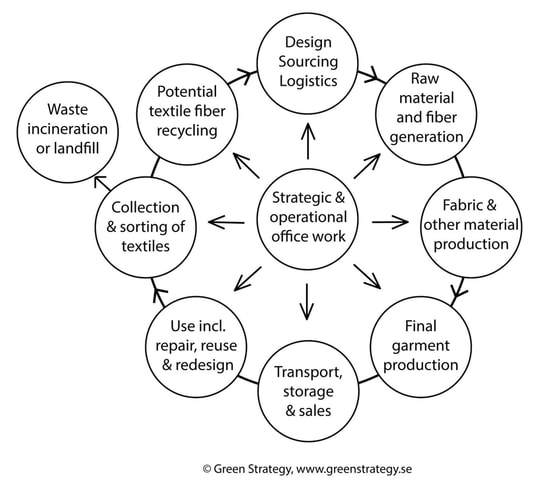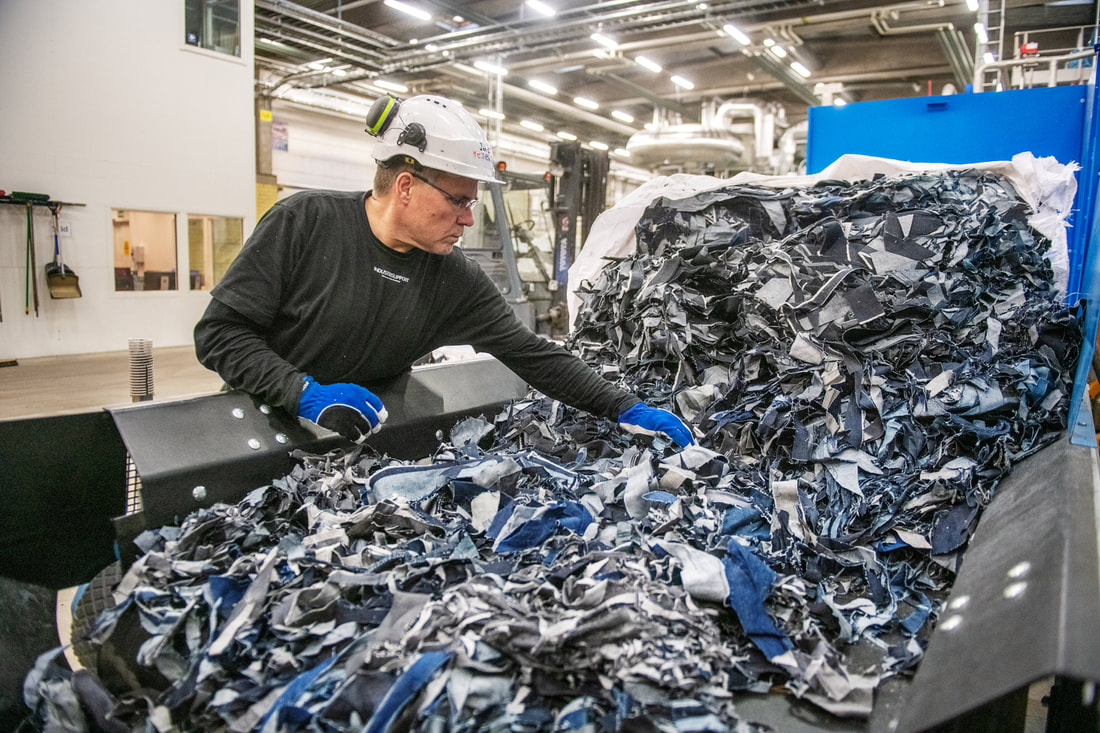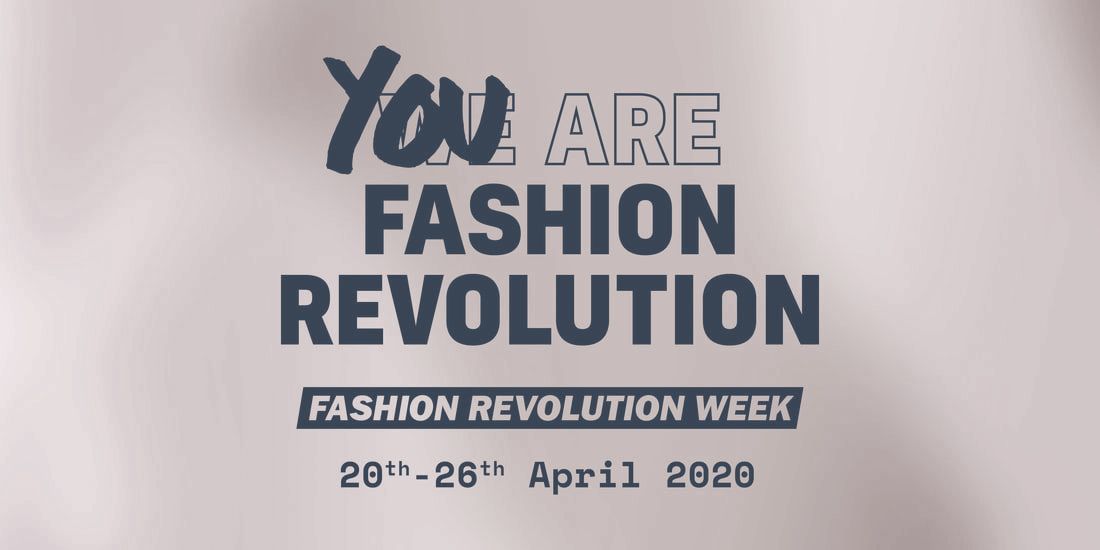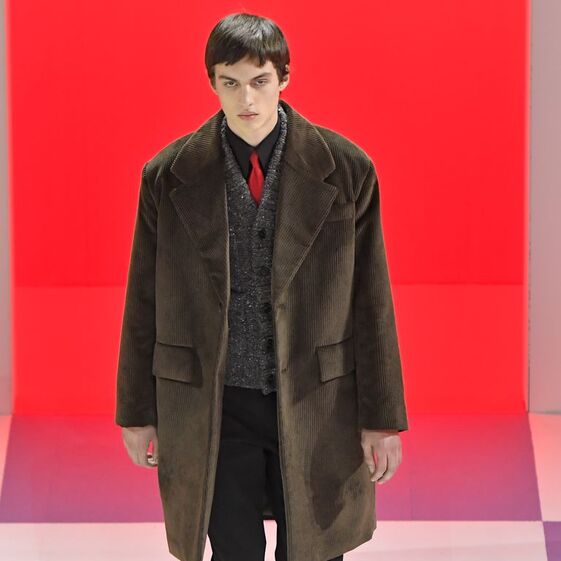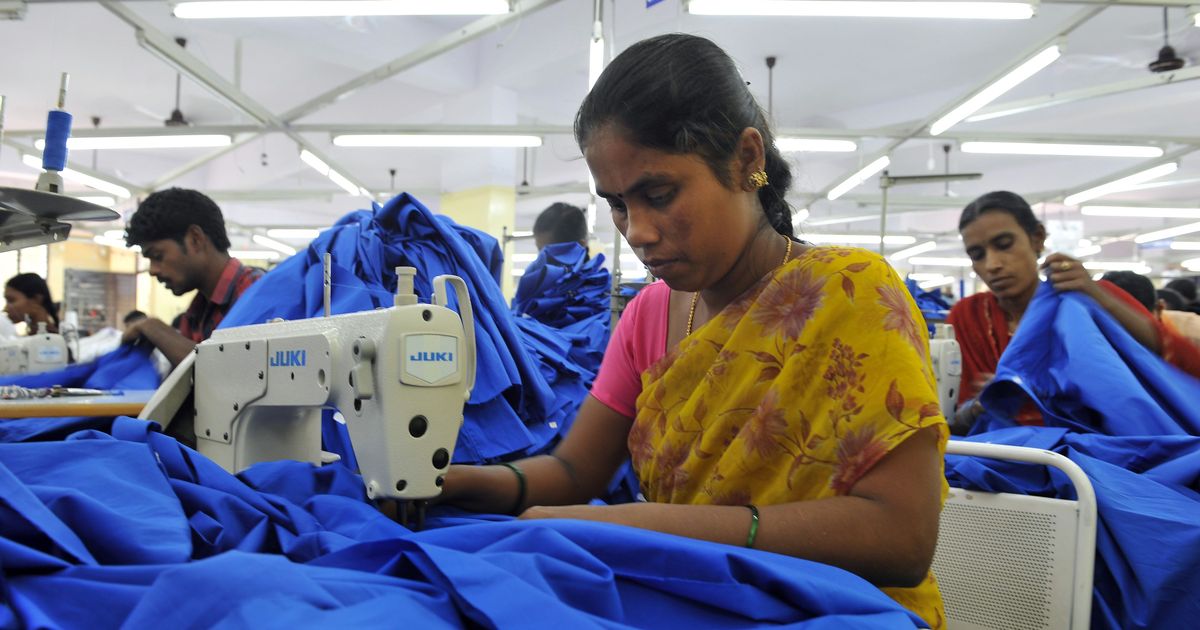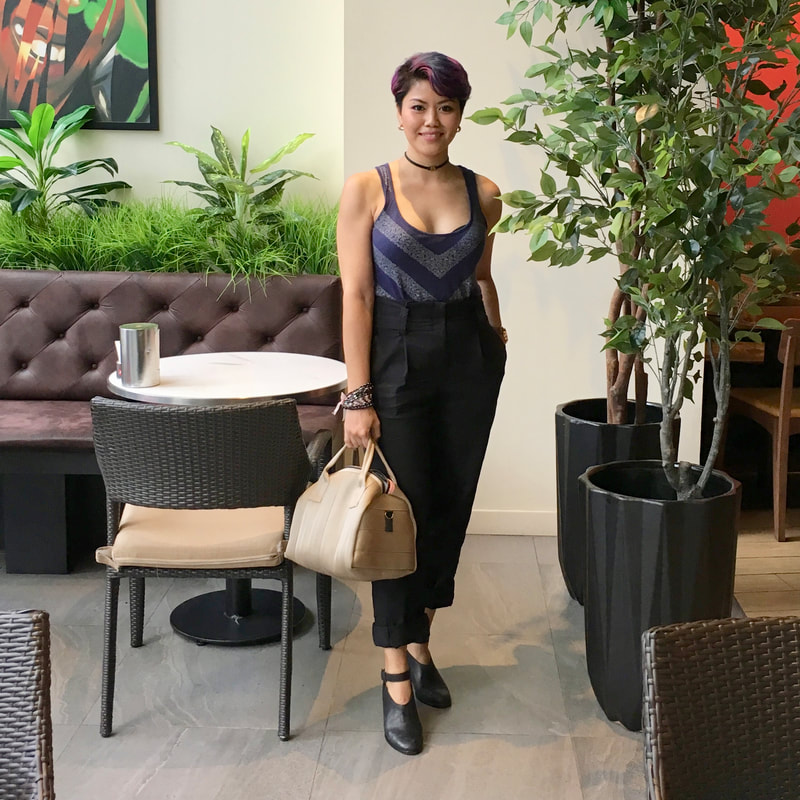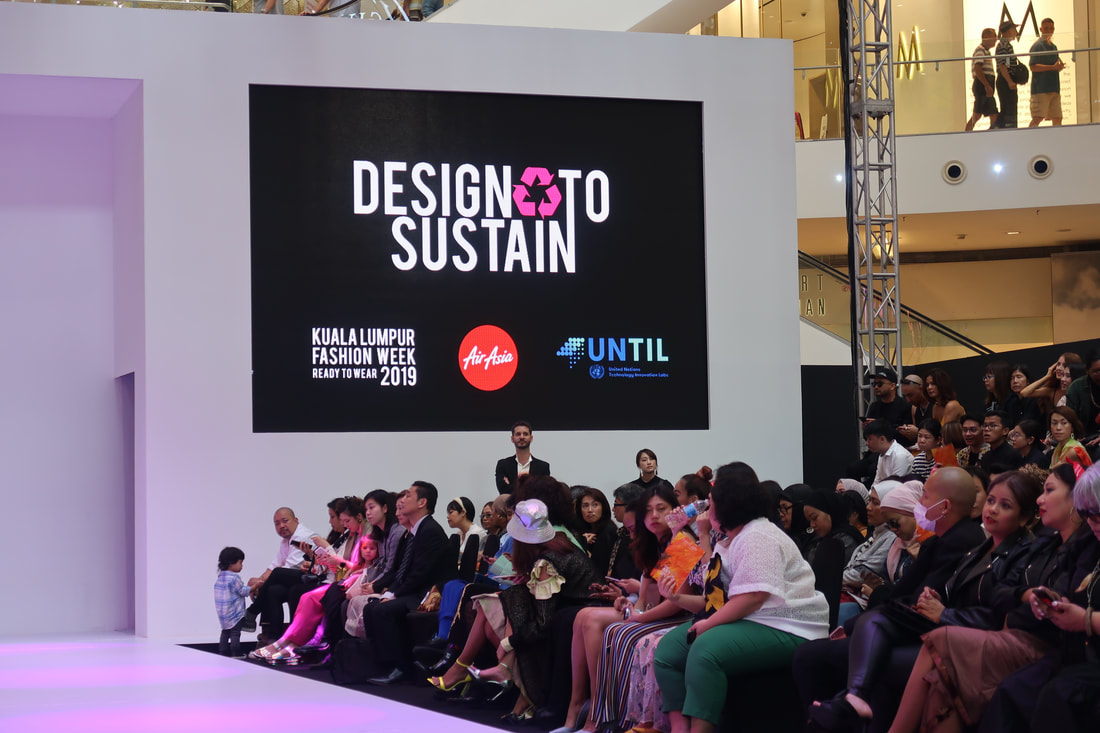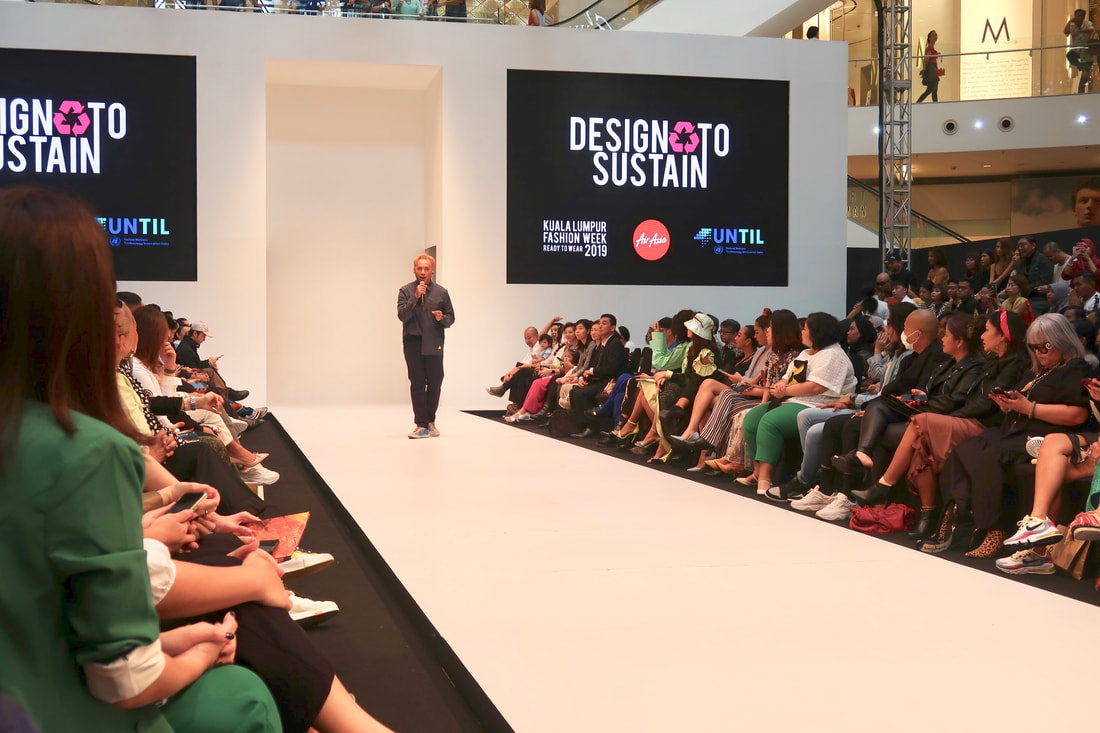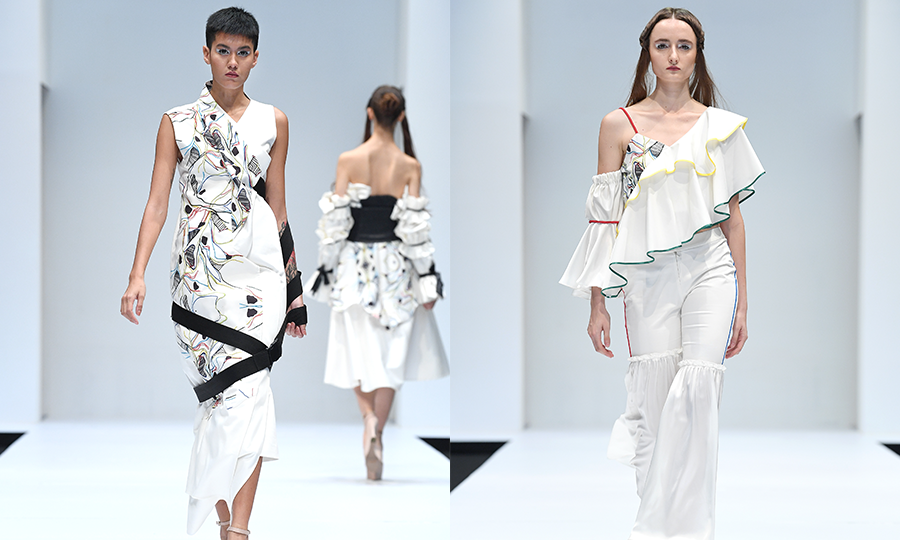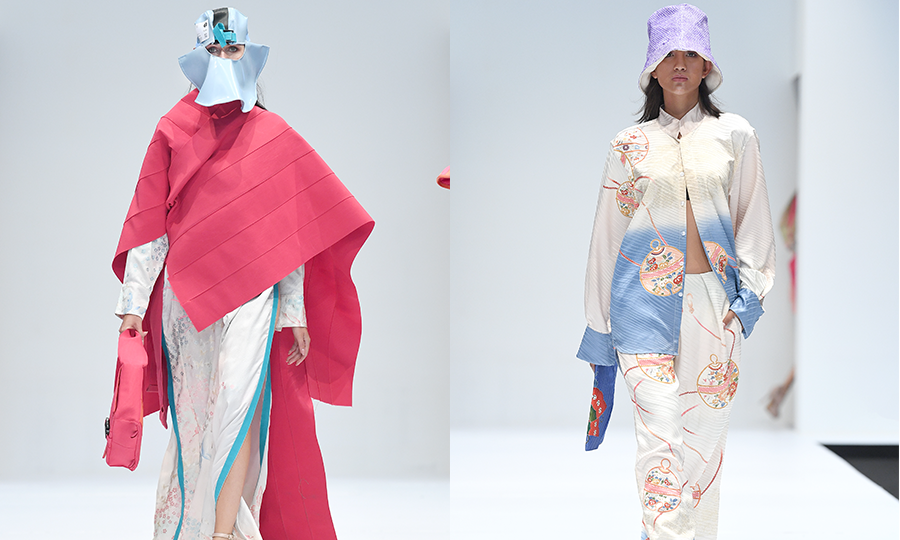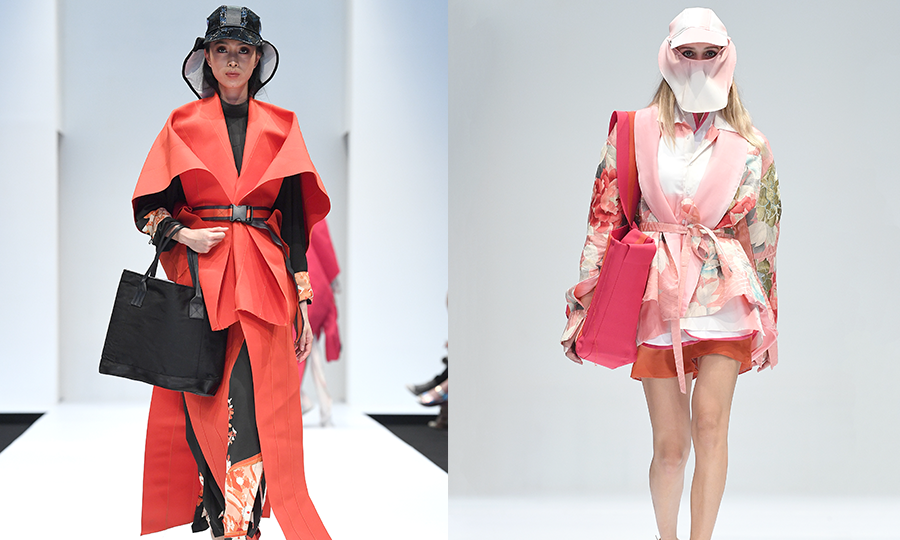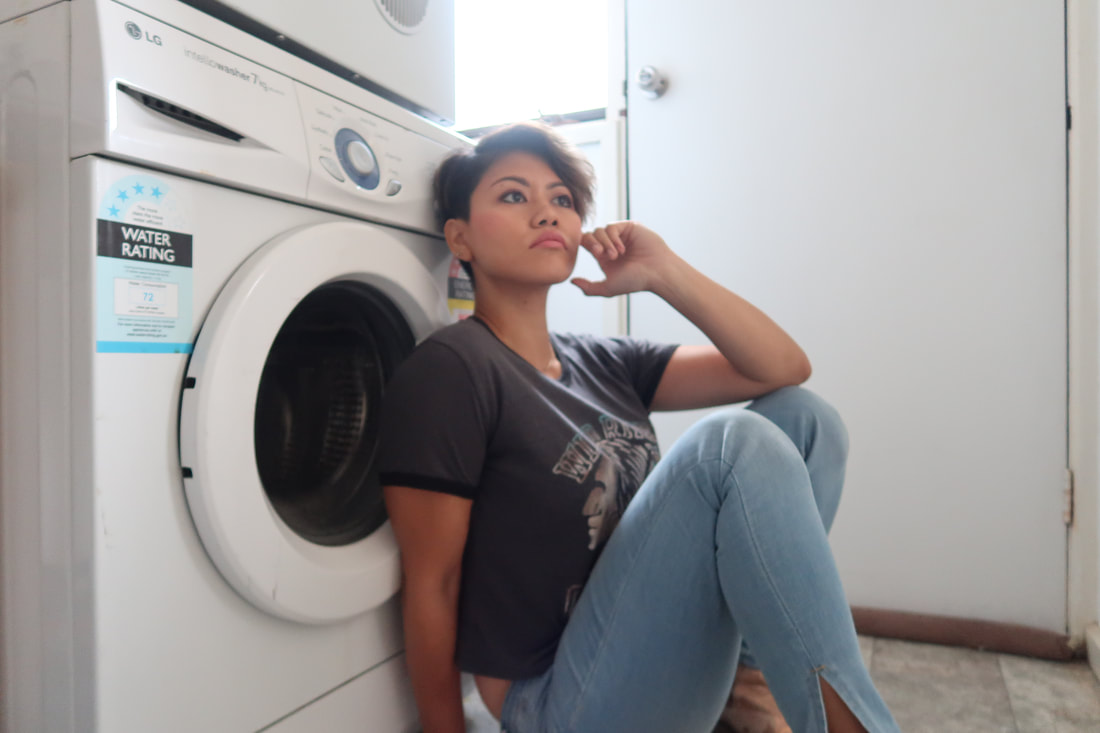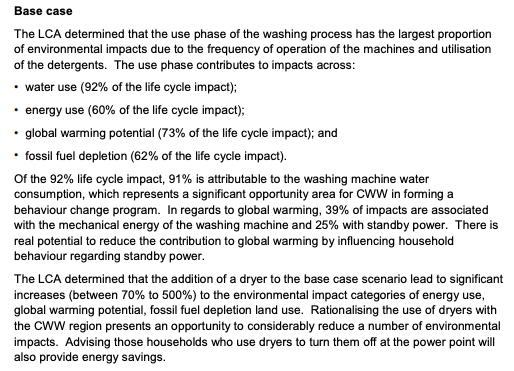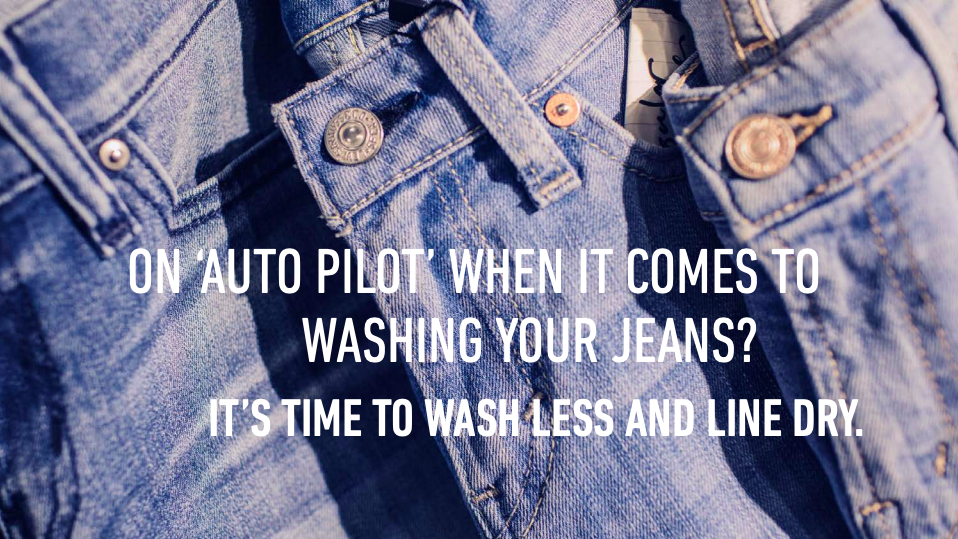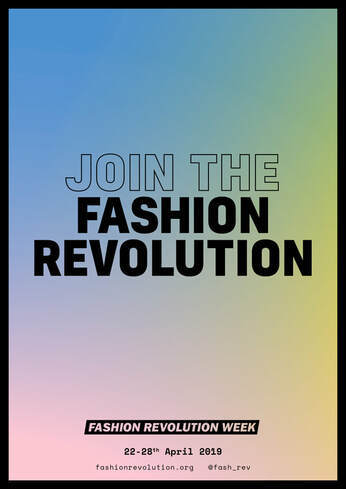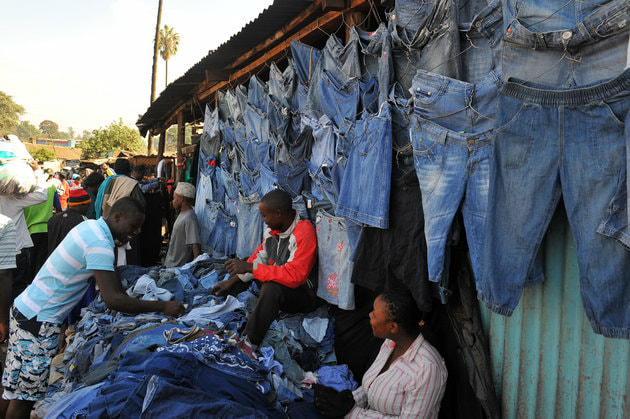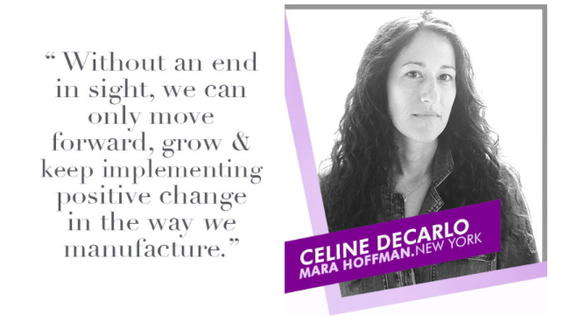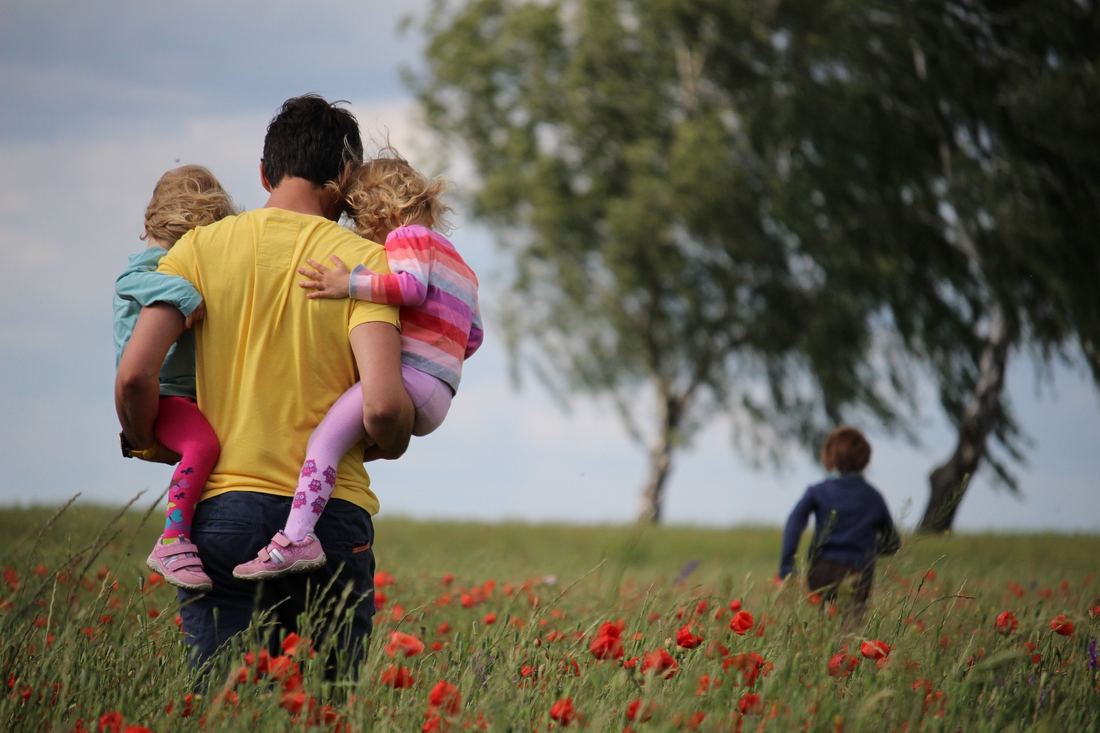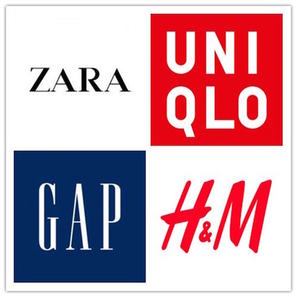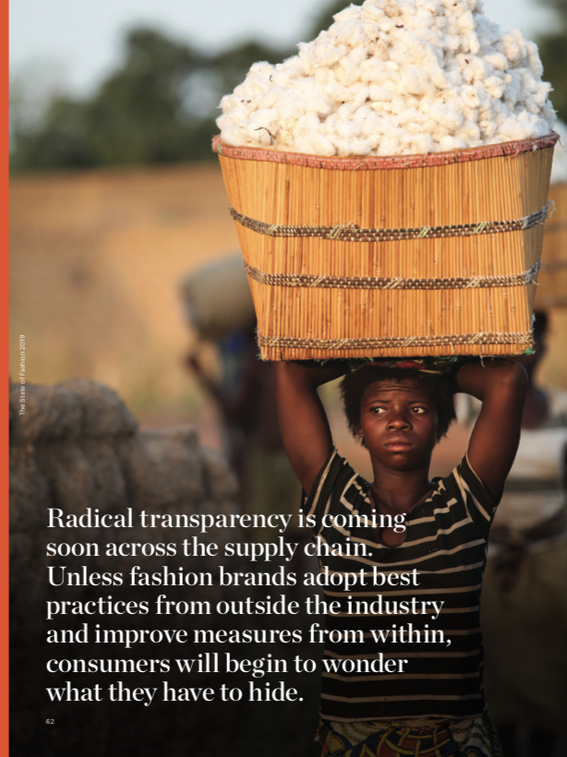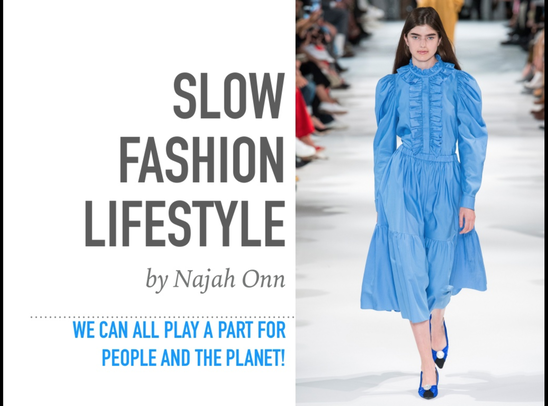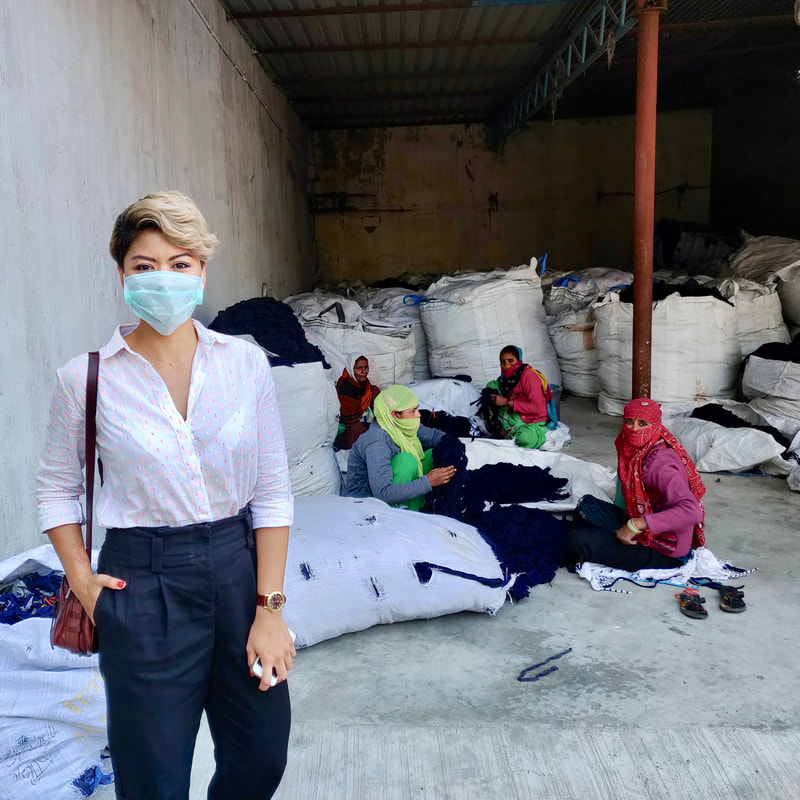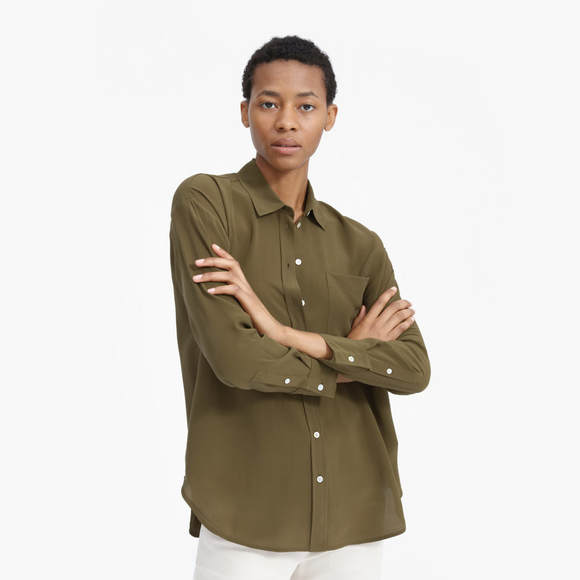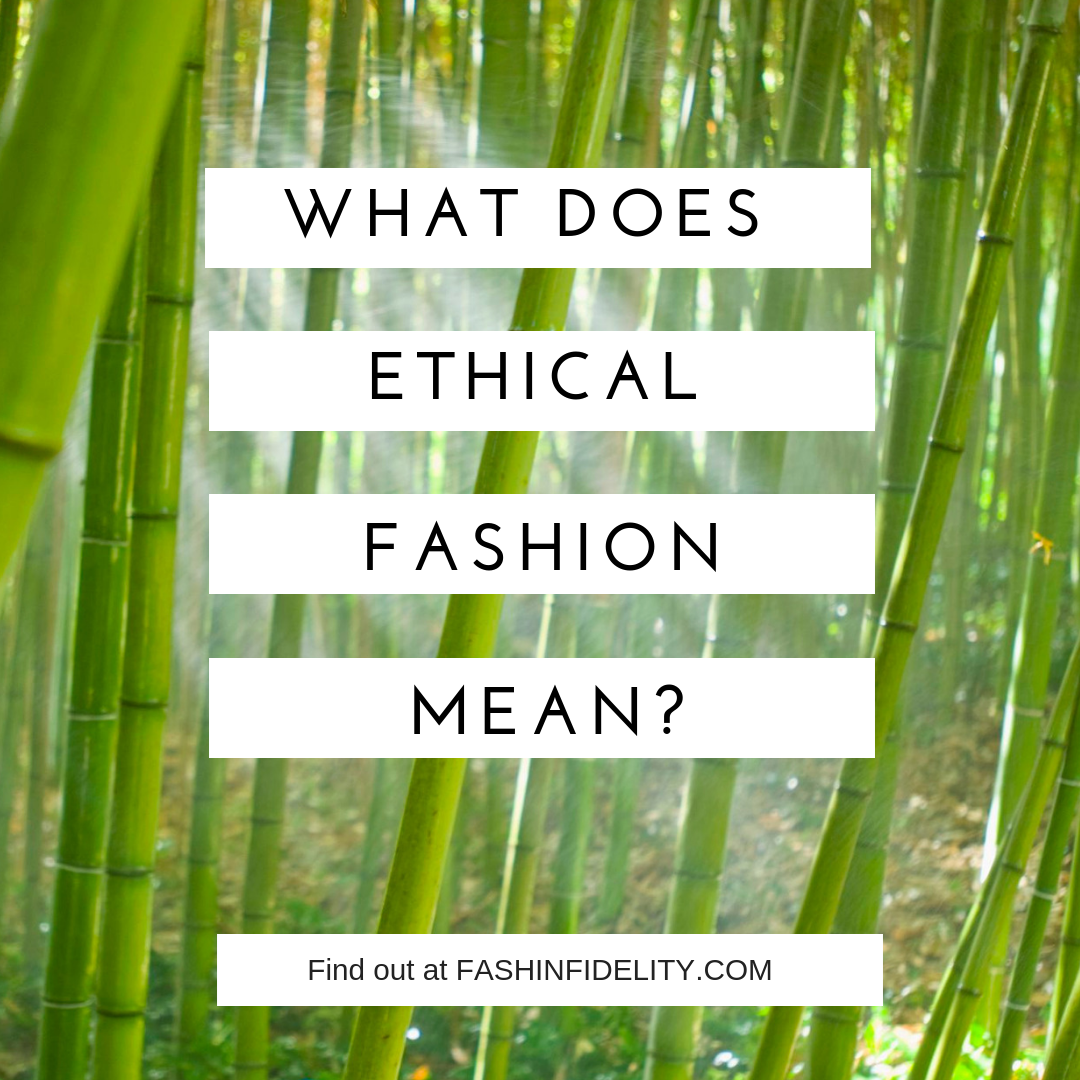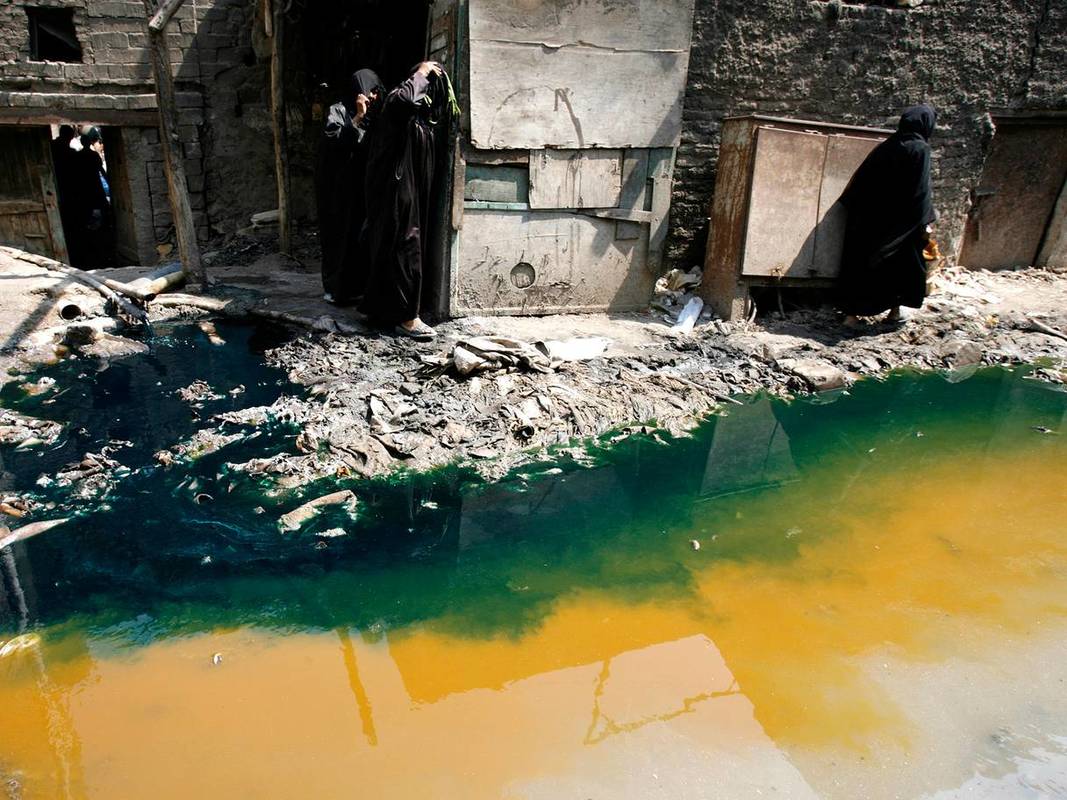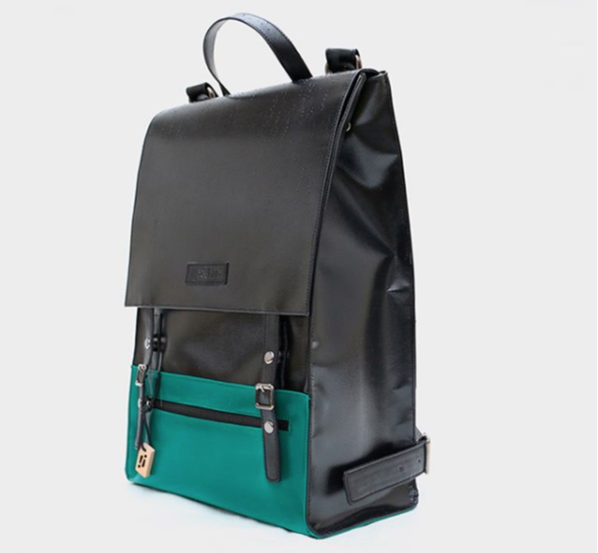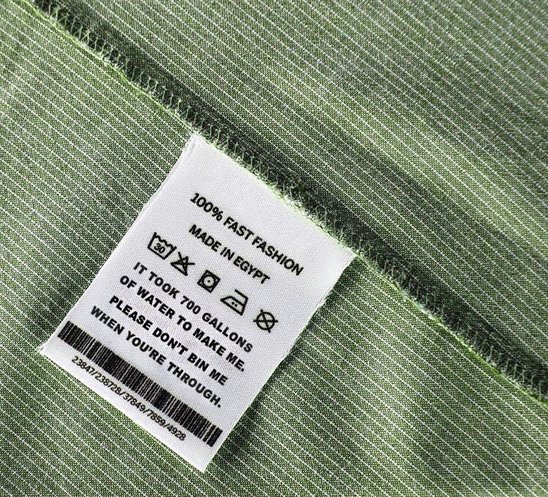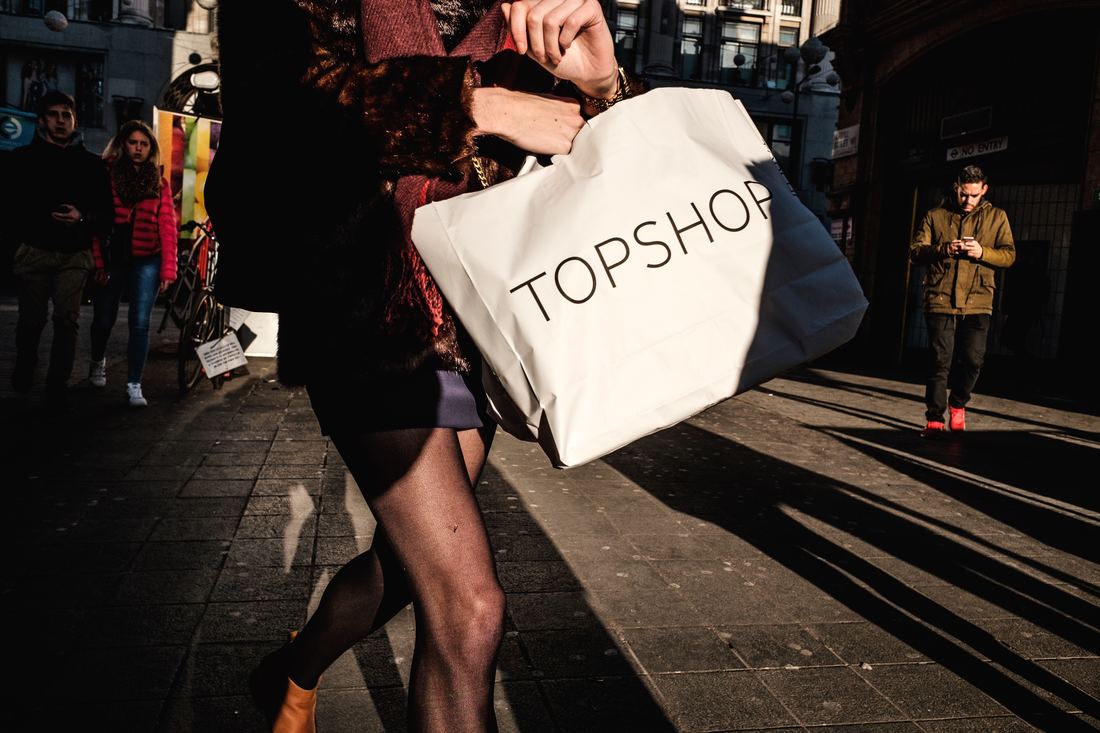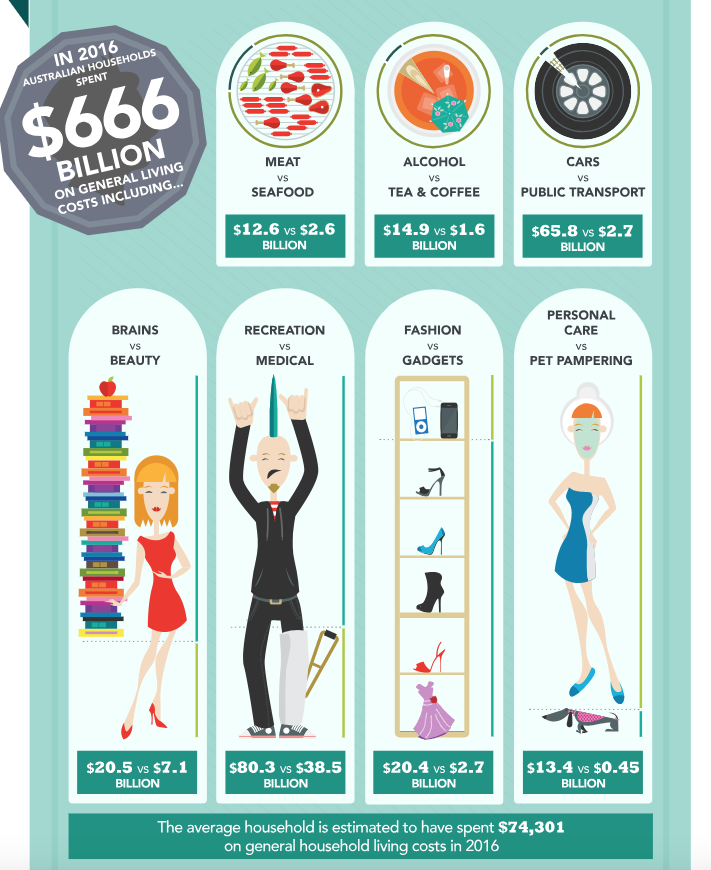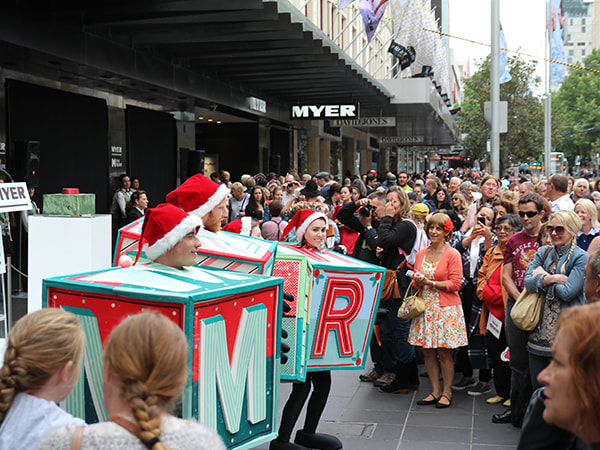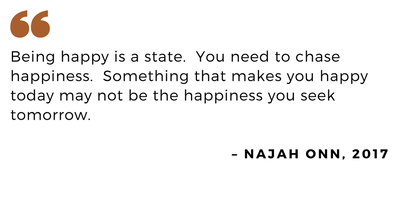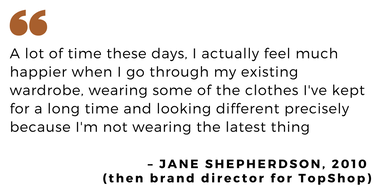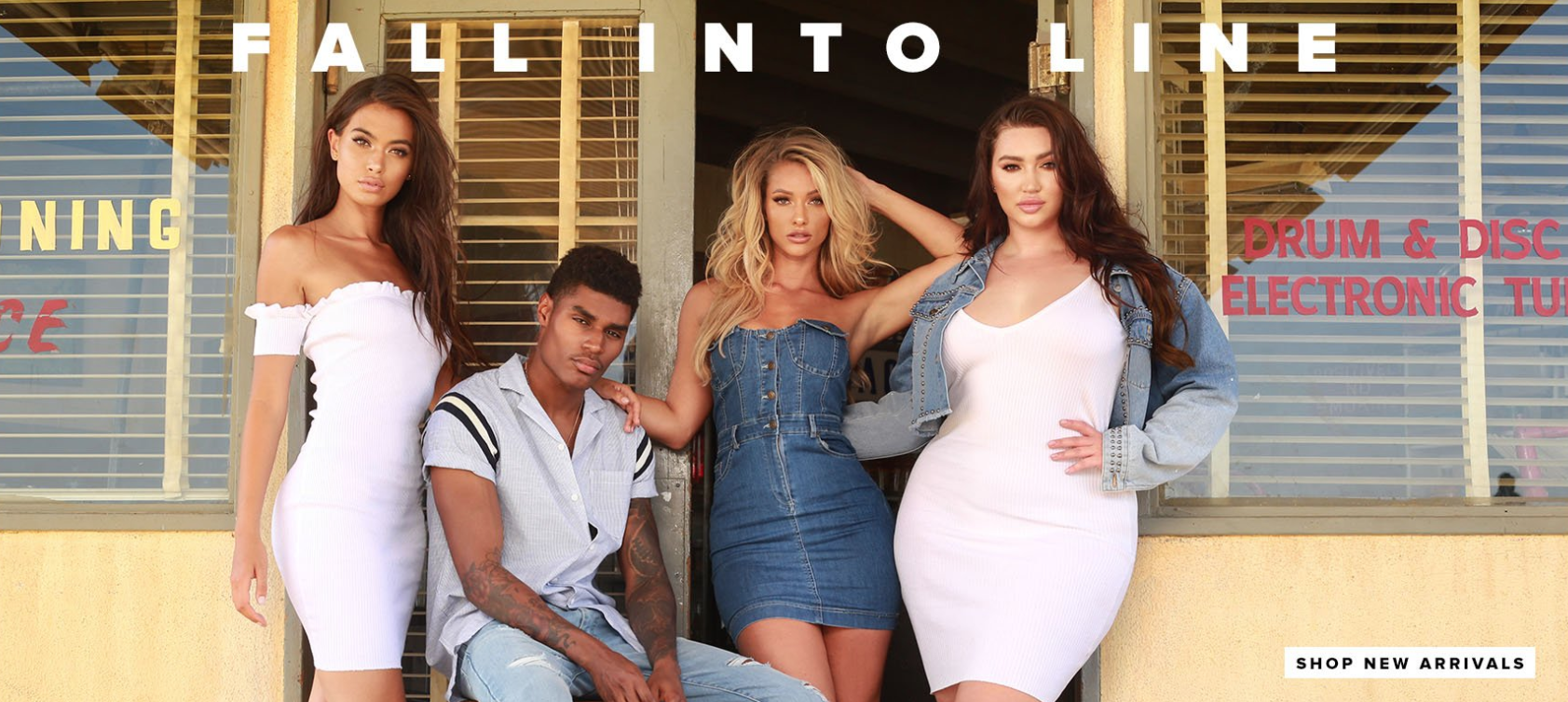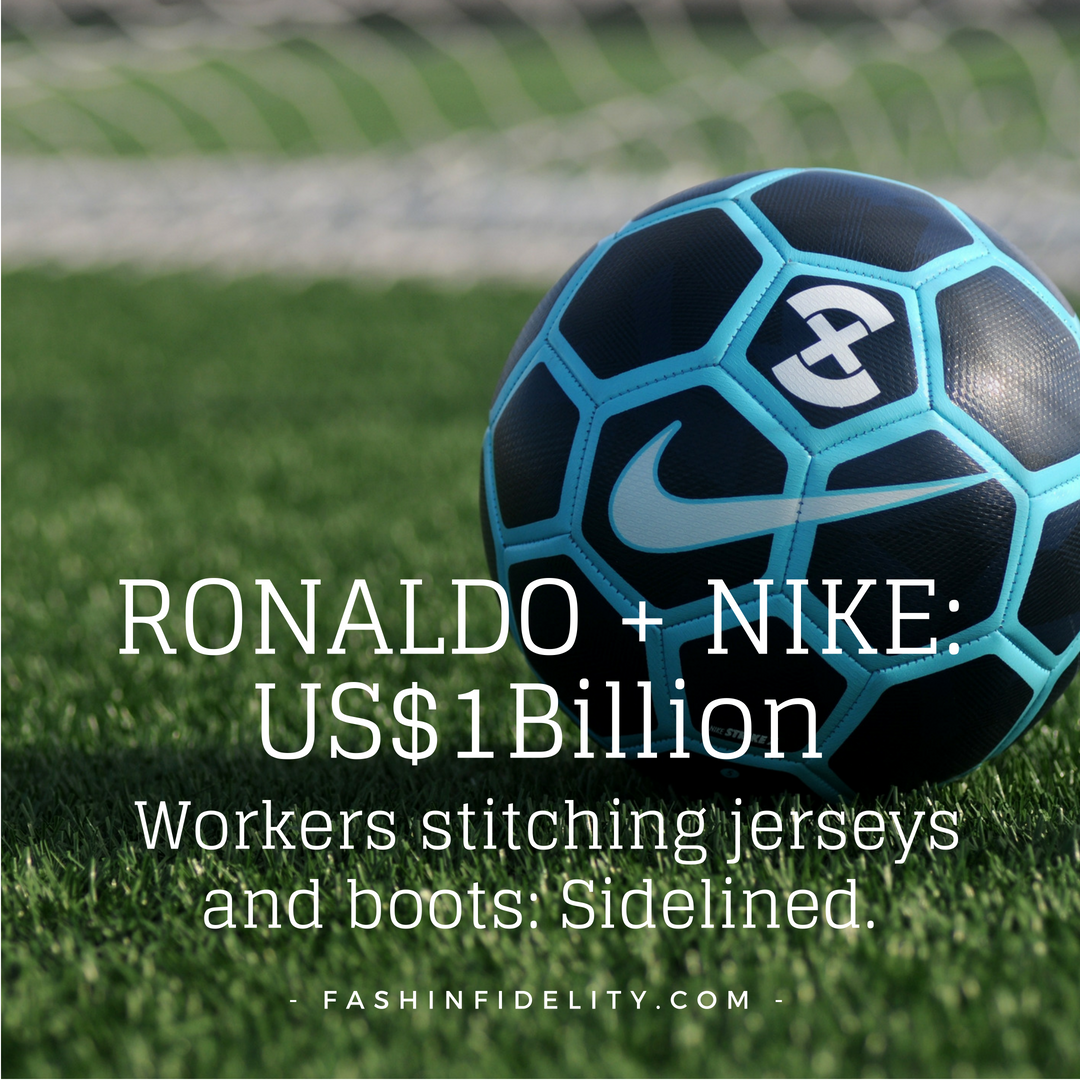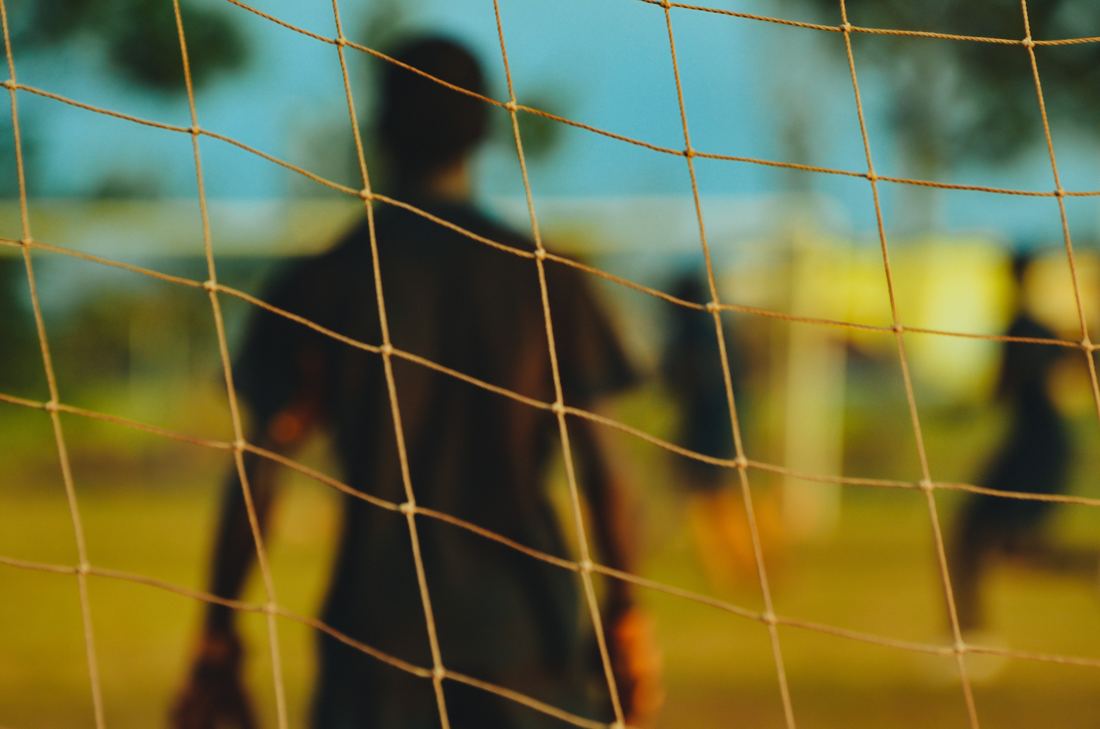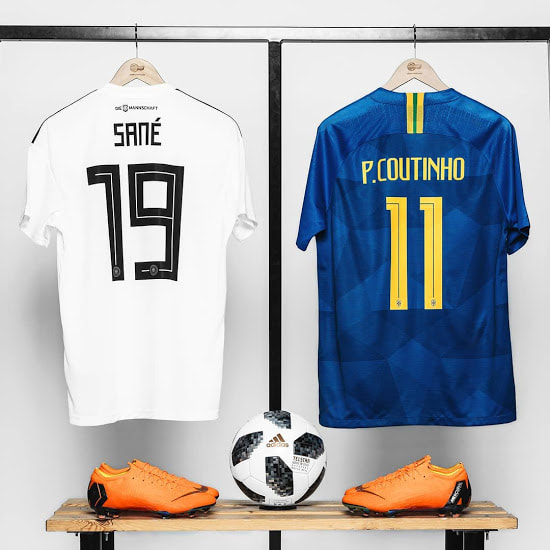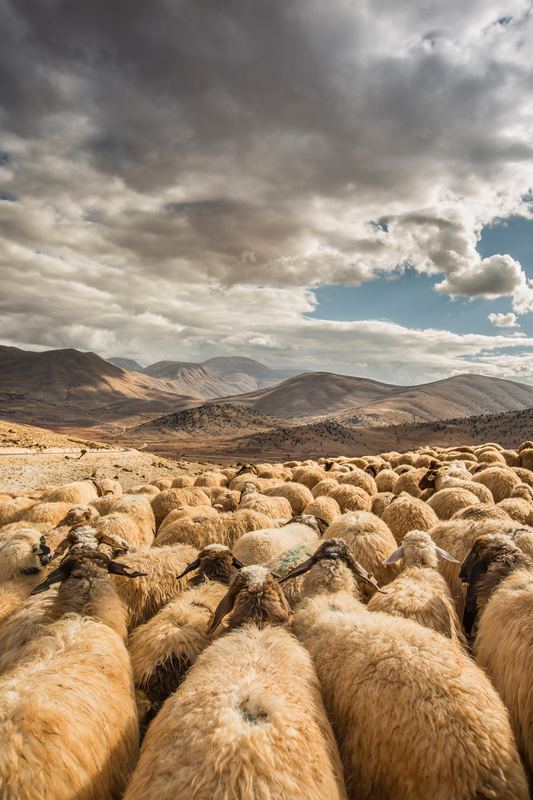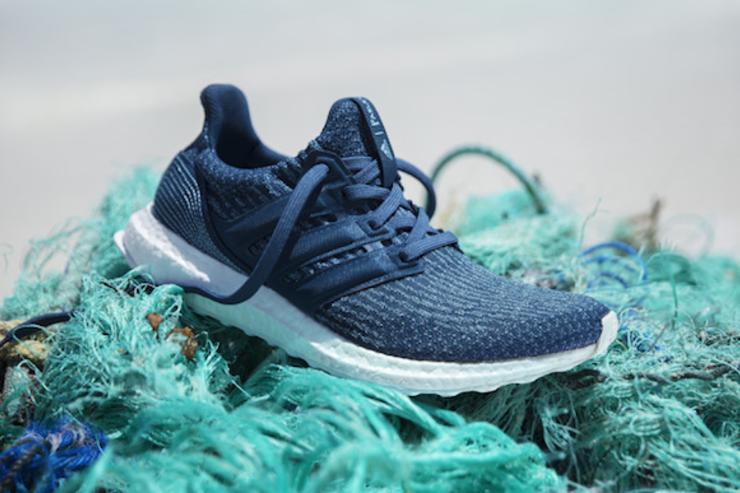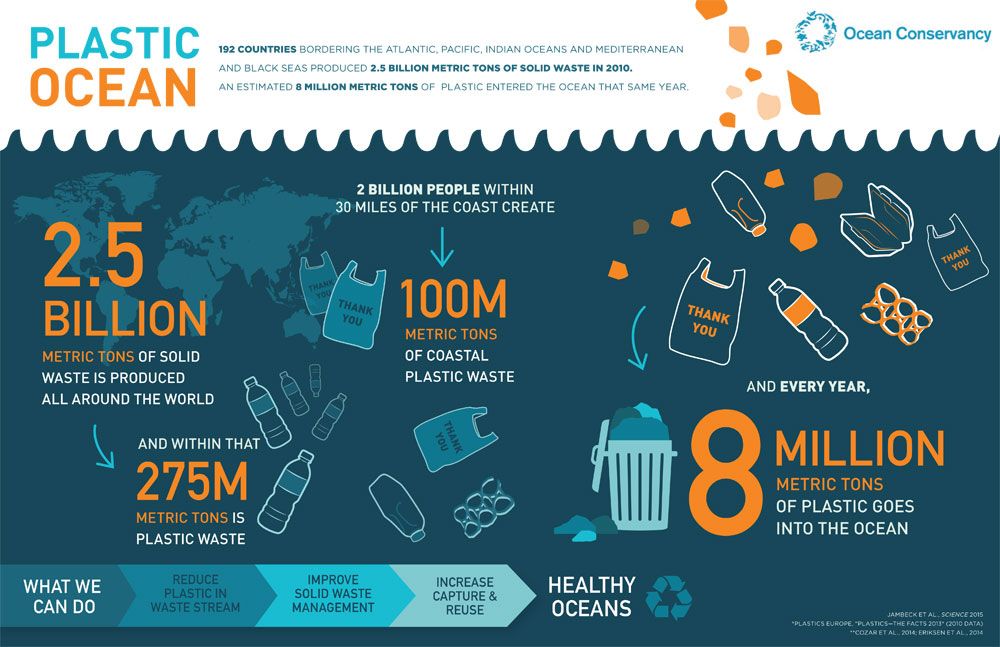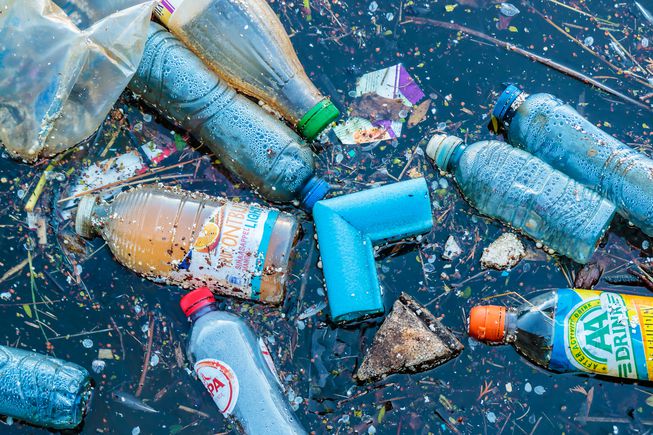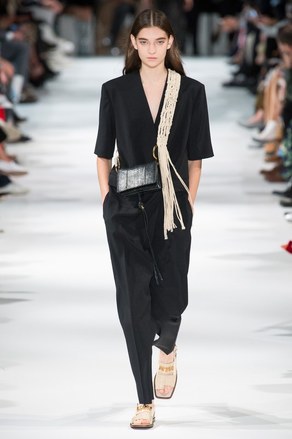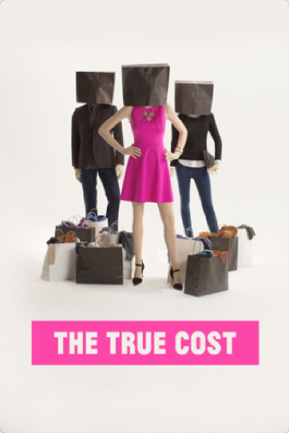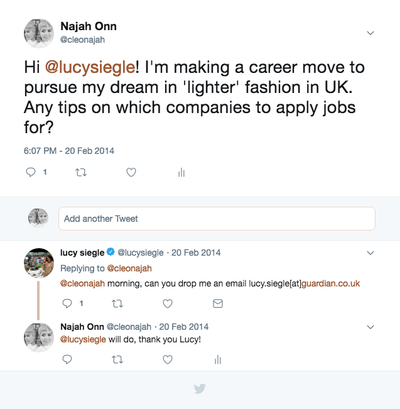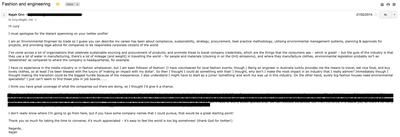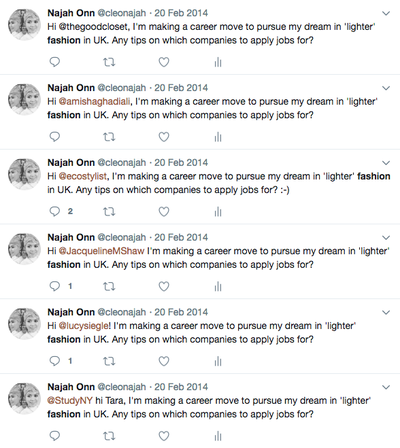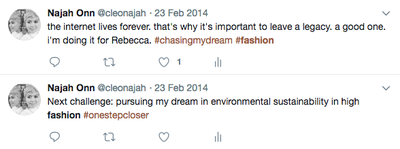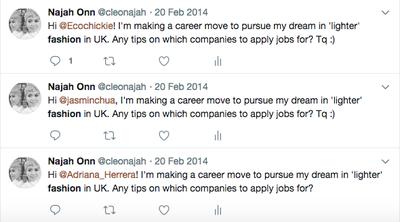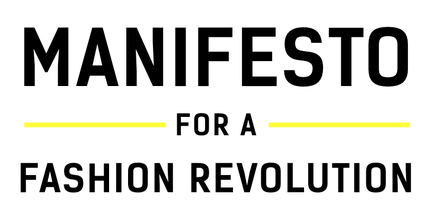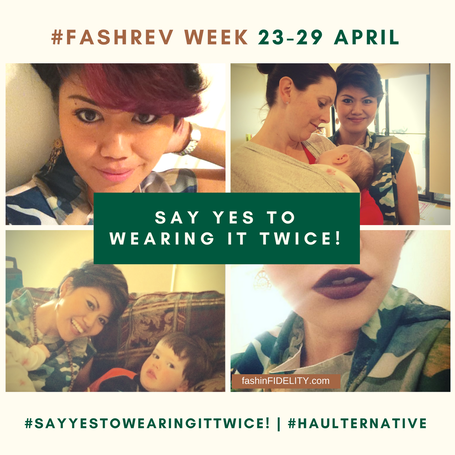|
Its modus operandi gets as close to Slow Fashion more than we realise. By Annelise Lecordier 1888 words, 9 min read. Utter the words Haute Couture within hearing distance of anyone with half an understanding of the fashion industry and you’re bound to bring up the same kinds of associations. Luxury. Excess. Escapism. Half accurate approximations of French designer names. Whatever the specifics may be, bottom line is – Haute Couture exists within a bubble of its own. With one-of-kind handmade designs costing in excess of $100,000, nothing about it seems accessible and, to many, represents the worst excesses of the fashion industry. Something to be enjoyed by out of touch elites that have little concern for conversations on the impacts of the fashion industry. But what if I were to tell you that Haute Couture could actually be the future of #sustainability? Now hear me out, I know what you’re thinking – surely nothing this outrageously overpriced and wasteful could ever be considered sustainable. But taking a closer look at the practices of the industry might actually reveal that it has more in common with the slow fashion movement than you think. Oh, the LuxuryLegally speaking, a fashion house can only call itself Haute Couture if it meets the requirements set out by the Fédération de la Haute Couture et de la Mode. These include standards around how many skilled workers must be involved in the creation of a garment, with only a specific number of items being created each season within a made-to-order system. As a result, each garment is meticulously crafted by hand by highly skilled people who are often very well paid for their work, with every detail being painstakingly decided over from conception to final product. The end product in question is a garment that is made to last – so much so that many often end up in private collections and museums. By its nature, Haute Couture exists outside of fast fashion’s built-in obsolescence. Couturiers traditionally produce only two collections a year centred around garments that emphasise timelessness. It embodies an approach to clothing that is diametrically opposed to the fast fashion’s cheap chic aesthetic which instead thrives on fast production cycles, limited durability and a consumer mind-set that embraces disposability in exchange for trend-led designs intended for short-term use. Don’t get me wrong – producing exorbitantly priced garments not meant for everyday wear for the select few might not pass muster as eco-friendly. But Haute Couture’s practices do resemble what has come to epitomise slow fashion’s approach to sustainability, defined by a similar focus on carefully selected materials, more considered labour practices, smaller production batches and an emphasis on longevity in terms of both design and quality. And lately, Haute Couture has been taking its commitment to sustainability even further, offering a potential roadmap for a more radical rethinking of fashion’s practices.
Ready-to-Wear gets inpired Looking at recent runway shows and various atelier’s adoption of eco-conscious practices, for instance, reveals the role Haute Couture can play in driving this change. Couturiers like Ronald van der Kemp and Iris van Herpen are perfect examples of this. Part of a slew of Amsterdam-based designers – an emerging counter-balancing force to the Paris fashion bubble – van der Kemp and van Herpen’s latest runway creations have centred sustainable practices and technological experimentation in a stated bid to reduce the industry’s environmental impact. A long-time champion of sustainable fashion, 98% of van der Kemp’s collection in 2019 was made from repurposed fabrics and materials collected largely from factory waste and overstock from past collections. This is part of the designer’s larger plan to work with companies in the industry to find more sustainable solutions to their waste problems by using their “leftover [to] produce clothes” instead of the current practices of burning or throwing them away. Xuan-Thu Nguyen, founder of Paris-based Xuan, is similarly inspired by the possibilities that re-using traditionally discarded materials holds. Her commitment to this was already seen in her Fall/Winter 19/20 collection which was crafted from 90% deadstock. She’s decided to take this practice further through the creation of her new line, 1/Off, which works exclusively with vintage pieces to create upcycled garments. To Nguyen, this focus on upcycling should be a given. “We shouldn’t just throw materials away,” she told Vogue. “It’s still beautiful so why not use it?” For van Herpen, the excitement lies in finding new ways of developing more eco-conscious fabrics and innovative ways of conceptualising design to increase the versatility of garments. She has collaborated with numerous architects and scientists in the past to do this, looking at how a single garment can take on multiple forms through kinetic designs or using a mix of technology and traditional techniques to work with materials in ways we’ve never seen before. She’s particularly excited by the possibility of octopus-like textures that hold the capacity to change colour and shape. “It’s [still] further in the future, but [it] creates a lot of possibilities for fashion,” van Herpen told Vogue. “You [could] change the design and colours; customise it.” That creates less need for a lot of clothes; it becomes a whole different philosophy of owning. This kind of commitment to sustainability is slowly becoming part of every aspect of couture, with Chanel recently announcing their investment in a Boston-based start-up that’s developing an eco-friendly silk technology, building on their previous investment in Finnish biodegradable plastic packaging alternatives. Let’s not kid ourselves, Chanel’s overall business practices leaves a lot to be desired – but this kind of investment into potentially mitigating the impacts of their creations creates a lot of new and interesting possibilities for the industry as a whole. Put quite simply, the fact that sustainability is becoming a bigger part of the conversation for Haute Couture and luxury brands can have positive implications for how the rest of the industry views their supply chain practices. Think of it as that scene from The Devil Wears Prada where Meryl Streep schools Anne Hathaway on the real impact decisions made in their offices can have on her everyday life – in this case, sustainability is cerulean, Meryl Streep is Haute Couture and we’re all Anne Hathaway a few seasons away from having a more sustainable wardrobe. And we’re seeing this change happening in Couture menswear too, with Zegna’s Spring/Summer 20 show embracing the #UseTheExisting ethos. As Alessandro Sartori, artistic director of Zegna, put it, “It is our duty as denizens of this world to live responsibly. Everything is connected, and everything conveys the same idea: we do not need to create the new from scratch, but we can reuse and reinvent the existing, getting progressive fabrics out of discarded ones, translating traditional techniques into innovative lifetime tailoring, turning an abandoned place into an area of creation.” Overall, 20% of the collection was crafted from upcycled material, with suits made entirely from wool remnants and recycled cashmere proving particularly popular. While far from representing an overwhelming commitment to deadstock, the success of this line does bode well for the financial viability of a sustainability-first approach to fashion. Haute Couture Can Set the Right Tren Of course, the question remains: is a section of the industry that is so distanced from the average consumer truly in a position to radically change the way fashion as a whole views its relationship with sustainability? Well, the answer lies in the role Haute Couture can play in shifting perceptions of sustainability and its appeal to the everyday consumer. As Joy et al (2012) have found, one of the biggest barriers to embracing the slow fashion movement for consumers is its lack of overall appeal. To most, the concept of slow fashion brings up images of plain clothing with little stylistic interest. When compared to fast fashion’s constant offering of new, trend-led items that offer the immediate gratification of reinvention with one impulsive swipe of our credit cards, aesthetics always seems to trump ethics. That’s further complicated by the fact that, to most consumers, fast fashion seems to exist outside of their environmental consciousness. As the same study found, young people – the very demographic that most embraces fast fashion – seem to view their consumption habits when it comes to clothing as existing outside of the sustainability conversation, even if they are otherwise open to environmentalism. When combined, these two factors make slow fashion an incredibly hard sell to most. That’s where Haute Couture comes in.
By publicly making sustainability part of the conversation, couturiers like van Herpen or fellow Amsterdam-based brand Viktor & Rolf can redefine the way we view environmentally- and socially-responsible practices within the industry. Moving away from perceptions of sustainable fashion brands as boring, outdated or having simply no aesthetic vision whatsoever, Haute Couture’s buy-in can extend the positive associations many have for luxury and couture to the slow fashion movement. These ateliers are used to creating desire through innovative designs and can greatly influence consumption practices, making it seem more possible for us to adopt a new way to do fashion – both as consumers and producers. For van der Kemp, adopting a sustainability-first approach is all about the potential impact this decision might have on broader practices within the industry. “I also want to show the world that it’s possible to make couture with existing materials, dead stock, high-end leftovers, vintage fabrics and that sustainability can be glamourous, sexy and high-fashion,” he stated to Vogue. Van Herpen is motivated by a similar rationale. “This is couture; you will not see this in a store next week, but [it’s] the principle behind it. [I have] big hopes that we will be able change the way we think about materials, and the way we produce,” she said to Vogue. By making sustainability central, the hope is that Haute Couture could set a new path for how the industry functions – all while offering a take on sustainability that might be more appealing to the average consumer. “Couture in its heyday set the tone in fashion. With my sustainable #couture I want to inspire girls out there to experiment with their wardrobes and with vintage clothes; to teach them to enhance their personalities and be conscious about buying clothes,” van der Kemp told CNN Style. If nothing else, Haute Couture can serve as an inspiration to us all to step away from the discounted racks and start searching for those few key pieces to be treasured rather than discarded after a season. With its focus on artisanal quality and an appreciation for craftsmanship, looking to couture could serve to give us a new way of looking at garments – and along with it could come a new-found appreciation for custom, hand-made designs. While this might, once more, seem only accessible to the few, people who can make custom clothes are not confined to French ateliers. They exist all over the country and offer a different avenue for our fashion needs based on small-scale production models and carefully constructed items made to last. What better way of injecting a little something special into our everyday? After all, luxury and escapism doesn’t have to only be enjoyed by the few – it all just depends on how you define it. Annelise is a freelance writer, activist and strategic communications management student currently based in Naarm (present-day Melbourne.) An International Relations graduate originally from Mauritius, she co-founded It’s Not A Compliment – a Melbourne-based campaign against street harassment. She is passionate about human rights, social justice and fighting structural oppression through a strong intersectional, post-colonial feminist lens.
Join us in our Slow Fashion movement with the hashtags #ConscientiousFashionista and #wardrobetruths on Instagram, and follow us at @fashinfidelity. Tags: #hautecouture #leader #sustainability #circularfashion #circularity #ethicalfashion #sustainablefashion #ecofashion #greenfashion #responsiblefashion #recycledyarn #recycledfabric #recycledcotton #fabricrecycling #recycling #conscientiousfashionista #fastfashion #slowfashion #wardrobetruths #fashioneducation #fashion #fashinfidelity
2 Comments
If you're reading this then you are angry, curious, and feel a significant piece of injustice is happening right now to our brothers and sisters in housing communities in Flemington, Kensington and North Melbourne.
I've scoured ways to help because I personally feel the State Government has gone about this is a MAJORLY wrong way. I won't go into the details, because if you're here then you've an inkling of how f***ed up this situation can be, if they keep going this way.
As I'm writing this (Monday morning, 6 July), these are the things that have gone through my head:
List of resources as of noon, Monday 6 July of active help and assistance
For live updates on people who are mobilising support and actively engaging politicians and the like
I will update this page every day or so, anytime I feel there are more resources worth sharing. Stay safe, and stay sane, everyone. Look after each other please.
Love, Najah xx
#covid19 #healthcrisis #melbourneloackdown #blacklivesmatter #pandemic #plandemic #auspol #SpringSt #covidvic #humanrights #discrimination #socialinequity #socialjustice #socialaid
𝗟𝗘𝗦𝗦 𝗧𝗛𝗔𝗡 𝟭% 𝗢𝗙 𝗧𝗛𝗘 𝗠𝗔𝗧𝗘𝗥𝗜𝗔𝗟 𝗜𝗡 𝗖𝗟𝗢𝗧𝗛𝗜𝗡𝗚 𝗜𝗦 𝗥𝗘𝗖𝗬𝗖𝗟𝗘𝗗 𝗜𝗡𝗧𝗢 𝗡𝗘𝗪 𝗚𝗔𝗥𝗠𝗘𝗡𝗧𝗦 • So, how do we change this? 885 words, 4 mins read Globally, most of material that goes into clothing ends up either in landfill or an incinerator (about 73% of all material produced.) Textile waste consumes nearly 5% of all landfill space, and 20% of all freshwater pollution is a result of textile treatment and dyeing. Growing cotton requires harmful pesticides and fertilisers, and textile-manufacturing plants release hazardous waste into land, water, and atmosphere. Extracting oil, a non-renewable resource to make plastics for clothing, is also problematic. We will consume more textilesThe demand for textiles will rise significantly, as the global population reaches 8.1 billion by 2025. By the mid-century, this figure will be 9.5 billion, and close to 11 billion by 2100. #Asia will shfit from being the world’s largest textile manufacturer and supplier to becoming world’s biggest consumer of textiles. Hence, the need for better recycling options for fibres. Turning waste back into fibres with #technologyMost garments that are #recycled are down-recycled. The biggest issue holding back garment-to-garment recycling is fibre quality: fibres are damaged during both wearing and washing. You cannot take a well-used shirt, mechanically tear it apart and then make the fibres into a new shirt, because they have lost so much fibre quality that the shirt will not be of high enough quality to fit into the market. One option is to mix mechanically recycled fibres in with virgin fibres. This has been a popular option for #polyester and #nylon, the material of choice that has been incorporated into many brands we are familiar with today: H&M’s Conscious Collection catalogue is full product offerings containing recycled polyester and virgin polyester blends, Patagonia has been making recycled polyester from plastic soda bottles since 1993, turning trash into fleece, and Adidas has been using abandoned fishing nets from the sea to make adidas x Parley training wear that is made of at least 75% upcycled plastic trash. Another possibility is to chemically break fibres down into their chemical building blocks and then rebuild them into new fibres with indistinguishable performance characteristics than virgin fibres. Only with a chemical approach can we get the raw materials back and close the loop on textile recycling. One example is NAIA™ Renew yarn, developed by Eastman, a product resulting out of a chemical recycling process. The company describes it as "a cellulosic yarn sourced from 100 percent circular content, produced from 60 percent certified wood fibres and 40 percent recycle waste plastics." Another is re:newcell, a product that turns used cotton and viscose into new biodegradable pulp, new fibers, and new yarn. Their #recycling technology transforms high cellulosic waste into pure, natural dissolving pulp, Circulose pulp. Deakin University in Australia has also developed a similar solution for recycling textiles that involves dissolving cotton and regenerating it into brand-new #cellulose – a complex, strong carbohydrate with many industrial uses. In all of these examples above, the new fibre is 100% biodegradable, so as not to add to the textile waste problem. H&M Foundation, in partnership with HKRITA, The Hong Kong Research Institute of Textiles and Apparel, has also successfully discovered a hydrothermal method that can break down blended textiles to make long, good quality polyester fibres. The ‘Green Machine’ can take 100 kilograms of fabric per day and planned to reach 1,000 kilos per day within one year since its launch in September 2018. Full circularity Is the way to sustainabilityOf course, recycling fibres by harvesting textiles at its end-of-life is only but one way to tackle fashion’s #sustainability woes. Given there are so many clothes produced in any given year, it is imperative that growth is slowed right back down. #Covid19 has presented the perfect opportunity for both consumers and producers alike to consume and produce differently. Gen Zeds are already buying less new stuff, and preferring to buy pre-loved and #secondhand during isolation, as this recent report had found. So many of us have taken up at-home skills such as #mending and upcycling our old clothes. As the fashion industry grinds to a near-halt, brands are cancelling orders, laying off employees and quickly repositioning marketing messages to account for store closures and customers being stuck at home. In a global crisis, sustainability commitments often fall to the wayside, and most brands are predictably keeping quiet about their ambitions now. To become circular, the fashion industry needs to make fundamental changes in three key areas: product design, infrastructure and business models. It’s not just about reusing fabric again and again, but also considering external impacts, such as greenhouse gases and water contamination with toxic chemicals, that might be generated. This means we are designing out pollution. If we also design with reuse and recyclability in mind, for example, producing clothes from single-material fabrics, how quicker and easier can we get to realising circularity? For a full understanding of The Principles of Circular Fashion, this article sums it up for you. There is no proof or precedent, however, that an economic setback will result in sustainable investments, but if you had a choice to produce differently, wouldn’t now be the right time to set things up right? Join us in our Slow Fashion movement with the hashtags #ConscientiousFashionista and #wardrobetruths on Instagram, and follow us at @fashinfidelity.
Tags: #circularfashion #circularity #ethicalfashion #sustainablefashion #ecofashion #greenfashion #responsiblefashion #recycledyarn #recycledfabric #recycledcotton #fabricrecycling #recycling #conscientiousfashionista #fastfashion #slowfashion #sustainability #wardrobetruths #fashioneducation #fashion #fashinfidelity #pandemic #covid Hi all, Najah here. Guess what? It’s #FashRev week! In today’s blogpost I’m putting together a list of free online resources you can get your hands on as the world of #fashion crumbles all around us (more on that story later, but mostly because fashion's wealth is built on exploitation of others within its supply chain.) 560 words; 2.5 min read. We are all here feeling crap togetherSide backstory: It’s been a while since I had last posted. I have been working on a number of creative projects towards the end of 2019 and was very much looking forward to lots of #sustainablefashion happenings in the new year. Suffice to say, they were all due to be executed in April 2020 but, of course, #Covid. Since February I have been in Australia to visit family and friends, as well as catch up on business stuff. I was not allowed to fly back to KL in March as originally planned, so here I am, stuck in #Melbourne with my Aussie gang! Not a bad place to be, though: with family. So I consider myself one of the lucky ones. It’s a difficult time for all of us as I have been doing FaceTime chats with friends all over the world— Italy, Spain, USA (New York, Miami), Malaysia. Everyone is doing it tough in their own ways. I had a friend message me from Sri Lanka, whose income is (or was) from working in retail in the tourism sector. He said he’s down to eating once a day. I’ve read somewhere that the #coronavirus effects in India will literally cause deaths due to starvation as people can’t get on the trains to be with their families in regional towns and will be dying on the streets in the big cities. So grim, and if you have some spare cash to help your mates, I encourage you to do what you can. If you can’t, it’s OK. Everyone’s journeys are different. As long as we are here for each other. Slowing down due to a global pandemicOne thing is for sure, the world is slowing down in a MAJOR way. I don’t have to repeat what you guys already know — in terms of the good news stories pertaining to our #environment on the other side of this economic so-called crisis (because, #capitalism.) So I feel like I don’t really need to say too much about #SlowFashion anymore. (But if you want to get up-to-date with the news, check out https://www.bbc.com/future/article/20200326-covid-19-the-impact-of-coronavirus-on-the-environment) According to trend forecaster Li Edelkoort, the coronavirus pandemic, eventually, will “allow #humanity to reset its values.” She offers this view: “It seems we are massively entering a quarantine of consumption where we will learn how to be happy just with a simple dress, rediscovering old favourites we own, reading a forgotten book and cooking up a storm to make life beautiful.” (Source: https://www.dezeen.com/2020/03/09/li-edelkoort-coronavirus-reset/) There have been reports (just in the last 24 hours) however that Boohoo has seen a surge in profits and sales in April, compared to March, as the #coronavirus forces more shoppers online. This news story made me happy but sad at the same time. Why? Because on one hand, big brands have stopped paying for their COMPLETED orders in countries like Bangladesh (see how Covid is affecting fashion’s supply chain here: https://www.fashionrevolution.org/the-impact-of-covid-19-on-the-people-who-make-our-clothes/) but on the other, Boohoo’s top sourcing countries include the UK, China, India and Turkey, but we don’t know from which factories. (Source: https://labourbehindthelabel.org/boohoo/). Boohoo workers’ pay and conditions are cloaked in secrecy and I don’t know if buying stock from Boohoo right now to keep them afloat is the right thing to do or not— because pre-Covid, it sure isn’t! Supporting workers to keep their jobs and wages is a good thing (generally, speaking, let’s not go into *what’s a fair wage*), if, and only if— they are keeping people in their jobs (at least I think in the UK, where most of their clothing is sourced from), but Boohoo’s fast fashion business model can’t be a good thing in the long run, you know what I mean? If there is one thing fast fashion companies can learn from this outbreak, it is to review their whole operations and how they make their products.. to ensure healthy profits for the company, planet, and humanity. I sure hope lots of fashion brands are thinking about pivoting right now. #Sustainability is the only way forward to build a resilient and fair fashion industry. But I guess this also applies to all goods being manufactured, right? Let’s get woke at home! Without getting into the personal psyche of what motivates an individual to shop at Boohoo.com, I will move on to some healthy ways that you can contribute to your fashion ‘wokeness.’ Best thing about staying at home right now? Is that there are no geographical boundaries for joining online events for FashRev. And they’re all FREE! So here’s the list:
Fashion Revolution USA has a week-long list of activities on their IG Live that anyone can tune into, check ‘em out here https://www.instagram.com/stories/highlights/18113567992115464/ And finally, of course — please go to fashionrevolution.org for a myriad of educational resources on the state of #WhoMadeMyClothes? and #transparency in fashion.  Fashion Revolution Week is a global campaign that mobilises consumers to ask #whomademyclothes every year in April, which falls on the anniversary of the Rana Plaza garment factory collapse in Bangladesh, which killed 1138 people and injured many more on 24th April 2013. That is the day Fashion Revolution was born. During this week, brands and producers are encouraged to respond with the hashtag #imadeyourclothes and to demonstrate transparency in their supply chain.
|
|||||||||||||||||||||||||||
...I’m weary that brands use the word ‘sustainable’, ‘ethical’ and ‘fair’ without meeting certain respective benchmarks. |
Biji Biji Initiative
Admittedly, I’m a little late to the game because I only entered the ‘scene’ in January last year. But with that, my sample size is much wider, and gave me bigger room to statistically evaluate the status quo. I had been on a mission to connect with local sustainability practitioners, eventually building a database of such individuals and organisations. Very early on, I came across Biji Biji Initiative.
I was impressed by Biji Biji’s business model from Day 1. They are a social enterprise that started off with a focus on sustainable lifestyle education and making things out of waste, stemming from their passion for design, technology and art, but organically branched out to other specialities pretty quickly. I first heard about them in late 2017. Biji Biji Ethical Fashion is one of their departments that provides for traction in the sustainable fashion space, where salvaged items and waste materials are turned into clothing and accessories.
Instantly, looking at the quality of the product line, I was mesmerised. My initial thought was that they’ve got it right. And they have such high standards of integrity (having a full-time staff that measures their impact and writes their sustainability reports is one such example) that you won’t find loopholes in their story unless you’re being real picky (and nasty.) And trust me, I’m thorough.
Biji Biji Initiative’s model of doing business with impact actually works, and it’s quite darned impressive. This is rooted in the style of business management envisioned by its CEO, Rashvin Pal Singh, but I won’t elaborate on that here. The way they do business is part experimental, part clever innovation, and part corporate high-brow.
I was impressed by Biji Biji’s business model from Day 1. They are a social enterprise that started off with a focus on sustainable lifestyle education and making things out of waste, stemming from their passion for design, technology and art, but organically branched out to other specialities pretty quickly. I first heard about them in late 2017. Biji Biji Ethical Fashion is one of their departments that provides for traction in the sustainable fashion space, where salvaged items and waste materials are turned into clothing and accessories.
Instantly, looking at the quality of the product line, I was mesmerised. My initial thought was that they’ve got it right. And they have such high standards of integrity (having a full-time staff that measures their impact and writes their sustainability reports is one such example) that you won’t find loopholes in their story unless you’re being real picky (and nasty.) And trust me, I’m thorough.
Biji Biji Initiative’s model of doing business with impact actually works, and it’s quite darned impressive. This is rooted in the style of business management envisioned by its CEO, Rashvin Pal Singh, but I won’t elaborate on that here. The way they do business is part experimental, part clever innovation, and part corporate high-brow.
Setting the (Sustainable) Scene
Even though Biji Biji Ethical Fashion is a brand that speaks for itself, let’s not pretend that Sustainable Fashion is not a niche field, especially in South East Asia. It sits somewhere as a subset within the wider circle of healthy-eating, yoga-practising, and environmentally-conscious population, but even within this group of aficionados, it’s a very separate field that only rarely gets recognised as an extension of the set.
When I was plodding my way through the key players in this space earlier last year, I discovered the OGs that paved the way for creating the opportunities in sustainable fashion who we have the pleasure to recognise now, both on and off the runway. Brands like Biji Biji Ethical Fashion, EarthHeir, Fugeelah, and Batik Boutique are pioneers in Malaysia for creating product with more than just profit in its purpose. It’s 2019, however, and I can say the scene has flourished.
When I was plodding my way through the key players in this space earlier last year, I discovered the OGs that paved the way for creating the opportunities in sustainable fashion who we have the pleasure to recognise now, both on and off the runway. Brands like Biji Biji Ethical Fashion, EarthHeir, Fugeelah, and Batik Boutique are pioneers in Malaysia for creating product with more than just profit in its purpose. It’s 2019, however, and I can say the scene has flourished.
The way they do business is part experimental, part clever innovation, and part corporate high-brow. |
Is it just me or has there been a fair few brand names that have come out of the woodwork in the last couple of years? You can’t go past a shopping mall in Bangsar, PJ, Sunway, KL or Ampang nowadays without coming across a zero waste-inspired pop-up store, a ‘naked’ food joint, or a home décor boutique that sources from social enterprises and local start-ups.
The boom in health and mindfulness is not new, but to see sustainability having touched fashion, fabric, and design is surely the more exciting evolution in the conscious living space!
The boom in health and mindfulness is not new, but to see sustainability having touched fashion, fabric, and design is surely the more exciting evolution in the conscious living space!
Design to Sustain
So here we are on an eventful Friday afternoon where the fashionable attendees wait patiently for the 1:30pm show to start.
Design to Sustain is an initiative to express KLFW’s support towards sustainable and ethical fashion. It’s a showcase that is supported by the Commonwealth Fashion Council of UK (of which KLFW is a member) to reveal the immense power that fashion has to create positive impact, in alignment with the United Nation’s Sustainable Development Goals.
As the emcee presented the show, the audience was introduced to a video about Design to Sustain and how it came about. Shortly after, our designers made their collection debuts on the runway. Daphne Lim, winner of last year’s AirAsia Runway Ready Designer Search set the tone with her collection with clean, structured pieces. SeanSheila, the Singapore-based fashion label kicked off the rest of the afternoon, with utilitarian ensembles in greys, blacks, and mustard. This was followed by Ayu by Tarik, a womenswear sister label to the famously homegrown brand Tarik Jeans, that paraded their debut collection in conjunction with SURI Lifestyle’s upcycled denim bags. (SURI is a social enterprise that empowers single and underprivileged mothers by handcrafting products using upcycled denim.) In the midst of the runway parades, we take a pause as Kloth Lifestyle, a recycling movement to divert fabric from landfills, presented a video on the effects of fast fashion on the environment, and raise awareness on the huge waste issue that exists in fashion. (Watch the video above.)
Biji Biji Ethical Fashion x Tsyahmi x Nakakoma Orimono debuted their wonderfully extravagant collection inspired by Nusantara Pahlawans and Japanese Samurais and Geishas. You could practically hear me go ooooh and aaaah at the collection, a brand I've been a fan of for so long, and feel so invested in. I'm so very proud of them! Their collection proves to the world that fashionable items need not cost the Earth, and that there's plenty of materials we willy nilly discard every single day that can be turned into beautiful clothes.
Bev C closed the session with their ode to zero-waste construction using pre-loved clothes, and my little adventurous afternoon ended on a very high note.
AirAsia, who has hosted the AirAsia Runway Ready Designer Search (AARRDS) since 2016, was also a supporter of #DesignToSustain this year by hosting a challenge, called Rethink and Recontruct.
Rethink and Reconstruct challenged 13 designers from past finalists and winners of AARRDS to reimagine outfits and accessories bought with a budget of RM150 from Jalan Jalan Japan (secondhand store of all things from #Japan)— and the results were a feast for creativity, such a feat! Each entry of the challenge graced the catwalk, which turned the afternoon's activities up a notch. A challenge like this is my favourite thing in Sustainable Fashion because its constraints harnesses innovation and forces a paradigm shift in design thinking. I thoroughly enjoyed all the designs and was pleased their creations received exposure to new audiences.
#SustainableFashion is an exciting space to be in right now because people are recognising the need to create meaningful impact within existing processes and channels, and this is why I love where this is going: doing more, with less.
Design to Sustain is an initiative to express KLFW’s support towards sustainable and ethical fashion. It’s a showcase that is supported by the Commonwealth Fashion Council of UK (of which KLFW is a member) to reveal the immense power that fashion has to create positive impact, in alignment with the United Nation’s Sustainable Development Goals.
As the emcee presented the show, the audience was introduced to a video about Design to Sustain and how it came about. Shortly after, our designers made their collection debuts on the runway. Daphne Lim, winner of last year’s AirAsia Runway Ready Designer Search set the tone with her collection with clean, structured pieces. SeanSheila, the Singapore-based fashion label kicked off the rest of the afternoon, with utilitarian ensembles in greys, blacks, and mustard. This was followed by Ayu by Tarik, a womenswear sister label to the famously homegrown brand Tarik Jeans, that paraded their debut collection in conjunction with SURI Lifestyle’s upcycled denim bags. (SURI is a social enterprise that empowers single and underprivileged mothers by handcrafting products using upcycled denim.) In the midst of the runway parades, we take a pause as Kloth Lifestyle, a recycling movement to divert fabric from landfills, presented a video on the effects of fast fashion on the environment, and raise awareness on the huge waste issue that exists in fashion. (Watch the video above.)
Biji Biji Ethical Fashion x Tsyahmi x Nakakoma Orimono debuted their wonderfully extravagant collection inspired by Nusantara Pahlawans and Japanese Samurais and Geishas. You could practically hear me go ooooh and aaaah at the collection, a brand I've been a fan of for so long, and feel so invested in. I'm so very proud of them! Their collection proves to the world that fashionable items need not cost the Earth, and that there's plenty of materials we willy nilly discard every single day that can be turned into beautiful clothes.
Bev C closed the session with their ode to zero-waste construction using pre-loved clothes, and my little adventurous afternoon ended on a very high note.
AirAsia, who has hosted the AirAsia Runway Ready Designer Search (AARRDS) since 2016, was also a supporter of #DesignToSustain this year by hosting a challenge, called Rethink and Recontruct.
Rethink and Reconstruct challenged 13 designers from past finalists and winners of AARRDS to reimagine outfits and accessories bought with a budget of RM150 from Jalan Jalan Japan (secondhand store of all things from #Japan)— and the results were a feast for creativity, such a feat! Each entry of the challenge graced the catwalk, which turned the afternoon's activities up a notch. A challenge like this is my favourite thing in Sustainable Fashion because its constraints harnesses innovation and forces a paradigm shift in design thinking. I thoroughly enjoyed all the designs and was pleased their creations received exposure to new audiences.
#SustainableFashion is an exciting space to be in right now because people are recognising the need to create meaningful impact within existing processes and channels, and this is why I love where this is going: doing more, with less.
Sustainable Fashion is an exciting space to be in right now because people are recognising the need to create meaningful impact within existing processes and channels.
Congrats KLFW on giving sustainability a platform this year. Did anybody else attend the Design to Sustain runway? Do you have any favourite looks? Feel free to share, as I’d love to hear your thoughts. All in all, I’m looking forward to the scene getting better in 2020!
References/brand listing
Please note; I have listed the designers involved in Design to Sustain at KLFW 2019 here, and any associated information on their collections. The designers whose sustainability credentials in their collections I cannot vouch for, due to a lack of publicly available information, is marked with an asterisk (*)
For a list of Malaysian brands that I’ve recently discovered that I believe do some good work in the sustainable fashion space, I have provided this below, correct at time of writing.
Give these brands a follow, if you haven’t already! As per usual, if you are a brand who is interested in going on a sustainability journey, but don't know where to start, then this is where you call me. I provide assurance services for sustainability claims that backs up your credibility in this space. Remember: sustainability is a journey, not perfection, but if and when you do go down this enlightened sense of business, however small your footsteps start — please do it right.
Join us in our Slow Fashion movement with the hashtags #ConscientiousFashionista and #wardrobetruths on Instagram, and follow us at @fashinfidelity.
Tags: #KLFW2019 #KLFW #fashion #designtosustain #kualalumpurfashionweek #kualalumpur #rethinkandreconstruct #ethicalfashion #sustainablefashion #ecofashion #greenfashion #responsiblefashion #circularfashion #circularity #conscientiousfashionista #fastfashion #slowfashion #sustainability #wardrobetruths #fashioneducation #fashionisnolongertrendy #fashion #saynotofastfashion #fashionnews #innovation #design #designthinking #designingoutwaste #unsdg #sdg
Shameless plug: for 10% off your purchase at Biji Biji Ethical Fashion, please use my affiliate code 'SEBIJINAJAH' at checkout (excludes their KLFW runway collection.)
- Daphne Lim *
- SeanSheila (@sean_sheila) *
- KlothKares (@klothlifestyle)
- Ayu by Tarik (@ayubytarik) * https://www.youtube.com/watch?v=k0BTbPekUf4
- SURI (@surilifestyle)
- Biji Biji x Tsyahmi (@bijibijiethicalfashion @tsyahmi) https://bijibiji.co/pages/shop-klfw2019
- Bev C (@bevcclothingbrand) https://www.bevcclothingbrand.com/bev-c-klfw-runway-collection
For a list of Malaysian brands that I’ve recently discovered that I believe do some good work in the sustainable fashion space, I have provided this below, correct at time of writing.
- Kain Movement (@kainmovement)
- Munimalism (@munimalism)
- Tanoti Crafts (@tanoticrafts)
- Cotton & Sago (@cottonandsago)
- Nysa Kapas (@nysakapas)
- Happy Hopscotch (@happyhopscotchmy)
- Sustainabbbility (@sustainabbbility)
Give these brands a follow, if you haven’t already! As per usual, if you are a brand who is interested in going on a sustainability journey, but don't know where to start, then this is where you call me. I provide assurance services for sustainability claims that backs up your credibility in this space. Remember: sustainability is a journey, not perfection, but if and when you do go down this enlightened sense of business, however small your footsteps start — please do it right.
Join us in our Slow Fashion movement with the hashtags #ConscientiousFashionista and #wardrobetruths on Instagram, and follow us at @fashinfidelity.
Tags: #KLFW2019 #KLFW #fashion #designtosustain #kualalumpurfashionweek #kualalumpur #rethinkandreconstruct #ethicalfashion #sustainablefashion #ecofashion #greenfashion #responsiblefashion #circularfashion #circularity #conscientiousfashionista #fastfashion #slowfashion #sustainability #wardrobetruths #fashioneducation #fashionisnolongertrendy #fashion #saynotofastfashion #fashionnews #innovation #design #designthinking #designingoutwaste #unsdg #sdg
Shameless plug: for 10% off your purchase at Biji Biji Ethical Fashion, please use my affiliate code 'SEBIJINAJAH' at checkout (excludes their KLFW runway collection.)
Do you know that most people launder too much? If you call yourself a subscriber of Slow Fashion, then I’m here to remind you that the way you care for and wash your clothes is the biggest factor in sustaining this lifestyle claim.
So Fashion Revolution Week is here, y’all. It started with Earth Day on Monday (22 April) and the week’s activities will continue until Sunday 28 April.
2091 words; 10 min read
Earth Day is an annual event celebrated to demonstrate support for environmental protection. First celebrated in 1970, Earth Day now includes events in more than 193 countries which are coordinated globally by the Earth Day Network. Fashion Revolution is concerned with “… (uniting) people and organisations to work together towards radically changing the way our clothes are sourced, produced and consumed.” If you’re reading this then you’ll know Fashion Revolution Week is a movement that took its calling at the back of one of the worst workplace tragedies in modern history – the collapse of Rana Plaza in Bangladesh in 2013 where over 1000 garment factory workers perished. The catchphrase ‘Who Made My Clothes?” has since been popularised in mainstream media to shed light of the horrible practices against humanity, perpetrated by what we now know as fast fashion.
As a lot of you might know I am an advocate of Slow Fashion and have been writing about ‘going slow’ and appreciating the clothes you already have immensely. I see people who are embracing Slow Fashion movement do these (in no particular order):
There’s a crucial element in the care of your clothes, that is a big factor in making the Slow Fashion lifestyle a success, that many of us possibly are still in the habit of not doing: considering the frequency of washing our clothes.
And herein lies the problem: some of us wash too frequently.
Earth Day is an annual event celebrated to demonstrate support for environmental protection. First celebrated in 1970, Earth Day now includes events in more than 193 countries which are coordinated globally by the Earth Day Network. Fashion Revolution is concerned with “… (uniting) people and organisations to work together towards radically changing the way our clothes are sourced, produced and consumed.” If you’re reading this then you’ll know Fashion Revolution Week is a movement that took its calling at the back of one of the worst workplace tragedies in modern history – the collapse of Rana Plaza in Bangladesh in 2013 where over 1000 garment factory workers perished. The catchphrase ‘Who Made My Clothes?” has since been popularised in mainstream media to shed light of the horrible practices against humanity, perpetrated by what we now know as fast fashion.
As a lot of you might know I am an advocate of Slow Fashion and have been writing about ‘going slow’ and appreciating the clothes you already have immensely. I see people who are embracing Slow Fashion movement do these (in no particular order):
- stop buying new clothes;
- invest in trans-seasonal basics that are wardrobe staples;
- design their own ‘capsule’ collections for rotation in accordance with the change in seasons based on existing wardrobe items;
- taking stock of all their clothes and giving away or donating items that are no longer loved;
- treasure every single piece of clothing and getting more creative in the style stakes; and
- repair or mend clothes to prolong its shelf life.
There’s a crucial element in the care of your clothes, that is a big factor in making the Slow Fashion lifestyle a success, that many of us possibly are still in the habit of not doing: considering the frequency of washing our clothes.
And herein lies the problem: some of us wash too frequently.
...a big factor in making the Slow Fashion lifestyle a success, that many of us possibly are still in the habit of not doing: considering the frequency of washing our clothes.
I bring this up because washing too frequently is a habit that is very personal. It’s something that is hard to break because it comes from a different place, psychologically. I must say I don’t have a problem with washing too much as my grandma had taught me to be very frugal with resources from a young age, and then as I was studying environmental engineering in my 20’s, I understood early the effects of consuming resources have on our planet. I have since been mindful of packaging, chemicals, resources and the infrastructures to make them available, and waste generation.
But I know some people wash too frequently – I currently live with a person (who shall be unnamed) who claim to only appreciate a minimalist wardrobe – but is obsessed with washing quite regularly.
I understand we can’t all be perfect human beings, and we all have our weaknesses and psychological shortcomings.
But, as I feel so passionate about behaviours that we only have control over, I’m inclined to talk about washing. My conviction about treading lightly on this earth is so strongly reflected in that good ol’ motto of ‘Think Global, Act Local’. Positive action starts with you – a.k.a. myself – and I have always been very clear about that.
But I know some people wash too frequently – I currently live with a person (who shall be unnamed) who claim to only appreciate a minimalist wardrobe – but is obsessed with washing quite regularly.
I understand we can’t all be perfect human beings, and we all have our weaknesses and psychological shortcomings.
But, as I feel so passionate about behaviours that we only have control over, I’m inclined to talk about washing. My conviction about treading lightly on this earth is so strongly reflected in that good ol’ motto of ‘Think Global, Act Local’. Positive action starts with you – a.k.a. myself – and I have always been very clear about that.
The science of clothes washing
So let me remind you to rethink the way we wash our clothes.
In my old job at City West Water (CWW), a water retailer servicing residents and businesses in the inner western suburbs of Melbourne and the Central Business District, one of my colleagues was charged with heading a research project as part of the company’s Sustainability Covenant agreement with EPA Victoria at the time. The year was 2010. The state of Victoria was coming out of a ten-year drought – by purely implementing conservation strategies, no less! – and the company wanted to continue to understand how our residents used water in their homes. So, with the help of a consultant and experts, we embarked on a Life Cycle Analysis (LCA) study of domestic clothes washing.
In my old job at City West Water (CWW), a water retailer servicing residents and businesses in the inner western suburbs of Melbourne and the Central Business District, one of my colleagues was charged with heading a research project as part of the company’s Sustainability Covenant agreement with EPA Victoria at the time. The year was 2010. The state of Victoria was coming out of a ten-year drought – by purely implementing conservation strategies, no less! – and the company wanted to continue to understand how our residents used water in their homes. So, with the help of a consultant and experts, we embarked on a Life Cycle Analysis (LCA) study of domestic clothes washing.
Life-cycle assessment (LCA, also known as life-cycle analysis, ecobalance, and cradle-to-grave analysis) is a technique to assess environmental impacts associated with all the stages of a product's life from raw material extraction through materials processing, manufacture, distribution, use, repair and maintenance, and disposal or recycling. It is regularly used in product design and in is a tool to measure a product’s impact.
The aim of the LCA for domestic clothes washing was to inform potential future programs designed to assist City West Water’s residential customers to reduce their overall environmental impact when washing and drying clothes. The assessment separated the clothes washing process into three phases: upstream, use, and downstream. The upstream phase established the production and delivery of key products and materials. The use phase concentrated on the regular use of equipment by households, recognising resources consumed. The downstream phase identified the disposal and treatment of materials and wastewater.
Note: this LCA study was focused on the ‘activity’ of washing, as opposed to the making of a ‘product’, its use, and disposal.
The LCA considered CWW customers’ most common approach to domestic clothes washing, per kilogram (kg) of clean dry clothes, referred to as the base case. The assessment then quantified potential environmental benefits and outlined key behavioural actions customers can adopt to improve the environmental performance of clothes washing and drying.
The LCA revealed that many variables affecting the life cycle impacts of clothes washing are directly influenced by customers behaviour. Throughout the everyday use of machines customers can make a significant reduction in embodied impacts by reducing detergent consumption, filling the machine to capacity, ensuring that the machine is switched off when not in use and avoiding the use of a dryer. When a new machine is purchased, customers should allow for careful consideration of the size of the machine as well as the energy and water rating. Detergent manufacturers also have a key role to play in providing detailed guidance about detergent dosing according to machine type and loading. The paper can be found here.
If that sounds a bit technical for you, here’s the breakdown:
Furthermore, here are some more pertinent points made in the Report – just go straight to page 79 for this excerpt.
The aim of the LCA for domestic clothes washing was to inform potential future programs designed to assist City West Water’s residential customers to reduce their overall environmental impact when washing and drying clothes. The assessment separated the clothes washing process into three phases: upstream, use, and downstream. The upstream phase established the production and delivery of key products and materials. The use phase concentrated on the regular use of equipment by households, recognising resources consumed. The downstream phase identified the disposal and treatment of materials and wastewater.
Note: this LCA study was focused on the ‘activity’ of washing, as opposed to the making of a ‘product’, its use, and disposal.
The LCA considered CWW customers’ most common approach to domestic clothes washing, per kilogram (kg) of clean dry clothes, referred to as the base case. The assessment then quantified potential environmental benefits and outlined key behavioural actions customers can adopt to improve the environmental performance of clothes washing and drying.
The LCA revealed that many variables affecting the life cycle impacts of clothes washing are directly influenced by customers behaviour. Throughout the everyday use of machines customers can make a significant reduction in embodied impacts by reducing detergent consumption, filling the machine to capacity, ensuring that the machine is switched off when not in use and avoiding the use of a dryer. When a new machine is purchased, customers should allow for careful consideration of the size of the machine as well as the energy and water rating. Detergent manufacturers also have a key role to play in providing detailed guidance about detergent dosing according to machine type and loading. The paper can be found here.
If that sounds a bit technical for you, here’s the breakdown:
- the assessment separated the clothes washing process into three phases: upstream, use, and downstream, and looked at the environmental receptors and consequences for each;
- people often use too much detergent (against manufacturers’ recommended dosage);
- people don’t often do a full-load of washing;
- people get lazy and use the dryer instead of hanging dry their washing;
- switching the washing machine off at the power point actually makes a difference to impact; and
- people should consider the water and energy star ratings when purchasing a washing machine for the least environmental impact.
Furthermore, here are some more pertinent points made in the Report – just go straight to page 79 for this excerpt.
In summary, the ‘washing’ part, i.e. pertaining to the ‘use’ of the washing machines, instead of the upstream and downstream portions of the activity, has the most impact to the environment. And this is solely attributed to individual behaviour with regards to washing.
The footprint of making clothes
You can’t digest the above information without understanding that making clothes overall has an environmental impact. There are different figures going around, but the consensus is that for most items in your wardrobe, like a basic cotton T-shirt or a pair of jeans, the majority of the impact of the product rests with the wear and wash of the product. There are mainly a lot of life cycle analyses on carbon impact of clothing only that is consistent on the findings of the wear and wash, instead of the whole environmental impact. A Swedish assessment of five garments for environmental impact found laundry only contributed to 3% of the ‘base’ item’s whole lifecycle impact, so this throws a spanner in the works. Having said that, perhaps a lot of studies have focused on carbon impact purely because it takes a major chunk of the total impact areas in Life Cycle Analysis studies. That’s my take on it, anyway.
Here is an example statement that supports the argument that washing and caring for clothes constitutes a big proportion of the clothing’s environmental impact:
According to a study by Ademe, almost half of the environmental impact of a pair of jeans comes from the jean’s use and “end of life.”
Here is an example statement that supports the argument that washing and caring for clothes constitutes a big proportion of the clothing’s environmental impact:
According to a study by Ademe, almost half of the environmental impact of a pair of jeans comes from the jean’s use and “end of life.”
Just wash less, okay?
Anyway, you get the gist. Back to too frequent washing. We know there are some things we can do to exert more influence in the way we consume our clothes. If you want to do right by the Slow Fashion movement, then please take note of your washing habits.
This article published on The Conversation provides some interesting research on how washing less is a more sustainable way to go – whether or not you choose to consciously consume your fashion choices.
Overall, changing how you care for your clothes can almost halve the ecological impact of your clothes. Washing jeans less often in cold water, and hanging them out to dry lessens textile waste, considering a dryer consumes five times more energy than a washing machine. Refraining from dry-cleaning a pair of jeans saves the same amount of energy that it takes to heat a home for 387 hours. Don’t forget to use the right amount of detergent and wash on a full load and voíla! – you’re well on your way to be a true Slow Fashion leader.
Easy to do in a temperate climate like Melbourne though. Here are my top tips:
There are some challenges, I agree. I had lived in Kuala Lumpur the whole of 2018 and due to sweat from the humidity some of the items I want to wear in accordance to my rules (see above) just wasn’t happening. I also understand you may have kids, workwear that is exposed to the outdoors, you have an annoying allergy, you're feeding and caring for a newborn, etc.
Here is a good article by 1 Million Women of the 9 ways to lower the carbon impact of laundry day, and here is the most useful thing I’ve found on the internet about tackling the smells of your gross workout gear in the wash.
Overall, changing how you care for your clothes can almost halve the ecological impact of your clothes. Washing jeans less often in cold water, and hanging them out to dry lessens textile waste, considering a dryer consumes five times more energy than a washing machine. Refraining from dry-cleaning a pair of jeans saves the same amount of energy that it takes to heat a home for 387 hours. Don’t forget to use the right amount of detergent and wash on a full load and voíla! – you’re well on your way to be a true Slow Fashion leader.
Easy to do in a temperate climate like Melbourne though. Here are my top tips:
- I always ‘hang’ the clothes that I’ve worn or ‘lay’ them on a bedside chair to be worn again if they’re not soiled (which is 99% of the time) and not let them be piled up on the floor. The general rule is I get 4-5 re-wears of my dress/t-shirt/shirt/shorts after the first wear.
- I have a rule of wearing pyjamas for a whole week at least.
- I wear about 4 bras interchangeably in the course of 2 months straight, give or take.
- I have a rule of wearing out my jeans – they can be worn everyday for one month straight.
- I wash my jeans only once every two months, sometimes longer if I wear two different ones interchangeably during that period.
- I wash my bedsheets once a month.
- I wash everything on cold setting.
- I do not use fabric softeners.
- I only use natural laundry powder (I make my own – my favourite recipe can be found here, but I also add some lemon and lavender essential oil.)
- The only clothing that I wash after one use is my gym/fitness gear – but I wait until there is whole load, of course.
There are some challenges, I agree. I had lived in Kuala Lumpur the whole of 2018 and due to sweat from the humidity some of the items I want to wear in accordance to my rules (see above) just wasn’t happening. I also understand you may have kids, workwear that is exposed to the outdoors, you have an annoying allergy, you're feeding and caring for a newborn, etc.
Here is a good article by 1 Million Women of the 9 ways to lower the carbon impact of laundry day, and here is the most useful thing I’ve found on the internet about tackling the smells of your gross workout gear in the wash.
Don't worry, you ain't dirty
Look, at the end of the day, what dirty clothes means to you might be completely different to how I describe mine. If you’re slightly grossed out by my rules on wearing clothes, I completely understand. But I give you this: never have I ever, ever, been described as unhygienic or looking less than ‘fashionable’ when I go meet people. There’s a respectable element to wear clothes that are ‘fresh’, but let’s be honest – most of us ain’t toiling away in cottonfields or working in mines at any given day so there’s a fair chance you can be conscious about the way you wash your everyday clothes. In the name of Slow Fashion, right? Go all the way, brothers and sisters. I’m with you.
Join us in our Slow Fashion movement with the hashtags #ConscientiousFashionista and #wardrobetruths on Instagram, and follow us at @fashinfidelity.
Tags: #fashrev #fashionrevolution #fashionrevolution2019 #fashionrevolutionweek #laundry #washingclothes #environmentalimpact #LCA #lifecyceanalysis #ethicalfashion #sustainablefashion #ecofashion #greenfashion #responsiblefashion #circularfashion #circularity #conscientiousfashionista #fastfashion #slowfashion #sustainability #wardrobetruths #fashioneducation #fashionisnolongertrendy #fashion #saynotofastfashion #fashionnews
References:
Join us in our Slow Fashion movement with the hashtags #ConscientiousFashionista and #wardrobetruths on Instagram, and follow us at @fashinfidelity.
Tags: #fashrev #fashionrevolution #fashionrevolution2019 #fashionrevolutionweek #laundry #washingclothes #environmentalimpact #LCA #lifecyceanalysis #ethicalfashion #sustainablefashion #ecofashion #greenfashion #responsiblefashion #circularfashion #circularity #conscientiousfashionista #fastfashion #slowfashion #sustainability #wardrobetruths #fashioneducation #fashionisnolongertrendy #fashion #saynotofastfashion #fashionnews
References:
- Fairware, 2013, The carbon footprint of a T-shirt, last accessed 23 April 2019, https://fairware.com/the-carbon-footprint-of-a-t-shirt/
- Continental Clothing (undated) The Carbon Footprint of a Cotton Tshirt, last accessed 23 April 2019, https://australia.continentalclothing.jp/content/the-carbon-footprint-of-a-cotton-tshirt.html
- Online Clothing Study, 2011, Carbon Footprint Measure of Garments, last accessed 23 April 2019, https://www.onlineclothingstudy.com/2011/02/carbon-footprint-measure-of-garments.html
- Shop Ethical! Fashion Footprin’, last accessed 23 April 2019, https://www.ethical.org.au/3.4.2/get-informed/issues/fashion-footprint/
- Huffington Post, 2012, T-Shirt Blues: The Environmental Impact of a T-Shirt, last accessed 23 April 2019, https://www.huffpost.com/entry/t-shirt-environment_b_1643892
Hey guys, so it’s almost April, and I’m sorry I’ve been quiet. I’ve been a little busy with attending industry events and creating and curating my 2019 calendar, plus I’ve got some juicy video content that I’m working on that’s taken up a bit of my time.
Fashion Revolution Week is upon us too – April is an important month for #fashion!
So, to keep you up-to-date, here is some news that you need to know right now to keep you in good stead when you’re ‘working the room’ come April 22nd.
1,354 words; 6 min read.
So, to keep you up-to-date, here is some news that you need to know right now to keep you in good stead when you’re ‘working the room’ come April 22nd.
1,354 words; 6 min read.
Best good news story, right from the hotdesk
The UN Alliance for Sustainable Fashion was launched on 15th March at the 4th UN Environment Assembly in Nairobi, Kenya. Its aim is to seek to halt the environmentally and socially destructive practices of fashion and instead harness the industry as a driver for improving the world’s ecosystems. The Alliance is improving collaboration among UN agencies by analysing their efforts in making fashion #sustainable, identifying solutions and gaps in their actions, and presenting these findings to governments to trigger policy. More on the story here. Why is this news important? Because Nairobi is home to the biggest secondhand clothing market in East Africa. Watch this very basic investigative video on what happens to your old donated clothes and textile waste by Canadian Broadcasting Corporation
Sustainability movements across the world you might have missed
- Australia just hosted its inaugural industry-for-industry Australian Fashion Summit. Called LEGACY Responsible Fashion Summit, it took place in Sydney on 13th March for two days, with a soft launch at the Melbourne Fashion Festival in conjunction with International Womens Day on 8th March. Delivered by industry consultancy Ndless: The New Normal in partnership with The Australian Fashion Council and Fashion Revolution Australia, LEGACY Summit tackles some of the social and environmental challenges facing the fashion industry with practical initiatives, opportunities and solutions that brands and retailers can utilise for addressing them. Brands (Spell & The Gypsy Collective, Country Road Group and David Jones, Bianca Spender, Nudie Jeans), industry associations (Well Made Clothes, Ethical Trading Initiative), and experts (Clare Press) were present.
- The Australian Circular Fashion Conference (ACFC) grew bigger and stronger as it held its second event on 21st March at the St Kilda Town Hall in Melbourne (that yours truly attended), with an industry workshop event held the next day that focused on best practice & procurement, design & supply chain, suppliers & standards, CSR & marketing values, and stewardship. International (Mara Hoffman, Filippa.K, Eileen Fisher) and local (Australia Post, Cotton Australia, Salvos Stores) activists shared their stories and took on audience questions. Coverage by The Fashion Advocate on it here, and watch out for my take on it soon.
- Paris Aims to Be ‘Sustainable Capital of Fashion’ by 2024. “Paris Good Fashion,” an initiative supported by the office of Paris mayor Anne Hidalgo, made its debut at the Institut Français de la Mode on 28th January this year. Read all about it here.
- Indonesia Fashion Week 2019 is promoting eco-friendly fashion. The Association of Indonesian Fashion Designers and Entrepreneurs (APPMI), the organiser of the ongoing Indonesia Fashion Week (IFW) 2019, has announced its commitment to promoting #sustainability in the industry by supporting eco-friendly fashion at its launch on 27th March. Read about it here and here.
Where fashion is at, right now
The Global Fashion Agenda and Boston Consulting Group, in its Pulse of the Fashion Industry Report, puts fashion, as an industry, responsible for the emission of 1,715 million tons of carbon dioxide equivalent (CO2-e) in 2015, about 5.4% of the 32.1 billion tons of global carbon emissions that year. The emission trail behind electricity and heat (24.9%), agriculture (13.8%), road transportation (10.5%), and oil and gas production (6.4%), and is equal to livestock (5.4%).
The Pulse of Fashion argues that the industry must do more to put fashion on a path to long-term prosperity — financially, socially, and environmentally — and measures its "Pulse" points (out of 100, based on metrics off the Sustainable Apparel Coalition’s Higg Index), to get there. Since 2017, their work has demonstrated that sustainability means good business. Their website states, "..new data and calculations show that investments in resource #efficiency, secure work environments and sustainable materials boost profitability by up to 1-2 percentage points in EBIT margin by 2030." In the end though, they have summoned that it needs to be a joint effort by investors, regulators, NGOs, academia and consumers — to create an ecosystem that supports transformational innovation and disruptive business models. Check out an article about the Report here. As at May 2018, the industry's Pulse sits at 32. The yearly Report’s release normally coincides with Copenhagen Fashion Summit, which brings us to…
The Pulse of Fashion argues that the industry must do more to put fashion on a path to long-term prosperity — financially, socially, and environmentally — and measures its "Pulse" points (out of 100, based on metrics off the Sustainable Apparel Coalition’s Higg Index), to get there. Since 2017, their work has demonstrated that sustainability means good business. Their website states, "..new data and calculations show that investments in resource #efficiency, secure work environments and sustainable materials boost profitability by up to 1-2 percentage points in EBIT margin by 2030." In the end though, they have summoned that it needs to be a joint effort by investors, regulators, NGOs, academia and consumers — to create an ecosystem that supports transformational innovation and disruptive business models. Check out an article about the Report here. As at May 2018, the industry's Pulse sits at 32. The yearly Report’s release normally coincides with Copenhagen Fashion Summit, which brings us to…
Sustainability happenings that should be on your radar
- The Copenhagen Fashion Summit, the premier business event on sustainability in fashion is to be held on the 15-16th May, and has lined up highly esteemed names for the programme as speakers, in partnership with strategic partners like Kering, H&M, Target, Bestseller, Li & Fung and Sustainable Apparel Coalition. Global Fashion Agenda has been hosting the Summit since 2009. Buy tickets here and read more about it here. The Summit also plays host to 100 students from around the world who took part in a 2-year UN Global Compact challenge to thoroughly map Sustainable Development Goals 3 and 5 with regards to their visions and practicalities in fashion. The students will return in 2019 to present their case and demands for transforming the way fashion works in the future.
- To see a calendar of upcoming fashion weeks internationally, click here.
Some industry stats you should be aware of by now, really
- Fashion Revolution commissioned a survey of 5,000 people aged 16-75 in October 2018 in the five largest European markets, including Germany, United Kingdom, France, Italy and Spain, to find out how supply chain transparency and sustainability impacts consumers’ purchasing decisions when shopping for clothing, accessories and shoes. More of us in the region are concerned over the impact that mindlessly following trends and over-producing clothes are having. The Fashion Revolution Consumer Survey report’s key findings are that more people (39%) said that buying clothes made by workers paid a fair, living wage was important than any other topic surveyed, including: environmental protection (37%), safe working conditions (31%), animal welfare (30%), local production (10%) and use of recycled materials (6%).
- Young people in Asia do not have the same level of care, however, as Hong Kong based technology company Tofugear, in partnership with Rakuten Insight, has found. They have released a sweeping new report on the shopping behaviors of Asian consumers. The report, titled “The Digital Consumer in Asia 2018,” surveyed 6,000 consumers in 12 Asian countries in August 2018, and divided them into three generations – Gen Z, millennials and Gen X.
- The State of Fashion 2019 Report, the third of its kind and the most authoritative on the industry, written by McKinsey & Company in partnership with Business of Fashion (BoF) was released in November 2018. The Report forewarns a disruptive year ahead as sales growth is projected to slow slightly compared to 2018's projections, across many value segments and regions, due to external shocks and economic uncertainty. The State of Fashion surveyed more than 275 global fashion executives (approximately 30 percent more than last year) and interviewed thought leaders and pioneers, and provides for insight into the Top Ten fashion trends of 2019. According to the Report, "regardless of size and segment, players now need to be nimble, think digital-first, and achieve ever-faster speed to market. They need to take an active stance on social issues, satisfy consumer demands for radical transparency and sustainability, and, most important, have the courage to “self-disrupt” their own identity and the sources of their old success to realise these changes and win new generations of customers."
So there you have it – a healthy dose of fashion goodness enough to break your weekend reading list for now. I’ll be back with more!
Join us in our Slow Fashion movement with the hashtags #ConscientiousFashionista and #wardrobetruths on Instagram, and follow us at @fashinfidelity.
Tags: #ethicalfashion #sustainablefashion #ecofashion #greenfashion #responsiblefashion #circularfashion #circularity #conscientiousfashionista #fastfashion #slowfashion #sustainability #wardrobetruths #fashioneducation #fashionisnolongertrendy #fashion #saynotofastfashion #fashionnews #SDG #sustainabledevelopmentgoals #UNSDG #fashionrevolution #stateoffashion #bof #copenhagen #copenhagenfashionsummit #globalfashionagenda #gfa
Now that we're at the tail end of the 'gifting' season, I'd like to catch you just in time before we usher in the new year to talk about creating positive impact.
1753 words; 8 min read.
I often receive feedback on how great I am at staying motivated to keep up with my fitness regime six days a week (OK fine, sometimes four or five.) The new year is a great benchmark of when we usually make resolutions to become healthier, fitter, stronger, more focused, throw away bad habits, or to get started on that dream project that feeds our inner passion and desires.
Action feeds motivation
When asked what actually motivates me to get up and go: I respond by stating that I just do. Many of us seem to think that motivation precedes action; that you need motivation to be inspired to do something. This is actually a myth.
I have days where I am not motivated, sure. Being self-employed working in the creative industry requires an amount of discipline that is not structured like a 9am to 5pm working week. But I know I have a vision that needs to be realised; and this is what people normally go by: their desire to reach a goal. They generally have an idea what kind of result they want to achieve but don't know where to start. This is OK. I say to you: just start. Nothing starts off being a perfect piece of work, art, body, or skill.
So I can tell you this: action leads you to the next 'thing' you're meant to do. Once you actually do something, even the smallest of it, like putting on your running shoe, your reflexes will show you the way. Then you'll see a continual loop of action, inspiration, and motivation meshed in together.
Starting to write this article required some effort, yes, as there are family around during the holidays that are taking some of my working time away from me and I could easily get distracted with joining in holiday-type 'activities' (e.g. binge watching re-runs of Scrooged and Elf.) However, as I started to open this template, inserted my stock photo, typing the Title of the article... my hands just kept on going as I knew the story I wanted to convey.
This article is about creating positive impact. So now that we've covered the power of action, let's move on to why..
I have days where I am not motivated, sure. Being self-employed working in the creative industry requires an amount of discipline that is not structured like a 9am to 5pm working week. But I know I have a vision that needs to be realised; and this is what people normally go by: their desire to reach a goal. They generally have an idea what kind of result they want to achieve but don't know where to start. This is OK. I say to you: just start. Nothing starts off being a perfect piece of work, art, body, or skill.
So I can tell you this: action leads you to the next 'thing' you're meant to do. Once you actually do something, even the smallest of it, like putting on your running shoe, your reflexes will show you the way. Then you'll see a continual loop of action, inspiration, and motivation meshed in together.
Starting to write this article required some effort, yes, as there are family around during the holidays that are taking some of my working time away from me and I could easily get distracted with joining in holiday-type 'activities' (e.g. binge watching re-runs of Scrooged and Elf.) However, as I started to open this template, inserted my stock photo, typing the Title of the article... my hands just kept on going as I knew the story I wanted to convey.
This article is about creating positive impact. So now that we've covered the power of action, let's move on to why..
Fast Fashion
You probably know by now that #FastFashion is not good for our planet. The resources it requires is putting extra pressure on our #environment and people, in a negative way, while big corporations are only interested in making more profit for themselves by squeezing tight the cost of production, mainly in the form of wages and raw materials, and avoidance of #compliance.
If you're already thinking about positively impacting your own future as the countdown to midnight on December 31 gets closer — be it your health, your family, your relationships, your career, your ambitions... then this innate urge can only be described as a natural human feature: to improve upon something.
In terms of consuming fashion, the statistics don't lie — more of us are concerned over the impact that mindlessly following trends and over-producing clothes are having, like it or not. Some groups in certain geographical regions are not as sensitive to the subject, but the tide from consumers, as well as producers, are closing in towards each other.
This is evident in the latest State of Fashion 2019 Report, the third of its kind and the most authoritative on the industry, written by McKinsey & Company in partnership with Business of Fashion (BoF). The Report forewarns a disruptive year ahead as sales growth is projected to slow slightly compared to 2018's projections, across many value segments and regions, due to external shocks and economic uncertainty.
The State of Fashion surveyed more than 275 global fashion executives (approximately 30 percent more than last year) and interviewed thought leaders and pioneers, and provides for insight into the Top Ten #fashion trends of 2019.
According to the Report, "regardless of size and segment, players now need to be nimble, think digital-first, and achieve ever-faster speed to market. They need to take an active stance on social issues, satisfy consumer demands for radical transparency and sustainability, and, most important, have the courage to “self-disrupt” their own identity and the sources of their old success to realise these changes and win new generations of customers."
If you're already thinking about positively impacting your own future as the countdown to midnight on December 31 gets closer — be it your health, your family, your relationships, your career, your ambitions... then this innate urge can only be described as a natural human feature: to improve upon something.
In terms of consuming fashion, the statistics don't lie — more of us are concerned over the impact that mindlessly following trends and over-producing clothes are having, like it or not. Some groups in certain geographical regions are not as sensitive to the subject, but the tide from consumers, as well as producers, are closing in towards each other.
This is evident in the latest State of Fashion 2019 Report, the third of its kind and the most authoritative on the industry, written by McKinsey & Company in partnership with Business of Fashion (BoF). The Report forewarns a disruptive year ahead as sales growth is projected to slow slightly compared to 2018's projections, across many value segments and regions, due to external shocks and economic uncertainty.
The State of Fashion surveyed more than 275 global fashion executives (approximately 30 percent more than last year) and interviewed thought leaders and pioneers, and provides for insight into the Top Ten #fashion trends of 2019.
According to the Report, "regardless of size and segment, players now need to be nimble, think digital-first, and achieve ever-faster speed to market. They need to take an active stance on social issues, satisfy consumer demands for radical transparency and sustainability, and, most important, have the courage to “self-disrupt” their own identity and the sources of their old success to realise these changes and win new generations of customers."
As automation and data analytics have enabled a new breed of start-ups to achieve agile made-to-order production... players are... responding more rapidly to trends and consumer demands, achieving just-in-time production and reducing overstock and making short, small-batch production cycles the new norm. |
On Sustainability
One of the Top Ten fashion trends identified the lifespan of the fashion product is becoming more elastic as pre-owned, refurbished, repair and rental business models continue to evolve. As "one in seven [young people] consider it a fashion faux-pas to be photographed in an outfit twice..", this is a win for sustainability. (44% of survey respondents believe the pre-owned and rental business models will be more relevant in 2019 than in 2018.)
Another great win for #sustainability comes from on-demand consumption. As automation and data analytics have enabled a new breed of start-ups to achieve agile made-to-order production, mass players are forecasted to begin to experiment next, responding more rapidly to trends and consumer demands, achieving just-in-time production and reducing overstock and making short, small-batch production cycles the new norm. This sounds like a reversing of the fast fashion model to me!
The Report also makes a case for the distrusting customer, who expects the same sharing of information on value for money, creative integrity, and data protection after years of having personal data owned and handled by businesses. This is in line with Fashion Revolution's recent Consumer Survey Report's findings in which the majority of consumers surveyed (Germany, United Kingdom, France, Italy and Spain only) think fashion brands should be more #transparent.
Another great win for #sustainability comes from on-demand consumption. As automation and data analytics have enabled a new breed of start-ups to achieve agile made-to-order production, mass players are forecasted to begin to experiment next, responding more rapidly to trends and consumer demands, achieving just-in-time production and reducing overstock and making short, small-batch production cycles the new norm. This sounds like a reversing of the fast fashion model to me!
The Report also makes a case for the distrusting customer, who expects the same sharing of information on value for money, creative integrity, and data protection after years of having personal data owned and handled by businesses. This is in line with Fashion Revolution's recent Consumer Survey Report's findings in which the majority of consumers surveyed (Germany, United Kingdom, France, Italy and Spain only) think fashion brands should be more #transparent.
Keep going slow
The wave of disruption in fashion will only continue towards shifting consumer needs that either will make or break the fortunes of brands and companies. The State of Fashion concludes that even though the turmoil will continue in 2019, this should be seen as an opportunity to "self-disrupt" in order to respond and stay relevant.
In other news, we, as #responsible #consumers, should continue to follow the 5 Rules of Slow Fashion, and keep disrupting fashion from the outside:
That natural human feature, to improve upon something applies here. Once you start supporting the Slow Fashion movement, you're already making a #positive difference.
The Global Fashion Agenda and Boston Consulting Group, in its Pulse of the Fashion Industry Report, puts fashion, as an industry, responsible for the emission of 1,715 million tons of carbon dioxide equivalent (CO2-e) in 2015, about 5.4% of the 32.1 billion tons of global carbon emissions that year. The emission trail behind electricity and heat (24.9%), agriculture (13.8%), road transportation (10.5%), and oil and gas production (6.4%), and is equal to livestock (5.4%).
The Pulse of Fashion argues that the industry must do more to put fashion on a path to long-term prosperity — financially, socially, and environmentally — and measures its "Pulse" points (out of 100, based on metrics off the Sustainable Apparel Coalition’s Higg Index), to get there. Since 2017, their work has demonstrated that sustainability means good business. Their website states, "..new data and calculations show that investments in resource #efficiency, secure work environments and #sustainable materials boost profitability by up to 1-2 percentage points in EBIT margin by 2030." In the end though, they have summoned that it needs to be a joint effort by investors, regulators, NGOs, academia and consumers — to create an ecosystem that supports transformational innovation and disruptive business models. As at September 2018, the industry's Pulse sits at 32.
Going back to impact, consuming fashion differently can really change the world. Because the industry's upstream processes involve: electricity (i.e. powering factories and mills), agriculture (i.e. cotton, leather), and oil and gas (i.e. polyester.) Can you see?
I'm proud of us!
For a bit more on the Slow Fashion lifestyle, check out my presentation on SlideShare.
In other news, we, as #responsible #consumers, should continue to follow the 5 Rules of Slow Fashion, and keep disrupting fashion from the outside:
- STOP buying
- REPURPOSE old clothes
- RESCUE stuff/material to make new things
- SWAP, RENT, or BUY SECOND-HAND
- SUPPORT LOCAL and ARTISANAL products (if you really need to buy new)
That natural human feature, to improve upon something applies here. Once you start supporting the Slow Fashion movement, you're already making a #positive difference.
The Global Fashion Agenda and Boston Consulting Group, in its Pulse of the Fashion Industry Report, puts fashion, as an industry, responsible for the emission of 1,715 million tons of carbon dioxide equivalent (CO2-e) in 2015, about 5.4% of the 32.1 billion tons of global carbon emissions that year. The emission trail behind electricity and heat (24.9%), agriculture (13.8%), road transportation (10.5%), and oil and gas production (6.4%), and is equal to livestock (5.4%).
The Pulse of Fashion argues that the industry must do more to put fashion on a path to long-term prosperity — financially, socially, and environmentally — and measures its "Pulse" points (out of 100, based on metrics off the Sustainable Apparel Coalition’s Higg Index), to get there. Since 2017, their work has demonstrated that sustainability means good business. Their website states, "..new data and calculations show that investments in resource #efficiency, secure work environments and #sustainable materials boost profitability by up to 1-2 percentage points in EBIT margin by 2030." In the end though, they have summoned that it needs to be a joint effort by investors, regulators, NGOs, academia and consumers — to create an ecosystem that supports transformational innovation and disruptive business models. As at September 2018, the industry's Pulse sits at 32.
Going back to impact, consuming fashion differently can really change the world. Because the industry's upstream processes involve: electricity (i.e. powering factories and mills), agriculture (i.e. cotton, leather), and oil and gas (i.e. polyester.) Can you see?
I'm proud of us!
For a bit more on the Slow Fashion lifestyle, check out my presentation on SlideShare.
As we continue to go about our daily lives..
Throughout 2019, I'd like you to consider gifting consciously as we approach the yearly festivities and celebrations for ourselves, but also for others. If the person you're gifting already has enough material things, then perhaps gift them an 'experience', for example, something they've wanted to try out but are too chicken to do.
You can also swap gifting with donating to a cause that the person (or you) cares (care) very much about, or buy a gift of which its proceeds go to this cause.
#Quality, not quantity: curate your gifts to your favourite people — something that is practical and useful, that will have multiple positive 'impacts'. Positive impact can mean: reduction of cost, avoidance of new resources, benefits someone's education.. the list goes on.
Something like a #reuseable cutlery/straw pack, a reuseable cup if they're a coffee lover, a fitness program membership if they're trying to get started but haven't, a yearly theatre company subscription to nurture their interest in the arts.
You can also swap gifting with donating to a cause that the person (or you) cares (care) very much about, or buy a gift of which its proceeds go to this cause.
#Quality, not quantity: curate your gifts to your favourite people — something that is practical and useful, that will have multiple positive 'impacts'. Positive impact can mean: reduction of cost, avoidance of new resources, benefits someone's education.. the list goes on.
Something like a #reuseable cutlery/straw pack, a reuseable cup if they're a coffee lover, a fitness program membership if they're trying to get started but haven't, a yearly theatre company subscription to nurture their interest in the arts.
I... help individuals and companies make decisions every single day, that create not just one positive impact, but many. |
This is, in essence, what I do — I'm Najah (@cleonajah), the creator of FASHINFIDELITY.COM and Principal Consultant at Footprint Mechanics. I work to help individuals and companies make decisions every single day, that create not just one positive impact, but many**. If you have to make a decision about anything; today, tomorrow, and next week: get in the habit of thinking about how many 'impact' categories you can affect. It could be for people's livelihoods, wages, encourages reuse and recycling, replacing your raw materials to lower-footprint equivalent, promotes healthier bodies, flora and fauna preservation, integration of systems and adoption of newer technology, builds community capacity.. you catch my drift.
FASHINFIDELITY is an online platform that tries to deconstruct the fashion supply chain, adding substance to the #ConsciousFashion chatter. We try to dissect the convoluted weave of how fashion actually works, without misconstruing the significance of all the steps involved. If you have an interest in facts without spin and a scientific approach to solving problems, head on over to the blog section of the website and follow us on Instagram.
Remember: consume less, consume consciously, think about multiplying positive impacts in all aspects of decision making, and give well! Wishing everyone a safe and meaningful #holiday season. I'll see you in the new year 💚
Remember: consume less, consume consciously, think about multiplying positive impacts in all aspects of decision making, and give well! Wishing everyone a safe and meaningful #holiday season. I'll see you in the new year 💚
**If you need help with incorporating sustainability principles in your organisation, please get in touch. I'm currently based in Kuala Lumpur, but travel between Melbourne and Perth, Australia, to Southeast Asia, regularly. I would be happy to de-mystify sustainability and simplify what it means in terms of action for you. New year, new you!
Tags: #sustainability #sustainabledevelopment #supplychain #conscientiousfashionista #fashioneducation #fashionisnolongertrendy #wardrobetruths #saynotosingleuse #ethicalconsumption #consciousconsumption #ethicalfashion #sustainablefashion #newyearresolution #newyear #newyearnewyou #2019 #positiveimpact
References:
- Tofugear and Rakuten Insight, The Digital Consumer in Asia 2018, November 2018, https://jingdaily.com/downloads/the-digital-consumer-in-asia-2018/ (last accessed 26 December 2018)
- McKinsey & Company and BoF, The 2019 State of Fashion, November 2018, https://www.mckinsey.com/industries/retail/our-insights/the-state-of-fashion-2019-a-year-of-awakening (last accessed 26 December 2018)
- Fashion Revolution, Consumer Survey Report, November 2018, https://www.fashionrevolution.org/resources/consumer-survey/ (last accessed 26 December 2018)
- Global Fashion Agenda and Boston Consulting Group, Pulse of the Fashion Industry, September 2018, https://www.globalfashionagenda.com/initiatives/pulse/# (last accessed 26 December 2018)
- ETHICAL UNICORN, Fashion Is NOT The Second Highest Polluting Industry, Here Are The Real Numbers, 1 February 2018, https://ethicalunicorn.com/2018/02/01/fashion-is-not-the-second-highest-polluting-industry-here-are-the-real-numbers/ (last accessed 26 December 2018)
... or eco, green, conscious, sustainable. Is it a little bit like GMO-free, organic, local, and fat-free in food?
3337 words; 16 min read
Bottom line is – it’s not that straightforward. And here lies our problem, because there are people out there, like you and me, who want to make the effort to support brands that don’t subscribe to the fast fashion formula; brands who stick to values that speak to us or are proud to flaunt their own, but we get so damn confused over these jargons, and who has time to check the claims these businesses are spruiking?
Bottom line is – it’s not that straightforward. And here lies our problem, because there are people out there, like you and me, who want to make the effort to support brands that don’t subscribe to the fast fashion formula; brands who stick to values that speak to us or are proud to flaunt their own, but we get so damn confused over these jargons, and who has time to check the claims these businesses are spruiking?
A graphics designer and an environmental engineer walks into a bar, and….
The supply chain of the fashion industry is long and complex as it is. I’ve worked in sustainability in my career of 15 years. I understand the context of this socio-economic green revolution that’s hit us this past decade, and I know how to break these terms down to their bare definitions, but, let’s face it, not many of us are lucky enough to be able to fully decipher the contents of a Pepsi can, so what chance does the average Jane have on trusting the myriad of cool, hip and socially-conscious stories some brands are drawing our attention to?
In my work as an environmental engineer, I often find ways to holistically solve a problem. For example, if there is an environmental waste issue, I would usually work my way back up the upstream processes that contribute to the problem, which could include the supply of materials, the limitations of infrastructure, the business processes that are being used, the decisions made by people in positions of authority, the workers involved, and the costs of each. Many problems arise from the way a product is designed as they don’t take into account the interaction the product will have with other products or services during its life and at its end of life. To cut a long story short, I have to make sure a workable solution is found not at the cost of something else, or introduce another problem to the process flow of events, and does not negatively impact the profit of the company or the well-being of its people. In summary, sustainability principles in action.
My day job has taught me to not be fooled by what’s on the surface of what people are trying to sell you, and so I ask questions to satisfy myself enough to make an informed decision. But not everyone’s like me.
In my work as an environmental engineer, I often find ways to holistically solve a problem. For example, if there is an environmental waste issue, I would usually work my way back up the upstream processes that contribute to the problem, which could include the supply of materials, the limitations of infrastructure, the business processes that are being used, the decisions made by people in positions of authority, the workers involved, and the costs of each. Many problems arise from the way a product is designed as they don’t take into account the interaction the product will have with other products or services during its life and at its end of life. To cut a long story short, I have to make sure a workable solution is found not at the cost of something else, or introduce another problem to the process flow of events, and does not negatively impact the profit of the company or the well-being of its people. In summary, sustainability principles in action.
My day job has taught me to not be fooled by what’s on the surface of what people are trying to sell you, and so I ask questions to satisfy myself enough to make an informed decision. But not everyone’s like me.
....not many of us are lucky enough to be able to fully decipher the contents of a Pepsi can, so what chance does the average Jane have on trusting the myriad of cool, hip and socially-conscious stories some brands are drawing our attention to?
Fashion never wanted to grow up
With the advent of ‘eco-fashion’ of the 1990’s (think hemp clothing, tie dyed scarves, and neutral loose-fitting basics), or most widely known to some as “hippie clothing” at the back of the scandalous controversies that surrounded the industry (e.g. the Nike slave labour scandal and the use of animal fur for in clothing), other exposés have come and gone without stamping a real lasting impression on the general population’s media vocabulary. It wasn’t that long ago, in 2007, that staff were injured as Primark opened their doors to the public when they launched at the Marble Arch end of London's Oxford Street. When hoards of people, hyped up about the arrival of this cheap and cheerful brand, stampeded their way into the store, little did they realise they were paving the way to create the big monster we now know as fast fashion.
“Did anyone catch the news last night, about how textile factory workers in India are sick from exposure to Chromium-6 by-products because of the lack of safety controls and regulations in the industry?”, said no one ever.
Picture this: We see bad news stories of disasters involving industry in the news (fire, explosions, workplace accidents involving heavy machinery) on TV, but we don’t ever hear about the farming of crocodiles to supply reptile skin to Hermes at the expense of these animals’ lives, the awful conditions that workers endure toiling away at cut-make-trim factories, and chemicals used in textile dyeing factories that go untreated before discharging into the environment make prime time headlines.
“Did anyone catch the news last night, about how textile factory workers in India are sick from exposure to Chromium-6 by-products because of the lack of safety controls and regulations in the industry?”, said no one ever.
Picture this: We see bad news stories of disasters involving industry in the news (fire, explosions, workplace accidents involving heavy machinery) on TV, but we don’t ever hear about the farming of crocodiles to supply reptile skin to Hermes at the expense of these animals’ lives, the awful conditions that workers endure toiling away at cut-make-trim factories, and chemicals used in textile dyeing factories that go untreated before discharging into the environment make prime time headlines.
Clothes are an everyday necessity, and for many an important aspect of self-expression. Yet the way clothes are made and used today is extremely wasteful and polluting. Somehow, it’s acceptable to design and produce an infinite number of trousers, shirts, skirts, cardigans, boots, whatever... just because we can.
Whereas when we make cars, make household products, drill oil and refine petroleum, mine for resources, make medicine, pharmaceutical products, and chemicals for agricultural use, we can’t get away with most things fashion gets away with!
Whereas when we make cars, make household products, drill oil and refine petroleum, mine for resources, make medicine, pharmaceutical products, and chemicals for agricultural use, we can’t get away with most things fashion gets away with!
A perpetual PR machine
Why, I wonder?
Because no one really knew what was going on… until now. Most people I talk to, when introducing myself, don’t actually realise fashion has a footprint. Images of towering smoke stacks, pooled liquid waste, and piles of rubbish don’t actually come to the fore, at all. Not their fault, though. The industry is built on advertising, advertising, and more advertising. Sell, sell, sell. You NEED this. This outfit looks so good on this model, I want that ‘look.’ My favourite celebrities love this type of sunglasses: I. WANT. IT. A lot of sparkly things, razzle dazzle, shiny and bright imagery had turned us blind into why such items are actually beneficial to our lives and overall happiness.
(By the way, I talk about real #happiness in my last blog post.)
Because no one really knew what was going on… until now. Most people I talk to, when introducing myself, don’t actually realise fashion has a footprint. Images of towering smoke stacks, pooled liquid waste, and piles of rubbish don’t actually come to the fore, at all. Not their fault, though. The industry is built on advertising, advertising, and more advertising. Sell, sell, sell. You NEED this. This outfit looks so good on this model, I want that ‘look.’ My favourite celebrities love this type of sunglasses: I. WANT. IT. A lot of sparkly things, razzle dazzle, shiny and bright imagery had turned us blind into why such items are actually beneficial to our lives and overall happiness.
(By the way, I talk about real #happiness in my last blog post.)
Because of this, the fashion industry has been stalling real reinvention, development and innovation. It is an industry that thrives on selling things you don’t need. An industry that has completely bastardised the word ‘sustainability.’ I’ll explain why.
Sustainable development is a term coined at the 1992 Earth Summit in Rio de Janeiro, which means “development that meets the needs of the present without compromising the ability of future generations to meet their own needs.” Over the years, the term sustainability has widely been used to describe the consideration of all aspects of producing a commodity or material product, delivering a service, and building communities so that the integration of our built environment and other living things are balanced. It is widely known by its three pillars of social, environmental and economic equity. You might have heard the term Triple Bottom Line, or TBL, which is essentially another representation.
In fashion, it seems the term sustainability only became inserted in the industry’s lingua franca in the mid-2000’s. But I can’t help but suspect that the motive is still the same, to keep the PR machine driving. It’s ‘trendy’ to be ‘conscious’ right now now.
Sustainable development is a term coined at the 1992 Earth Summit in Rio de Janeiro, which means “development that meets the needs of the present without compromising the ability of future generations to meet their own needs.” Over the years, the term sustainability has widely been used to describe the consideration of all aspects of producing a commodity or material product, delivering a service, and building communities so that the integration of our built environment and other living things are balanced. It is widely known by its three pillars of social, environmental and economic equity. You might have heard the term Triple Bottom Line, or TBL, which is essentially another representation.
In fashion, it seems the term sustainability only became inserted in the industry’s lingua franca in the mid-2000’s. But I can’t help but suspect that the motive is still the same, to keep the PR machine driving. It’s ‘trendy’ to be ‘conscious’ right now now.
So let’s just say you come across brands that have popped up in your feed, wanting to provide an ‘alternative’ product to consume, because mass-produced fashionable items are bad. How do you tell if this is not pure greenwashing?
Be Like Najah: A Little Conscientious
Look, I’m not saying that we can’t start somewhere. Of course we could. I applaud brands that are trying to make products in line with a certain degree of social and environmentally-conscious ethos, and I also think it’s encouraging that brands like H&M that have a big following in the current marketplace have sustainability targets to tighten the ethics in their supply chain.
The thing about advertising though, is that it is still king in the world of fashion, and where in the good ol’ days we mostly consumed it in print media on face value, getting all ga-ga over colourful things and bold print, nowadays, we prefer to consume advertising digitally, in accordance with the brand’s values and your personal style, influenced by browsing data analytics that match you to the diverse world of fashion and style as we know it.
So let’s just say you come across brands that have popped up in your feed, wanting to provide an ‘alternative’ product to consume, because mass-produced fashionable items are bad. How do you tell if this is not pure greenwashing?
Good question. What a confusing state we are left in, right? My work focuses on footprint labelling on clothing, which, I liken to the ingredient labels on your food. For example, an easy-to-follow icon system that tells you the water, land, chemical, greenhouse gas and social footprint of the item, and some extra information like certification to an organic standard.
I don’t think this is going to happen anytime soon, so in the meantime, I’ll break down the terms currently making alternative headlines for you. I’ll try my best to make this as easy to consume as possible (ha ha! See what I did there?), but I can’t promise you’ll not spend time sifting through the ethical claims on the labels you come across. Just know that this is the very first step of starting to be a conscientious consumer. Think about it as a building-block hunt. You’re on a mission to find the recipe to what your items of clothing is made of.
Disclaimer: I’ve broken this down in accordance to what I think is appropriate and accurate, based on so much literature and purely my own experiences. Ready!? Good luck!
The thing about advertising though, is that it is still king in the world of fashion, and where in the good ol’ days we mostly consumed it in print media on face value, getting all ga-ga over colourful things and bold print, nowadays, we prefer to consume advertising digitally, in accordance with the brand’s values and your personal style, influenced by browsing data analytics that match you to the diverse world of fashion and style as we know it.
So let’s just say you come across brands that have popped up in your feed, wanting to provide an ‘alternative’ product to consume, because mass-produced fashionable items are bad. How do you tell if this is not pure greenwashing?
Good question. What a confusing state we are left in, right? My work focuses on footprint labelling on clothing, which, I liken to the ingredient labels on your food. For example, an easy-to-follow icon system that tells you the water, land, chemical, greenhouse gas and social footprint of the item, and some extra information like certification to an organic standard.
I don’t think this is going to happen anytime soon, so in the meantime, I’ll break down the terms currently making alternative headlines for you. I’ll try my best to make this as easy to consume as possible (ha ha! See what I did there?), but I can’t promise you’ll not spend time sifting through the ethical claims on the labels you come across. Just know that this is the very first step of starting to be a conscientious consumer. Think about it as a building-block hunt. You’re on a mission to find the recipe to what your items of clothing is made of.
Disclaimer: I’ve broken this down in accordance to what I think is appropriate and accurate, based on so much literature and purely my own experiences. Ready!? Good luck!
| The Buzzwords
| What makes the buzz
|
Once you start you’ll never go back
Ok, so now you’re somewhat of a whizz at this. At the end of the day, if you did really want to make the switch to consume ethical fashion, beware that there’s actually more to the scene than what I’ve put up here.
There are other voluntary accreditations and industry standards for all sorts of different things, like whether the company has committed to become a transparent company, or has their claim for organic cotton verified by an independent agency, whether they have pledged not to use Uzbek cotton (which is known to have unresolved child labour issues), whether they are part of a group that wants to pay a living wage instead of a minimum wage set by a country, whether the wool they source is accredited to the Responsible Wool Standard, whether their factories have 100% environmental compliance, and lots, lots more!
I will continue to go through some of the terms that are being used in Sustainable Fashion to further educate and spread awareness, but I think I’ve given you enough of a headache for now.
Told you we need better labels!
Feel free to add your take on the definitions I’ve provided above in the comments below, and if you have any questions, please get in touch! I’d be more than happy to help.
There are other voluntary accreditations and industry standards for all sorts of different things, like whether the company has committed to become a transparent company, or has their claim for organic cotton verified by an independent agency, whether they have pledged not to use Uzbek cotton (which is known to have unresolved child labour issues), whether they are part of a group that wants to pay a living wage instead of a minimum wage set by a country, whether the wool they source is accredited to the Responsible Wool Standard, whether their factories have 100% environmental compliance, and lots, lots more!
I will continue to go through some of the terms that are being used in Sustainable Fashion to further educate and spread awareness, but I think I’ve given you enough of a headache for now.
Told you we need better labels!
Feel free to add your take on the definitions I’ve provided above in the comments below, and if you have any questions, please get in touch! I’d be more than happy to help.
Join us in our Slow Fashion movement with the hashtags #ConscientiousFashionista and #wardrobetruths on Instagram, and follow us at @fashinfidelity.
Tags: #ethicalfashion #sustainablefashion #ecofashion #greenfashion #responsiblefashion #circularfashion #circularity #organic #vegan #renewable #bamboo #reclaimedfashion #repurposedfashion #recycledfashion #upcycledfashion #plasticforfabric #buzzwords #conscientiousfashionista #fastfashion #slowfashion #sustainability #wardrobetruths #fashioneducation #fashionisnolongertrendy #fashion #saynotofastfashion #kualalumpur #australia #malaysia
Tags: #ethicalfashion #sustainablefashion #ecofashion #greenfashion #responsiblefashion #circularfashion #circularity #organic #vegan #renewable #bamboo #reclaimedfashion #repurposedfashion #recycledfashion #upcycledfashion #plasticforfabric #buzzwords #conscientiousfashionista #fastfashion #slowfashion #sustainability #wardrobetruths #fashioneducation #fashionisnolongertrendy #fashion #saynotofastfashion #kualalumpur #australia #malaysia
This is a little story about the search for joy and happiness, that some of us can perhaps relate to…. and how I came to understand what fast fashion truly means.
2673 words; 13 minute read
Updated 7 Dec 2018
Updated 7 Dec 2018
The fear of losing a bargain
There was a time when one would queue up in the early hours of the morning in front of Myer Bourke Street Mall in Melbourne or David Jones Pitt Street Mall in Sydney for the Boxing Day sales to be first in line to ‘grab the biggest bargain of the year.’ For those less interested in the shopping, the day provided the rush of experiencing a relentless stampede of shoppers.
Which is interesting, because, stampede is defined by Cambridge Dictionary as: “an occasion when many large animals or many people suddenly all move quickly and in an uncontrolled way, usually in the same direction at the same time, especially because of fear.”
What fear are these humans running from, exactly?
The perceived fear that you’re going to ‘miss out’ on a massive discount, to put it simply.
Fair enough, because who doesn’t love a bargain? Sure, there are things worth waiting for – for example, a designer dress that you’ve been eyeing for your sister’s wedding, a new-beaute TV and surround-sound system, a really nice duvet set, and well-tailored business shirts for work.
But joining the throngs of strangers on this occasion, some with purpose, yes, but most with none – likely with the intention to buy clothes** (see graph below) that was not on a particular ‘shopping list’ – is a bit like going to the casino to see if you’ll strike some luck without having done any of the homework, just because you got some cash to burn this month, and for the novelty of stepping into a nice, well-appointed building where you might get some free peanuts and Mentos at the bar.
There was a time when one would queue up in the early hours of the morning in front of Myer Bourke Street Mall in Melbourne or David Jones Pitt Street Mall in Sydney for the Boxing Day sales to be first in line to ‘grab the biggest bargain of the year.’ For those less interested in the shopping, the day provided the rush of experiencing a relentless stampede of shoppers.
Which is interesting, because, stampede is defined by Cambridge Dictionary as: “an occasion when many large animals or many people suddenly all move quickly and in an uncontrolled way, usually in the same direction at the same time, especially because of fear.”
What fear are these humans running from, exactly?
The perceived fear that you’re going to ‘miss out’ on a massive discount, to put it simply.
Fair enough, because who doesn’t love a bargain? Sure, there are things worth waiting for – for example, a designer dress that you’ve been eyeing for your sister’s wedding, a new-beaute TV and surround-sound system, a really nice duvet set, and well-tailored business shirts for work.
But joining the throngs of strangers on this occasion, some with purpose, yes, but most with none – likely with the intention to buy clothes** (see graph below) that was not on a particular ‘shopping list’ – is a bit like going to the casino to see if you’ll strike some luck without having done any of the homework, just because you got some cash to burn this month, and for the novelty of stepping into a nice, well-appointed building where you might get some free peanuts and Mentos at the bar.
Now ladies – some of you can relate to this, surely:
After spending a good hour or two in Myer, you go across the road to check out some of the earthly delights on offer outside of the big department stores – specifically at places like Cotton On, Dotti, Forever 21, Glassons, Topshop and H&M, because you know in your hearts of hearts there must be bargain bins ready to go overflowing with cheap stuff! Your inner voice does a conversation in your head and it says “I’ll able to score a top for less than $5 at Cotton On!”
It was so fun looking through all the range of fashion on offer, rack upon racks of them, and because you didn’t have to get to anywhere, the day was solely meant for finding something really cool to add to your wardrobe. You found some new sunnies, several tops, a couple of dresses and skirts, a pair of so-in-right-now shorts, and accessories that were super affordable. They were fashionable items that you have seen other people and celebrities wear. You go home from that day’s shopping escapade feeling utterly content, and cool down from the adrenaline rush of the the city’s sights and sounds, before realising you’re emotionally quite exhausted at this point – you know, all those people today! Which is okay though, because all that hunting down a great bargain has paid off as you look at the many carry bags you’ve plopped on the dining table. You can’t wait to lay your purchases out on your bed, for the inevitable ceremony that is taking the tags off.
After the rush
Later on, during the next few weeks, as you stroll past a few shops when you’re out grocery shopping or taking part in summer activities with your friends and family, you can’t help but walk into a store or two and browse around other bargain bins you can spot from the corner of your eye – at the chemist, fashion outlets, stationary shops, and shoe stores.
It’s at this time that the rush of finding clothes or cosmetics in a discounted bin, to snatch bargains for very cheap, have become unamusing and feels a bit like a chore. You can’t find anything that is worth your hard-earned money, plus, you’ve spent a bit on Christmas presents. You also begin to realise that you regret some of the items that you bought at the Boxing Day sales and you had better stop looking out for ‘bargains’ for the next month or two – you realise you had acquired some items that didn’t look that great on you, anyway, and you haven’t found the right occasion to wear them yet.
That joy of a feeling from all your shopping, and all the hype surrounding it, has now completely worn off and you’re ready to get back into the routine of life, as you were.
This goes on for six months until we get to the End of Financial Year sales, where a little voice in you whispers a thought that says, “…it wouldn’t hurt to do a bit of window shopping over the weekend.”
Yes, once upon a time, we look forward to the big sales and we get lucky on some stuff.
After spending a good hour or two in Myer, you go across the road to check out some of the earthly delights on offer outside of the big department stores – specifically at places like Cotton On, Dotti, Forever 21, Glassons, Topshop and H&M, because you know in your hearts of hearts there must be bargain bins ready to go overflowing with cheap stuff! Your inner voice does a conversation in your head and it says “I’ll able to score a top for less than $5 at Cotton On!”
It was so fun looking through all the range of fashion on offer, rack upon racks of them, and because you didn’t have to get to anywhere, the day was solely meant for finding something really cool to add to your wardrobe. You found some new sunnies, several tops, a couple of dresses and skirts, a pair of so-in-right-now shorts, and accessories that were super affordable. They were fashionable items that you have seen other people and celebrities wear. You go home from that day’s shopping escapade feeling utterly content, and cool down from the adrenaline rush of the the city’s sights and sounds, before realising you’re emotionally quite exhausted at this point – you know, all those people today! Which is okay though, because all that hunting down a great bargain has paid off as you look at the many carry bags you’ve plopped on the dining table. You can’t wait to lay your purchases out on your bed, for the inevitable ceremony that is taking the tags off.
After the rush
Later on, during the next few weeks, as you stroll past a few shops when you’re out grocery shopping or taking part in summer activities with your friends and family, you can’t help but walk into a store or two and browse around other bargain bins you can spot from the corner of your eye – at the chemist, fashion outlets, stationary shops, and shoe stores.
It’s at this time that the rush of finding clothes or cosmetics in a discounted bin, to snatch bargains for very cheap, have become unamusing and feels a bit like a chore. You can’t find anything that is worth your hard-earned money, plus, you’ve spent a bit on Christmas presents. You also begin to realise that you regret some of the items that you bought at the Boxing Day sales and you had better stop looking out for ‘bargains’ for the next month or two – you realise you had acquired some items that didn’t look that great on you, anyway, and you haven’t found the right occasion to wear them yet.
That joy of a feeling from all your shopping, and all the hype surrounding it, has now completely worn off and you’re ready to get back into the routine of life, as you were.
This goes on for six months until we get to the End of Financial Year sales, where a little voice in you whispers a thought that says, “…it wouldn’t hurt to do a bit of window shopping over the weekend.”
Yes, once upon a time, we look forward to the big sales and we get lucky on some stuff.
You and your overflowing wardrobe
But, as it turns out, you don’t have to go into town to do your shopping anymore. As the advent of e-commerce is taking a hold within our lives – specifically, in our living rooms, bedrooms, trains, and work lunches, the big rush you feel from snatching a big bargain at the end of the year seems to now happen on a more regular basis, as things are on sale – quite literally – everyday! This way we appease our inner, almost carnal satisfaction that comes from spending $7 here, and $20 there (which probably won’t affect the bank balance that particular week.)
So, you’re now the owner of a fabulous wardrobe! You have all kinds of pieces, from luxe loungewear to (lots of) flirty dresses to funky leggings to statement tees to oversized cardigans to a number of slightly weird high-waisted pants in bold print. They don’t all match a style aesthetic; they’re just a mixed bag of awesome pieces that all stand up to their individual selves.
Most days though, looking through your overflowing wardrobe, some with clothes with their swing tags still attached, you run into this problem of not having anything to wear. Wait, what? With all the fabulous clothes you have in your drawers?
As you grow older, and you earn a little bit money, you realise you can spend your money on things that you actually really enjoy, like going out to movies, subscribing to a monthly book club, dining at a nice restaurant with friends, and indulging in a really cool sound system (because, wine and cheese parties.) As a matter of fact, you can’t fit into some of these clothing items you treasure so much. You want to give them away but understand not everyone can pull off a crop top with a miniskirt, and if they did, you hark back to the times when you recognise the ‘look’ – it’s a little outdated now. Over the course of two seconds, a thought bubble entered your head that said, “what was I thinking?” You wouldn’t do that to your young niece. You look at the fabric and it just doesn’t look appealing. The quality is clearly lacking. No one would want this. Not even Vinnies.
Yeah, we’ve all been through this phase. (I sincerely hope?)
The only items that have stood the test of time are some of the classic items in mum’s wardrobe. The thick wool trenchcoat she has had for years. The blazer that always looks good on her, whatever she pairs it with! A knitted ribbed vest that was handed down by grandma. You start questioning, why can’t I find clothes like that anymore?
If you’ve been reading my blogposts, you know how this story unfolds.
It’s time we look at how we wear clothes now…. we need to consume fashion differently.
But, as it turns out, you don’t have to go into town to do your shopping anymore. As the advent of e-commerce is taking a hold within our lives – specifically, in our living rooms, bedrooms, trains, and work lunches, the big rush you feel from snatching a big bargain at the end of the year seems to now happen on a more regular basis, as things are on sale – quite literally – everyday! This way we appease our inner, almost carnal satisfaction that comes from spending $7 here, and $20 there (which probably won’t affect the bank balance that particular week.)
So, you’re now the owner of a fabulous wardrobe! You have all kinds of pieces, from luxe loungewear to (lots of) flirty dresses to funky leggings to statement tees to oversized cardigans to a number of slightly weird high-waisted pants in bold print. They don’t all match a style aesthetic; they’re just a mixed bag of awesome pieces that all stand up to their individual selves.
Most days though, looking through your overflowing wardrobe, some with clothes with their swing tags still attached, you run into this problem of not having anything to wear. Wait, what? With all the fabulous clothes you have in your drawers?
As you grow older, and you earn a little bit money, you realise you can spend your money on things that you actually really enjoy, like going out to movies, subscribing to a monthly book club, dining at a nice restaurant with friends, and indulging in a really cool sound system (because, wine and cheese parties.) As a matter of fact, you can’t fit into some of these clothing items you treasure so much. You want to give them away but understand not everyone can pull off a crop top with a miniskirt, and if they did, you hark back to the times when you recognise the ‘look’ – it’s a little outdated now. Over the course of two seconds, a thought bubble entered your head that said, “what was I thinking?” You wouldn’t do that to your young niece. You look at the fabric and it just doesn’t look appealing. The quality is clearly lacking. No one would want this. Not even Vinnies.
Yeah, we’ve all been through this phase. (I sincerely hope?)
The only items that have stood the test of time are some of the classic items in mum’s wardrobe. The thick wool trenchcoat she has had for years. The blazer that always looks good on her, whatever she pairs it with! A knitted ribbed vest that was handed down by grandma. You start questioning, why can’t I find clothes like that anymore?
If you’ve been reading my blogposts, you know how this story unfolds.
It’s time we look at how we wear clothes now…. we need to consume fashion differently.
The science of happiness
Science actually says that people do experience a momentary and fleeting ‘happiness’ when they make material purchases. But alas, the keyword here is ‘momentary.’
A quick search on the web of ‘what makes you happy?’ returned popular articles that all point to one thing: life experiences make us happy, not things.
Which is true, but here’s more: Products or material things can make us happy, but only if they are related to an experience. Makes sense, right?
A 2014 study published in the Journal of Consumer Psychology found that products that helped buyers create an experience – the so-called “experiential purchases” – were as good at providing happiness as life experiences. An object like a bicycle or a book can provide a lifetime of valuable experiences. The same researchers also found that people were happier if they spent on things that matched their personality; didn’t matter if was material or not. For example, an outgoing person would love to blow his cash at a pub, but a more introverted person is likely to be happier spending that kind of money on books.
In a recent TedX talk however, Harvard professor Robert Waldinger, the head of the longest study on happiness in history, states the secret to happiness, regardless of socioeconomic status, has been found to be connection with other people.
Interesting. So I guess you could say what really made you happy during those mall shopping sprees was the fact that you were spending time with your best friend, right? ;-)
Science actually says that people do experience a momentary and fleeting ‘happiness’ when they make material purchases. But alas, the keyword here is ‘momentary.’
A quick search on the web of ‘what makes you happy?’ returned popular articles that all point to one thing: life experiences make us happy, not things.
Which is true, but here’s more: Products or material things can make us happy, but only if they are related to an experience. Makes sense, right?
A 2014 study published in the Journal of Consumer Psychology found that products that helped buyers create an experience – the so-called “experiential purchases” – were as good at providing happiness as life experiences. An object like a bicycle or a book can provide a lifetime of valuable experiences. The same researchers also found that people were happier if they spent on things that matched their personality; didn’t matter if was material or not. For example, an outgoing person would love to blow his cash at a pub, but a more introverted person is likely to be happier spending that kind of money on books.
In a recent TedX talk however, Harvard professor Robert Waldinger, the head of the longest study on happiness in history, states the secret to happiness, regardless of socioeconomic status, has been found to be connection with other people.
Interesting. So I guess you could say what really made you happy during those mall shopping sprees was the fact that you were spending time with your best friend, right? ;-)
My 20-something year-old self didn’t understand
Millennials (for the purpose of this post, that’s me, but I relate more to a subset generation called Xennials), or Generation Y, represent an estimated $2.45 trillion in spending power and have overtaken Baby Boomers as the largest, most influential group in terms of consuming and employment. (I’m not discounting men as a sub segment here either, because menswear is outpacing womenswear in growth, with males actually shopping more than females online.)
When I was in my twenties, I didn’t know that girls aged 18-24 in developing nations were (and still are) the ones who cut, sew and trim 80% of the world’s clothes, that inversely, people in the same age group were frantically buying in developed countries. Crazy, right?
We've entered a new era of #consumption (or, as you may recognise as 'fashion') where we can now 'design' styles inspired by the runway and hang garments in a shop rail in as quick as three weeks. So-called style trends followed, once we kept up with more carbon copy production and consumers started purchasing and wearing the same pieces. Throw in smaller production batches at dizzying rates, the average consumer is tricked into thinking affordable fashion will be gone forever if you don't snatch it *now*. Harvard researchers have described this drives a sort of hunger... 'a sense of tantalising exclusivity.' We've created a monster, and millenials had given the monster its arms and legs.
Remember that stampede we imagined earlier? It’s pretty ugly, isn’t it?
Millennials (for the purpose of this post, that’s me, but I relate more to a subset generation called Xennials), or Generation Y, represent an estimated $2.45 trillion in spending power and have overtaken Baby Boomers as the largest, most influential group in terms of consuming and employment. (I’m not discounting men as a sub segment here either, because menswear is outpacing womenswear in growth, with males actually shopping more than females online.)
When I was in my twenties, I didn’t know that girls aged 18-24 in developing nations were (and still are) the ones who cut, sew and trim 80% of the world’s clothes, that inversely, people in the same age group were frantically buying in developed countries. Crazy, right?
We've entered a new era of #consumption (or, as you may recognise as 'fashion') where we can now 'design' styles inspired by the runway and hang garments in a shop rail in as quick as three weeks. So-called style trends followed, once we kept up with more carbon copy production and consumers started purchasing and wearing the same pieces. Throw in smaller production batches at dizzying rates, the average consumer is tricked into thinking affordable fashion will be gone forever if you don't snatch it *now*. Harvard researchers have described this drives a sort of hunger... 'a sense of tantalising exclusivity.' We've created a monster, and millenials had given the monster its arms and legs.
Remember that stampede we imagined earlier? It’s pretty ugly, isn’t it?
Time to repent
Now that we’re a little wiser, it’s time we stand up to the lies we have been told: that somehow happiness can be purchased – often at a price that doesn’t reflect the effort, environmental impact, and materials that went in to produce the garment.
Don't worry about the 'trends.' This is probably the number one advice I’d spruike on the streets today whenever I see young girls frequenting Forever 21. Why be a follower, when you can stand out on your own? It’s best to create your own magical style, I say!
And then I’d emphasise: Happiness can’t be bought, despite the messages we see every day claiming otherwise. (Think aggressive advertising and ‘testimonials’ you find so often on the web these days while browsing or using social media.)
No, my younger self didn’t understand any of this. But that’s normal. I guess if I were to impart wisdom on how I could have justified spending my hard-earned wages, it would be to do something like taking my family to a fun activity, or gifting a theatre/football membership package as a birthday present to myself, or investing in a good camera or laptop, or going to watch my favourite musician live with my closest mates.
So the story goes that I had repented for many years now, as I realised style trumps any trend in fashion, full stop. I haven’t bought new clothes since November 2016. I’m embracing my body and my personal style. I only buy intentionally, and serve a function.
Now that we’re a little wiser, it’s time we stand up to the lies we have been told: that somehow happiness can be purchased – often at a price that doesn’t reflect the effort, environmental impact, and materials that went in to produce the garment.
Don't worry about the 'trends.' This is probably the number one advice I’d spruike on the streets today whenever I see young girls frequenting Forever 21. Why be a follower, when you can stand out on your own? It’s best to create your own magical style, I say!
And then I’d emphasise: Happiness can’t be bought, despite the messages we see every day claiming otherwise. (Think aggressive advertising and ‘testimonials’ you find so often on the web these days while browsing or using social media.)
No, my younger self didn’t understand any of this. But that’s normal. I guess if I were to impart wisdom on how I could have justified spending my hard-earned wages, it would be to do something like taking my family to a fun activity, or gifting a theatre/football membership package as a birthday present to myself, or investing in a good camera or laptop, or going to watch my favourite musician live with my closest mates.
So the story goes that I had repented for many years now, as I realised style trumps any trend in fashion, full stop. I haven’t bought new clothes since November 2016. I’m embracing my body and my personal style. I only buy intentionally, and serve a function.
Kids nowadays are smart!
Gen Zed kids seem to know all this. As I embarked on my business strategy this past year, I’ve had so many voices of support from young friends and family who seem to just…. ‘get it’.
The literature is universally agreeable on the fact that Gen Zeds are concerned about big companies and monopolies. They know we have big problems like global warming, international terrorism and resource scarcity that were left behind from previous generations. They’re more optimistic about the future as they use technology (augmented reality, virtual reality, artificial intelligence), more than ever, to solve problems. Yes, they’re more likely to build the foundations to tackle the challenges, create collective movements, and rally change – themselves. They don’t wait for change and innovation.
Gen Zeds are more careful about money than Millennials, for example, and are more risk-averse when it comes to things like drugs, alcohol and sex. They’re concerned about the environment, and more inclusive and accepting of diversity. They are totally disrupting education already, and the way teens and adults learn. They understand the need to live a lifestyle lighter than their parents, and care for their health and animals.
Gen Zed kids seem to know all this. As I embarked on my business strategy this past year, I’ve had so many voices of support from young friends and family who seem to just…. ‘get it’.
The literature is universally agreeable on the fact that Gen Zeds are concerned about big companies and monopolies. They know we have big problems like global warming, international terrorism and resource scarcity that were left behind from previous generations. They’re more optimistic about the future as they use technology (augmented reality, virtual reality, artificial intelligence), more than ever, to solve problems. Yes, they’re more likely to build the foundations to tackle the challenges, create collective movements, and rally change – themselves. They don’t wait for change and innovation.
Gen Zeds are more careful about money than Millennials, for example, and are more risk-averse when it comes to things like drugs, alcohol and sex. They’re concerned about the environment, and more inclusive and accepting of diversity. They are totally disrupting education already, and the way teens and adults learn. They understand the need to live a lifestyle lighter than their parents, and care for their health and animals.
What the future holds
Fast Fashion is certainly not dead – yet – as evidenced by the rise of Fashion Nova, the latest player in the e-retailing space and the profit books of Missguided, Boohoo, and ASOS.
The conundrum remains however: with more advanced e-commerce capabilities and personalised and direct marketing that keeps getting better everyday, will Gen Zeds put their money where their mouth is and wholeheartedly reject fast fashion? Will they favour homegrown, local labels that emphasises on ethical sourcing practices, capsule or evergreen collections, and responsible labour?
Only time will tell.
Fast Fashion is certainly not dead – yet – as evidenced by the rise of Fashion Nova, the latest player in the e-retailing space and the profit books of Missguided, Boohoo, and ASOS.
The conundrum remains however: with more advanced e-commerce capabilities and personalised and direct marketing that keeps getting better everyday, will Gen Zeds put their money where their mouth is and wholeheartedly reject fast fashion? Will they favour homegrown, local labels that emphasises on ethical sourcing practices, capsule or evergreen collections, and responsible labour?
Only time will tell.
What you can do now
Yes, admittedly, we have a generational shift that’s coming along quite swimmingly with regards to consuming fashion, but actually – we all can start shifting our mind game now.
if you’re thinking of taking the plunge, follow my my top tips to curb your unnecessary shopping enthusiasm
Some of the actions on this list may be difficult to do, but as the case with anything that’s difficult, the pay off is often beautiful. In this case, you are no longer part of the problem, but proudly part of the solution to a better future.
Have you come to the realisation that true happiness is not found in discounted bins, yet? I’d love for you to share your stories with me :-)
Yes, admittedly, we have a generational shift that’s coming along quite swimmingly with regards to consuming fashion, but actually – we all can start shifting our mind game now.
if you’re thinking of taking the plunge, follow my my top tips to curb your unnecessary shopping enthusiasm
- Stop 'browsing' for anything online or at the shops. - Stop buying new clothes, unless they're a one-for-one replacement that serves a particular purpose. For example; a new pair of running shoes, a new work shirt to replace your old white one that doesn't look presentable anymore.
- Swap an item in your wardrobe that you no longer feel joy out of wearing with a friend.
- Buy second-hand/pre-loved or vintage if you really feel the urge to have new pieces in your wardrobe.
- If you really want to buy new clothes, research brands that support Sustainable Fashion or support Slow Fashion principles. Invest in classic shapes, cuts and materials. Ask yourself if you really need the item, and will you wear it at least 30 times.
Some of the actions on this list may be difficult to do, but as the case with anything that’s difficult, the pay off is often beautiful. In this case, you are no longer part of the problem, but proudly part of the solution to a better future.
Have you come to the realisation that true happiness is not found in discounted bins, yet? I’d love for you to share your stories with me :-)
Join us in our Slow Fashion movement with the hashtag #ConscientiousFashionista and
#wardrobetruths on Instagram, and follow us at @fashinfidelity.
Tags: #createyourtrend #styleoverfashion #liberation #freeyourself #fashion #fastfashion #slowfashion #ethicalfashion #responsiblefashion #sustainablefashion #intentionalpurchasing #fashioneducation #wardrobetruths #conscientiousfashionista #whomademyclothes #fashionisnolongertrendy
#wardrobetruths on Instagram, and follow us at @fashinfidelity.
Tags: #createyourtrend #styleoverfashion #liberation #freeyourself #fashion #fastfashion #slowfashion #ethicalfashion #responsiblefashion #sustainablefashion #intentionalpurchasing #fashioneducation #wardrobetruths #conscientiousfashionista #whomademyclothes #fashionisnolongertrendy
References:
- Jenny Awford, But is it really worth it, guys? Carnage at Boxing Day sales across the country as keen bargain hunters camp out in the rain to get their hands on the best deals (Daily Mail Australia, 25 December 2015)
- Report: Inside Australian Online Shopping, 2018 eCommerce Industry Paper (Australia Post, undated)
- Runjhun Noopur, What is Happiness? (Medium, 22 February 2017)
- Dinsa Sachan, Scientific Proof That Buying Things Can Actually Lead To Happiness 20 (Sometimes) (Fast Company, 6 July 2016)
- Mike Huynh, Study reveals whether material goods really make you happy (D’Marge, 26 July 2017)
- Joshue Becker, 9 Reasons Buying Stuff Will Never Make You Happy (Becoming Minimialist, undated)
- Kasra Ferdows, Michael A. Lewis, and Jose A.D. Machuca, Rapid-Fire Fulfillment (summary) (Harvard Business Review, November 2004)
- Aaron Orendorff, The State of the Ecommerce Fashion Industry: Statistics, Trends & Strategy (Shopify Plus, 16 March 2018)
- Monique Scotti, Gen Z: What Will be The Legacy They Leave Behind? (Global News Canada, 24 June 2018)
- Lee Miller and Wei Lu, Gen Zeds will surpass Millenials within a year (Chicago Tribute, 20 August 2018)
- Marcie Merriman, Report: What if the next big disruptor isn’t a what but a who? (Ernst & Young Global, undated)
- Fashion Nova Won the Internet and Is Transforming the Way Millennials Dress (i.e. the same way) (The Fashion Law, 14 March 2018)
FOUL PLAY IN GARMENT FACTORIES: You think Nike doesn’t exploit workers anymore? Think again. Germany may be repeat World Cup champions in football history, but shunning responsibility for your supply chain (again) can’t be a record you can be proud of.
1298 words; 6.5 min read.
Remember the controversy Nike was embroiled in in 1992? For those of us lucky enough to have grown up adoring Radiohead or banging our heads to Alanis Morrisette’s Ironic, we were also lucky to have been introduced to the term ‘sweatshops’, and in this case, there literally were dozens of them, in Indonesia, filled with human labour, mostly women, but also children, working under terrible conditions – making, moulding, and sewing your Nike runners into place. The thing is, since that time, bar increasing monitoring and auditing their factories, and notwithstanding efforts to clean up their image by publishing a detailed report of labour conditions in Nike factories (including publishing them), the problem never went away. It’s still there, but it comes in different variations, according to a recent report authored by Clean Clothes Campaign (CCC) and Éthique sur l’étiquette.
In matters of labour violations, responsible companies need to keep looking out for them in any situation or country at risk, be nimble enough to adjust their payment and employment model, and become part of the solution to ensure fair and equitable sharing of prosperity. Sounds like companies have been light-footed enough: apparently, Nike and Adidas have slowly moved most of their sourcing to Indonesia, Cambodia and Vietnam over the years (not just shoes, but clothing too), where wages are lower and labour abuses are rife.
The 2018 report by CCC and Éthique sur l’étiquette, a follow up report of the same content from two years ago, highlights that although Nike and Adidas are spending more money than ever on sponsorships and marketing, working conditions for the individuals that make their products remain shaky. For example, comparing the current production costs of Nike and Adidas sports shoes with those from 25 years ago, when the initial sweatshop scandal broke, the worker’s share of the price of each pair shoes sold has dropped by 30 percent.
Remember the controversy Nike was embroiled in in 1992? For those of us lucky enough to have grown up adoring Radiohead or banging our heads to Alanis Morrisette’s Ironic, we were also lucky to have been introduced to the term ‘sweatshops’, and in this case, there literally were dozens of them, in Indonesia, filled with human labour, mostly women, but also children, working under terrible conditions – making, moulding, and sewing your Nike runners into place. The thing is, since that time, bar increasing monitoring and auditing their factories, and notwithstanding efforts to clean up their image by publishing a detailed report of labour conditions in Nike factories (including publishing them), the problem never went away. It’s still there, but it comes in different variations, according to a recent report authored by Clean Clothes Campaign (CCC) and Éthique sur l’étiquette.
In matters of labour violations, responsible companies need to keep looking out for them in any situation or country at risk, be nimble enough to adjust their payment and employment model, and become part of the solution to ensure fair and equitable sharing of prosperity. Sounds like companies have been light-footed enough: apparently, Nike and Adidas have slowly moved most of their sourcing to Indonesia, Cambodia and Vietnam over the years (not just shoes, but clothing too), where wages are lower and labour abuses are rife.
The 2018 report by CCC and Éthique sur l’étiquette, a follow up report of the same content from two years ago, highlights that although Nike and Adidas are spending more money than ever on sponsorships and marketing, working conditions for the individuals that make their products remain shaky. For example, comparing the current production costs of Nike and Adidas sports shoes with those from 25 years ago, when the initial sweatshop scandal broke, the worker’s share of the price of each pair shoes sold has dropped by 30 percent.
"These businesses are quick to increase profits by shifting their manufacturing to lower-cost countries, but won’t share in any of that wealth with their workers".
Shifting to lower production hubs has been a trend for many sportswear companies at the back of continued increases in labour costs in China. However, these countries are reporting an increase in human rights violations and garment workers’ average salaries are between 45 percent and 65 percent below the living wage, leaving workers with largely insufficient funds to provide for their families’ basic needs, thereby trapping them in extreme poverty. For example, in Indonesia, where 80 percent of garment workers are women, most workers earn between 82 euros and 200 euros a month. This does not even cover the basic needs to live a decent life according to calculations from the Asia Floor Wage, who estimates a living wage to amount to 363 euros (570 AUS dollars, or 1,863 Malaysian ringgits.)
Due to this, the Clean Clothes Campaign has challenged sportswear and fitness labels like Nike and Adidas to ensure workers in their Asian supplier factories are paid a fair wage as their share of the production cost dwindles. Both Nike and Adidas are collectively kitting out 22 of the 32 teams going against each other at the 2018 Russian World Cup, which started last week.
Due to this, the Clean Clothes Campaign has challenged sportswear and fitness labels like Nike and Adidas to ensure workers in their Asian supplier factories are paid a fair wage as their share of the production cost dwindles. Both Nike and Adidas are collectively kitting out 22 of the 32 teams going against each other at the 2018 Russian World Cup, which started last week.
The not-for-profit organisations are also calling on Nike and Adidas, and all sportswear brands, to create a time-bound roadmap with targets to guarantee the payment of a living wage earned in a standard working week, adopt more responsible purchasing practices to enable the payment of living wages and publish the actual monthly wages of the workers in its supplier factories, as well as the results of their social audits. In summary, they are urging Nike and Adidas to make good on their promises made to unions and civil society, as well as to the Indonesian government, made in 2011, to address job security and living wages.
Both Nike and Adidas have succeeded in yielding impressive growth for their shareholders over the past decade. These businesses are quick to increase profits by shifting their manufacturing to lower-cost countries, but won’t share in any of that wealth with their workers. Sounds like the term ‘slave labour’ just got redefined over time, but never really died.
Both Nike and Adidas have succeeded in yielding impressive growth for their shareholders over the past decade. These businesses are quick to increase profits by shifting their manufacturing to lower-cost countries, but won’t share in any of that wealth with their workers. Sounds like the term ‘slave labour’ just got redefined over time, but never really died.
"[Nike and Adidas] are, technically speaking, within a game’s reach to change the world for good. And what better way to do this than in the spirit of the multicultural camaraderie of the most celebrated international sport in the world?"
Anyone reckons some of the star football players are overpaid and overpriced? Well, you’re not wrong there, because even though both Nike and Adidas generate sufficient revenue to be able to pay living wages to all of their workers that stitch and sew, they chose to spend their money on football sponsorships instead.
Over the past few decades, Nike and Adidas budgets for marketing and sponsorships have doubled in value. In a record-breaking new contract, the German football team is set to receive 65 million euros (75 million USD; 102 million AUD) per year from Adidas until the next World Cup, which is three times as much they previously received under the previous contract which expires this year. The French national football team negotiated a deal for a 50.5 million euro sponsorship with sports giant Nike. Millions will cheer football players over the next few weeks, but the workers who make their team jerseys and football boots have been left on the sidelines.
Over the past few decades, Nike and Adidas budgets for marketing and sponsorships have doubled in value. In a record-breaking new contract, the German football team is set to receive 65 million euros (75 million USD; 102 million AUD) per year from Adidas until the next World Cup, which is three times as much they previously received under the previous contract which expires this year. The French national football team negotiated a deal for a 50.5 million euro sponsorship with sports giant Nike. Millions will cheer football players over the next few weeks, but the workers who make their team jerseys and football boots have been left on the sidelines.
And who can forget the lifetime sponsorship deal struck by Nike and Ronaldo, back in 2016? It's worth almost 1 billion USD. And that's only sportswear sponsorship, which doesn't include his other endorsements and earnings from football! On average, your Indonesian garment worker earns 210 USD (844 Malaysian ringgits) per month. Ronaldo: a staggering 7.75 million USD (31 million Malaysian ringgits – based on his earnings of 93 million USD in 2017.)
The next time you’re feeling excited about your favourite football team or player, perhaps be a little adventurous and highlight this unresolved issue with them. Write to the football team or footballer that you support (snail mail, Instagram, Twitter, Facebook), and ask them to raise this issue with Nike or Adidas, or whichever company is sponsoring them. They are, technically speaking, within a game’s reach to change the world for good. And what better way to do this than in the spirit of the multicultural camaraderie of the most celebrated international sport in the world?
Personally, I’d love for our local clubs (district/university) to step up to the challenge. You don’t have to stop at celebrities, though. Have a chat with your coach at school about who makes your sportswear, and find a way to talk about it with your friends while enjoying some of the World Cup matches. Who knows, you could be a force of change for good, too.
All the best to the teams competing!
The next time you’re feeling excited about your favourite football team or player, perhaps be a little adventurous and highlight this unresolved issue with them. Write to the football team or footballer that you support (snail mail, Instagram, Twitter, Facebook), and ask them to raise this issue with Nike or Adidas, or whichever company is sponsoring them. They are, technically speaking, within a game’s reach to change the world for good. And what better way to do this than in the spirit of the multicultural camaraderie of the most celebrated international sport in the world?
Personally, I’d love for our local clubs (district/university) to step up to the challenge. You don’t have to stop at celebrities, though. Have a chat with your coach at school about who makes your sportswear, and find a way to talk about it with your friends while enjoying some of the World Cup matches. Who knows, you could be a force of change for good, too.
All the best to the teams competing!
Clean Clothes Campaign brings together trade unions and NGOs covering a broad spectrum of perspectives and interests, such as women’s rights, consumer advocacy and poverty reduction. Read the report, Foul Play, here.
Join us in our Slow Fashion movement with the hashtag #ConscientiousFashionista and #wardrobetruths on Instagram, and follow us at @fashinfidelity.
Tags: #soccer #football #worldcup2018 #worldcup #russiaworldcup #nike #adidas #garmentworkers #foulplay #cleanclothescampaign #fairwages #conscientiousfashionista #fastfashion #slowfashion #ethicalfashion #ecofashion #sustainablefashion #greenfashion #sustainability #wardrobetruths #fashioneducation #fashionisnolongertrendy #fashion #saynotofastfashion #kualalumpur #australia #malaysia #russia
Tags: #soccer #football #worldcup2018 #worldcup #russiaworldcup #nike #adidas #garmentworkers #foulplay #cleanclothescampaign #fairwages #conscientiousfashionista #fastfashion #slowfashion #ethicalfashion #ecofashion #sustainablefashion #greenfashion #sustainability #wardrobetruths #fashioneducation #fashionisnolongertrendy #fashion #saynotofastfashion #kualalumpur #australia #malaysia #russia
Further reading:
- Hendriksz, V., Fashion United, 11 June 2018, “The Darker Side of Nike & Adidas World Cup sponsorships: Poverty Wages”, from https://fashionunited.uk/news/business/the-darker-side-of-nike-adidas-world-cup-sponsorships-poverty-wages/2018061130139, last accessed 19 June 2018.
- Nisen, M., Business Insider, 9 May 2013, “How Nike Solved Its Sweatshop Problem”, from http://www.businessinsider.com/how-nike-solved-its-sweatshop-problem-2013-5/?IR=T, last accessed 19 June 2018.
- Wazir, B., The Guardian, 20 May 2011, “Nike Accused of Tolerating Sweatshops”, from https://www.theguardian.com/world/2001/may/20/burhanwazir.theobserver, last accessed 19 June 2018.
- Wikipedia, “Nike sweatshops”, from https://en.wikipedia.org/wiki/Nike_sweatshops, last accessed 19 June 2018.
13/6/2018
Aussie Mohair might get its mojo back, but high street fashion is pulling (their hair) out
Read NowOn the back of Monday’s ABC news story that Australian goat meat has tripled in value due a global meat shortage, it appears that Aussie farmers have seized this opportunity to get serious in the world trading of Angora goat fleece, or mohair.
1898 words; 9.5 min read
In true business panache, the Australian Mohair Company was recently set up to connect farmers and the fashion world, seeing that the questionable ethical ramifications of mulesing (Merino) sheep has been slowly hurting Australian wool producers.
A bit of a crash course on the demise of Australian wool (pun intended)
Australian Merino wool makes up 50% of all unprocessed wool produced in the country, and supplies 80% of all superfine (20 micron or finer) wool worldwide for apparel. It is an upscale wool product that markets itself as the high-end natural fibre of choice, on par with cashmere. (I shall touch on cashmere in another post.) However, wool production in Australia has been on a decline for the past two decades due to a multitude of reasons, since the collapse of the Reserve Pricing Scheme. The declining outlook on prices have been driven further by seasonally dry conditions, as well as using the sheep stock for meat, depending on market returns. The increased production of synthetic staple fibres such as polyester and viscose, as explained in this 2015 report by NSW Department of Primary Industries, is also a big factor in the decline of wool production in the world wool stage. It is important to mention Merino in mohair’s context, because it wasn't so long ago wool was one of Australia’s main export earners. Citizens once proudly proclaimed that 'Australia rode on the sheep's back.' The Woolmark was considered a source of great pride, and a Merino ram's head adorned the shilling coin. But in the period between January 1988 and February 1991 when the industry collapsed, sending woolgrowers bankrupt and putting heavy losses on textile firms overseas, it seems the industry has never recovered from the most harmful effect of all: Australia’s international reputation.
1898 words; 9.5 min read
In true business panache, the Australian Mohair Company was recently set up to connect farmers and the fashion world, seeing that the questionable ethical ramifications of mulesing (Merino) sheep has been slowly hurting Australian wool producers.
A bit of a crash course on the demise of Australian wool (pun intended)
Australian Merino wool makes up 50% of all unprocessed wool produced in the country, and supplies 80% of all superfine (20 micron or finer) wool worldwide for apparel. It is an upscale wool product that markets itself as the high-end natural fibre of choice, on par with cashmere. (I shall touch on cashmere in another post.) However, wool production in Australia has been on a decline for the past two decades due to a multitude of reasons, since the collapse of the Reserve Pricing Scheme. The declining outlook on prices have been driven further by seasonally dry conditions, as well as using the sheep stock for meat, depending on market returns. The increased production of synthetic staple fibres such as polyester and viscose, as explained in this 2015 report by NSW Department of Primary Industries, is also a big factor in the decline of wool production in the world wool stage. It is important to mention Merino in mohair’s context, because it wasn't so long ago wool was one of Australia’s main export earners. Citizens once proudly proclaimed that 'Australia rode on the sheep's back.' The Woolmark was considered a source of great pride, and a Merino ram's head adorned the shilling coin. But in the period between January 1988 and February 1991 when the industry collapsed, sending woolgrowers bankrupt and putting heavy losses on textile firms overseas, it seems the industry has never recovered from the most harmful effect of all: Australia’s international reputation.
The unfortunate green blowfly problem
In the year 2004, the Australian Wool Innovation (AWI), a wool research, development and marketing company, announced that its members would phase out mulesing by 2010. The move was taken after a heavy campaign by PETA (People for the Ethical Treatment of Animals) to boycott Australian wool as they claim the practice is cruel and painful, and that more humane alternatives exist.
However, this target date has passed and till this day there is no clear indication of a renewed due date for the phasing out of mulesing.
Mulesing is the removal of strips of wool-bearing skin from around the breech (buttocks) of a sheep to prevent flystrike, a parasitic infestation of the body of a live mammal by fly larvae (maggots) that grow inside the host while feeding on its tissue, which can ultimately lead to the host’s death, within days, if not controlled and/or treated.
The industry itself has recognised that mulesing is painful for the animal, especially without pain relief or after surgery care. As recent as March 2018, there have been fresh calls from Europe and the USA for Australia to end mulesing as international markets are demanding non-mulesed wool. The buyers urged that Australia risked being left behind in the competition, as wool is no longer a dominant fibre in the textile industry.
Mulesing is prevalent in the Australian wool industry because the sheep stock are mostly highly wrinkled, and the Australian green blowfly can strike stock at any time, not just in the more encouraging conditions of the wetter, moister winter months prior to shearing season.
In the meantime, AWI has decided that (voluntary) application of anesthesia and pain relief while mulesing justifies the continuation of the practice, and is counting on year-on-year breeding research that focuses on flystrike resistance in wool sheep. Read up on AWI’s stance on mulesing on their website.
There are concerns the board members of AWI, the body that represents the wool industry, have conflicts of interests which explain why mulesing has not been phased out in Australia. New Zealand, in contrast, has phased out mulesing altogether.
In the year 2004, the Australian Wool Innovation (AWI), a wool research, development and marketing company, announced that its members would phase out mulesing by 2010. The move was taken after a heavy campaign by PETA (People for the Ethical Treatment of Animals) to boycott Australian wool as they claim the practice is cruel and painful, and that more humane alternatives exist.
However, this target date has passed and till this day there is no clear indication of a renewed due date for the phasing out of mulesing.
Mulesing is the removal of strips of wool-bearing skin from around the breech (buttocks) of a sheep to prevent flystrike, a parasitic infestation of the body of a live mammal by fly larvae (maggots) that grow inside the host while feeding on its tissue, which can ultimately lead to the host’s death, within days, if not controlled and/or treated.
The industry itself has recognised that mulesing is painful for the animal, especially without pain relief or after surgery care. As recent as March 2018, there have been fresh calls from Europe and the USA for Australia to end mulesing as international markets are demanding non-mulesed wool. The buyers urged that Australia risked being left behind in the competition, as wool is no longer a dominant fibre in the textile industry.
Mulesing is prevalent in the Australian wool industry because the sheep stock are mostly highly wrinkled, and the Australian green blowfly can strike stock at any time, not just in the more encouraging conditions of the wetter, moister winter months prior to shearing season.
In the meantime, AWI has decided that (voluntary) application of anesthesia and pain relief while mulesing justifies the continuation of the practice, and is counting on year-on-year breeding research that focuses on flystrike resistance in wool sheep. Read up on AWI’s stance on mulesing on their website.
There are concerns the board members of AWI, the body that represents the wool industry, have conflicts of interests which explain why mulesing has not been phased out in Australia. New Zealand, in contrast, has phased out mulesing altogether.
"...in the period between January 1988 and February 1991 when the industry collapsed, sending woolgrowers bankrupt and putting heavy losses on textile firms overseas, it seems the industry has never recovered from the most harmful effect of all: Australia’s international reputation."
To clarify, mulesing is only but one of the preventative measures in the fight against flystrike in Australia. Suppliers of non-mulesed wool in Australia and around the world just don’t consider it as a standard husbandry practice. The Victorian Farmers Federation Livestock Group offers a summary of best-practice programs to manage flystrike here. Treatment options for woolgrowers once a blowfly strikes a sheep are also readily and commercially available.
Non-mulesed (Merino) wool exports from Australia has steadily been increasing, and these are normally sourced from ‘plain bodied’ merinos, which is a breed of sheep resulting from the research work conducted by Dr. Jim Watson some 15 years ago, a former CSIRO (Commonwealth Scientific and Industrial Research Organisation) scientist.
Non-mulesed (Merino) wool exports from Australia has steadily been increasing, and these are normally sourced from ‘plain bodied’ merinos, which is a breed of sheep resulting from the research work conducted by Dr. Jim Watson some 15 years ago, a former CSIRO (Commonwealth Scientific and Industrial Research Organisation) scientist.
PETA exposé on animal cruelty in South Africa
The ABC quoted that severe drought in South Africa, the biggest producer of goat products, was to blame on the global goat meat shortage, but could there be another reason this perennial savanna region is not so popular at the moment?
On May 3, news broke of H&M, Zara and other high street labels banning future mohair products after an animal cruelty investigation by PETA showed a film clip, allegedly obtained between January and February this year, of goats crying as they are forcibly shorn before being thrown across the floor by workers, while others have their throats slit or necks snapped by farm staff while fully conscious.
The ban on the Angora goat wool by major high-street retailers highlights how the fashion industry is gradually embracing veganism, and that the ethical relationship between ‘natural’ fabric and food goes hand in hand.
Can goats redeem Australia’s woolly reputation?
It’s the exact relationship that Australia mohair producers are trying to capitalise on.
Mohair is usually the silk-like natural yarn made from the hair of the Angora goat, perhaps one of the oldest textile fibres in use. The Angora goat is thought to originate from the mountains of Tibet, reaching Turkey in the 16th century. The English name of ‘mohair’, adopted sometime before 1570, has Arabic origins.
The ABC quoted that severe drought in South Africa, the biggest producer of goat products, was to blame on the global goat meat shortage, but could there be another reason this perennial savanna region is not so popular at the moment?
On May 3, news broke of H&M, Zara and other high street labels banning future mohair products after an animal cruelty investigation by PETA showed a film clip, allegedly obtained between January and February this year, of goats crying as they are forcibly shorn before being thrown across the floor by workers, while others have their throats slit or necks snapped by farm staff while fully conscious.
The ban on the Angora goat wool by major high-street retailers highlights how the fashion industry is gradually embracing veganism, and that the ethical relationship between ‘natural’ fabric and food goes hand in hand.
Can goats redeem Australia’s woolly reputation?
It’s the exact relationship that Australia mohair producers are trying to capitalise on.
Mohair is usually the silk-like natural yarn made from the hair of the Angora goat, perhaps one of the oldest textile fibres in use. The Angora goat is thought to originate from the mountains of Tibet, reaching Turkey in the 16th century. The English name of ‘mohair’, adopted sometime before 1570, has Arabic origins.
Australia is one of the key players in the mohair scene, producing 5% mix of the world’s supply, behind South Africa (80%) and USA.
Goats are never mulesed or tail-docked as these practices are not required. Goats do not have a long tail and the density of wool growing fibres is lower than found in Merino breeds. Dr. Bruce McGregor, who has researched wool, mohair and cashmere production for over 30 years, has been quoted as never having any goat suffer from breech strike in his work. In 2008, he suggested that producers who are considering leaving the wool industry given the problems with commodity wool prices and the uproar over mulesing, should consider mohair or cashmere production.
Goats are never mulesed or tail-docked as these practices are not required. Goats do not have a long tail and the density of wool growing fibres is lower than found in Merino breeds. Dr. Bruce McGregor, who has researched wool, mohair and cashmere production for over 30 years, has been quoted as never having any goat suffer from breech strike in his work. In 2008, he suggested that producers who are considering leaving the wool industry given the problems with commodity wool prices and the uproar over mulesing, should consider mohair or cashmere production.
"Goats are never mulesed or tail-docked as these practices are not required."
Doesn’t sound like a terribly bad idea to me – until now. As outrage over animal cruelty is making more and more waves in the fashion world, as evidenced by Stella McCartney’s ‘Fur-Free-Fur’, the popularity of vegetarian leather, and innovations in ‘breathable’ fabrics, perhaps the industry can, one day, not look to an animal’s skin, coat, or fur as a raw material.
(Interestingly enough however, is the fact that Stella McCartney is opposed to using fur solely because it is supplied by animals farmed and harvested specifically for their coats, but still allows the use of wool and mohair in its range; collectively – ‘natural fibre’ – from select suppliers that meet certain commitments to animal welfare and environmental stewardship.)
As encouraging as the ABC News headline is for upping the ante on the production of Australian mohair and goat meat, the timing in the current climate of fashion may not be so great. Satiating the current meat shortage is nothing more than just practical economics, but I hope producers are treading this new-found success story with caution. Having said that, fashion may well go back to mohair once the industry cleans up itself, and we can still count on this amazing fibre as somewhat ethical yarn until mulesing Merino sheep gets sorted. Afterwards, the two may even go hand-in-hand – not a bad aspiration, in my humble opinion.
The key in the meantime is to be spared another PETA-led investigation – a fatal blow that will never see Australia’s wool reputation ever recover.
What’s ethical is up to you
I’ve always maintained and advocated that every single individual has a multifaceted view of what is ethical and sustainable with regards to their lifestyle choices, hence my belief in the introduction of a consistent, transparent, and easily digestible footprint labeling on clothes. This way, consumers, beyond the aesthetics and price point of a clothing item, can decide which of their own values align with the product’s ‘ingredients,’ to warrant making a purchase.
Wool is one of the most naturally technical materials in the world. It keeps you warm but it also breathes. It has antibacterial properties so it does not require frequent washing. It is naturally water repellent, meaning it doesn’t need to be finished with waterproofing chemicals, is fire resistant and is long-lasting.
(Interestingly enough however, is the fact that Stella McCartney is opposed to using fur solely because it is supplied by animals farmed and harvested specifically for their coats, but still allows the use of wool and mohair in its range; collectively – ‘natural fibre’ – from select suppliers that meet certain commitments to animal welfare and environmental stewardship.)
As encouraging as the ABC News headline is for upping the ante on the production of Australian mohair and goat meat, the timing in the current climate of fashion may not be so great. Satiating the current meat shortage is nothing more than just practical economics, but I hope producers are treading this new-found success story with caution. Having said that, fashion may well go back to mohair once the industry cleans up itself, and we can still count on this amazing fibre as somewhat ethical yarn until mulesing Merino sheep gets sorted. Afterwards, the two may even go hand-in-hand – not a bad aspiration, in my humble opinion.
The key in the meantime is to be spared another PETA-led investigation – a fatal blow that will never see Australia’s wool reputation ever recover.
What’s ethical is up to you
I’ve always maintained and advocated that every single individual has a multifaceted view of what is ethical and sustainable with regards to their lifestyle choices, hence my belief in the introduction of a consistent, transparent, and easily digestible footprint labeling on clothes. This way, consumers, beyond the aesthetics and price point of a clothing item, can decide which of their own values align with the product’s ‘ingredients,’ to warrant making a purchase.
Wool is one of the most naturally technical materials in the world. It keeps you warm but it also breathes. It has antibacterial properties so it does not require frequent washing. It is naturally water repellent, meaning it doesn’t need to be finished with waterproofing chemicals, is fire resistant and is long-lasting.
"Wool can be judged to have an environmental upper hand over synthetics, as it is not derived from oil, and is therefore renewable. It is ‘biodegradable’, meaning that despite its durability it can return to Earth.."
Wool can be judged to have an environmental upper hand over synthetics, as it is not derived from oil, and is therefore renewable. It is ‘biodegradable’, meaning that despite its durability it can return to Earth (just not via landfills, please.) The sheep in Australia live outside on ‘extensive grassland terrain’, according to the industry, and they are useful for more than one purpose.
Notwithstanding all these ‘green’ credentials, livestock produce a lot of methane through the workings of their stomach, the biggest contributor to human-induced global warming. Plus, we need to feed them, using arable land that could be used for human food, and we use chemicals to transform grease wool into the beautiful silky yarn we recognize when we run our hands through Merino (or mohair), not to mention water and energy consumed in the process.
Does the story above make you favour the synthetic alternatives such as viscose, rayon, and polyester – or even vegetarian leather? Whether or not you are a meat-eater, we must be aware that all fabrics have an environmental impact. The majority of the impact associated with synthetic fibres is due to processing oil into yarn (so, so, many toxic chemicals, water, energy!)
Just a pro tip though: if you are buying wool, there is a way that you can look out for non-mulesed wool. The National Wool Declaration (NWD) is a voluntary scheme that identifies the Australian wool clip to buyers at auction. Here is a quick guide:
There is a third alternative – which is not to buy anything new. Something I’ve done this past 18 months, in support of the circularity movement and my version of sustainable fashion. But again, this option is not for everyone.
What are your thoughts on wool and mohair as a natural fabric and raw material for clothing? I’d love to hear from you.
Notwithstanding all these ‘green’ credentials, livestock produce a lot of methane through the workings of their stomach, the biggest contributor to human-induced global warming. Plus, we need to feed them, using arable land that could be used for human food, and we use chemicals to transform grease wool into the beautiful silky yarn we recognize when we run our hands through Merino (or mohair), not to mention water and energy consumed in the process.
Does the story above make you favour the synthetic alternatives such as viscose, rayon, and polyester – or even vegetarian leather? Whether or not you are a meat-eater, we must be aware that all fabrics have an environmental impact. The majority of the impact associated with synthetic fibres is due to processing oil into yarn (so, so, many toxic chemicals, water, energy!)
Just a pro tip though: if you are buying wool, there is a way that you can look out for non-mulesed wool. The National Wool Declaration (NWD) is a voluntary scheme that identifies the Australian wool clip to buyers at auction. Here is a quick guide:
- M – mulesed
- PR – mulesed with pain relief
- CM – ceased mulesing status
- NM – non mulesed
- ND – not declared (lazy f**ing buggers!)
There is a third alternative – which is not to buy anything new. Something I’ve done this past 18 months, in support of the circularity movement and my version of sustainable fashion. But again, this option is not for everyone.
What are your thoughts on wool and mohair as a natural fabric and raw material for clothing? I’d love to hear from you.
Join us in our Slow Fashion movement with the hashtag #ConscientiousFashionista and
#wardrobetruths on Instagram, and follow us at @fashinfidelity.
Tags: #mulesing #wool #merino #mohair #sheep #goat #PETA #animalcruelty #conscientiousfashionista #fastfashion #slowfashion #ethicalfashion #ecofashion #sustainablefashion #greenfashion #sustainability #wardrobetruths #fashioneducation #fashionisnolongertrendy #fashion #wardrobetruths #saynotofastfashion #kualalumpur #australia #malaysia
#wardrobetruths on Instagram, and follow us at @fashinfidelity.
Tags: #mulesing #wool #merino #mohair #sheep #goat #PETA #animalcruelty #conscientiousfashionista #fastfashion #slowfashion #ethicalfashion #ecofashion #sustainablefashion #greenfashion #sustainability #wardrobetruths #fashioneducation #fashionisnolongertrendy #fashion #wardrobetruths #saynotofastfashion #kualalumpur #australia #malaysia
Further reading:
- Wikipedia, ‘Mohair’, from https://en.wikipedia.org/wiki/Mohair, last accessed 12 June 2018.
- RSPCA Australia (undated), ‘What is mulesing and what are the alternatives?’ from http://kb.rspca.org.au/what-is-mulesing-and-what-are-the-alternatives_113.html, last accessed 12 June 2018.
- Siegle, L., The Guardian (14 September 2014), ‘Should I Boycott Wool Products?’ from https://www.theguardian.com/environment/2014/sep/14/is-it-ethical-to-buy-wool-ethical-dilemma, last accessed 12 June 2018.
- Breen, F., ABC News (10 March 2018), ‘European superfine wool buyer calls on Australia to set new deadline to end mulesing’, from http://www.abc.net.au/news/2018-03-10/wool-buyers-push-for-more-action-against-sheep-mulesing/9526650, last accessed 12 June 2018.
- Horton, J., Corkrey, R., Doughty, A. (2017), ‘Sheep death and loss of production associated with flystrike in mature Merino and crossbred ewes’, Animal Production Science. 58. 10.1071/AN16153. Abstract taken from https://www.researchgate.net/publication/314114840_Sheep_death_and_loss_of_production_associated_with_flystrike_in_mature_Merino_and_crossbred_ewes, last accessed 12 June 2018.
- Franklin Vets (15 November 2017), ‘Flystrike in Sheep’, from https://franklinvets.co.nz/2017/11/15/flystrike-in-sheep/, last accessed 12 June 2018.
- NewMerino (August 2017), ‘Merino Production, latest forecast’, from https://newmerino.com.au/production/, last accessed 12 June 2018.
- PETA (5 June 2018), ‘Brands That Have Ditched Cruelly Obtained Mohair’, from https://www.peta.org.au/news/update-brands-that-have-ditched-cruel-mohair/, last accessed 13 June 2018.
5/6/2018
Plastic for Fabric (yeah, it's a thing) - Happy World Environment Day and World Oceans Day!
Read NowThis year India hosts World Environment Day (WED), which takes place on June 5, 2018.
“Beat Plastic Pollution”, the theme for World Environment Day 2018, urges governments, industry, communities, and individuals to come together and explore sustainable alternatives and urgently reduce the production and excessive use of single-use plastic polluting our oceans, damaging marine life and threatening human health.
1896 words; 9 min read
Updated 2 October 2018
It’s also World Oceans Week (4-8 June) and the WED theme ties in very much with World Oceans Day, 8 June, who wants us to think about “Preventing plastic pollution and encouraging solutions for a healthy ocean.”
Best thing since sliced bread
Plastic has been a part of our daily lives because they are so durable. Which is great, but inversely, makes them a persistent force to be reckoned with in our environment, and more importantly our oceans – once discarded.
We’ve known for a while that bulk plastics are polluting the oceans. Converging sea currents are accumulating plastic waste in a floating island known as the Great Pacific Garbage Patch, which now covers an area larger than Greenland. The bigger bits of plastic such as nets and water bottles are life-threatening to marine life and sea birds. They can strangle marine mammals or birds and build up in their stomachs and guts. And, if plastic pollution continues at the same rate that we are seeing now, the oceans will contain more plastic than fish by 2050.
“Beat Plastic Pollution”, the theme for World Environment Day 2018, urges governments, industry, communities, and individuals to come together and explore sustainable alternatives and urgently reduce the production and excessive use of single-use plastic polluting our oceans, damaging marine life and threatening human health.
1896 words; 9 min read
Updated 2 October 2018
It’s also World Oceans Week (4-8 June) and the WED theme ties in very much with World Oceans Day, 8 June, who wants us to think about “Preventing plastic pollution and encouraging solutions for a healthy ocean.”
Best thing since sliced bread
Plastic has been a part of our daily lives because they are so durable. Which is great, but inversely, makes them a persistent force to be reckoned with in our environment, and more importantly our oceans – once discarded.
We’ve known for a while that bulk plastics are polluting the oceans. Converging sea currents are accumulating plastic waste in a floating island known as the Great Pacific Garbage Patch, which now covers an area larger than Greenland. The bigger bits of plastic such as nets and water bottles are life-threatening to marine life and sea birds. They can strangle marine mammals or birds and build up in their stomachs and guts. And, if plastic pollution continues at the same rate that we are seeing now, the oceans will contain more plastic than fish by 2050.
More recently, awareness of microplastics has raised concern about their ever-present presence in the food chain.
Our oceans are under threat
Oceans cover 72% of the Earth, supply 70% of the oxygen we breathe, holds 97% of the planet’s water, and lock away 30% of carbon emissions. But it is apparent that our oceans are under threat and we need to move onto action on plastic – now.
Plastic makes up 10% of all of the waste we generate so it is only natural that a lot of individuals, organisations, communities and governments are finding ways to repurpose plastics into new materials and incorporate them into the raw material supply chain. Single-use plastic bags and water bottles that are PET (polyethyleneterephthalate) can now be used for so many purposes – turning them into fabric, hardened resin that become car parts, decking, and even furniture.
Seeing plastic floating in our oceans and littered on our beaches is not a pretty sight, either. With so much plastic rubbish around us, no wonder there are many clean up initiatives happening around the globe to rid our oceans of them.
Plastic for Fabric
One of the ways we can support #sustainable #fashion is to encourage the promotion of plastic as a raw material in clothing. Patagonia started making recycled polyester from plastic soda bottles in 1993 – the first outdoor clothing manufacturer to transform trash into fleece.
Our oceans are under threat
Oceans cover 72% of the Earth, supply 70% of the oxygen we breathe, holds 97% of the planet’s water, and lock away 30% of carbon emissions. But it is apparent that our oceans are under threat and we need to move onto action on plastic – now.
Plastic makes up 10% of all of the waste we generate so it is only natural that a lot of individuals, organisations, communities and governments are finding ways to repurpose plastics into new materials and incorporate them into the raw material supply chain. Single-use plastic bags and water bottles that are PET (polyethyleneterephthalate) can now be used for so many purposes – turning them into fabric, hardened resin that become car parts, decking, and even furniture.
Seeing plastic floating in our oceans and littered on our beaches is not a pretty sight, either. With so much plastic rubbish around us, no wonder there are many clean up initiatives happening around the globe to rid our oceans of them.
Plastic for Fabric
One of the ways we can support #sustainable #fashion is to encourage the promotion of plastic as a raw material in clothing. Patagonia started making recycled polyester from plastic soda bottles in 1993 – the first outdoor clothing manufacturer to transform trash into fleece.
A breakdown of the process is described below:
A bit of trivia here: polyethylene terephthalate ester … shortened version? Polyester.
The Changemakers
If you are serious about plastic’s impact on the planet and what you can do about it, you can start with supporting the continuous use of beyond its initial intended purpose. Below are some of the #changemakers in this space. Watch out for them and catch up on the latest technology by checking them out!
Manufacturers and suppliers of yarn and fabric
- Reclaimed PET (polyethylene terephthalate ester – the ones that comes with no. 1 recycling type imprinted) water bottles are stripped off their labels and caps
- They are processed into flakes and washed
- The clean flakes are transformed into chips or pellets
- The chips are melted and pulled into yarn
- Sometimes, in this phase, the polyester of reclaimed origin is mixed with other ecological, natural, recycled or recovered fibres
- The yarn is ready to be turned into fabric!
A bit of trivia here: polyethylene terephthalate ester … shortened version? Polyester.
The Changemakers
If you are serious about plastic’s impact on the planet and what you can do about it, you can start with supporting the continuous use of beyond its initial intended purpose. Below are some of the #changemakers in this space. Watch out for them and catch up on the latest technology by checking them out!
Manufacturers and suppliers of yarn and fabric
- SEAQUAL is high quality recycled polyester yarn made from 100% recycled materials including post-consumer plastic bottles and plastic captured from the sea, manufactured by Spanish-based Textil Santanderina.
- REPREVE is a yarn that is made out of recycled plastic bottles, manufactured by USA-based UNIFI. REPREVE makes three types of recycled yarn: 100% from used plastic bottles, a hybrid of plastic bottles and fibre waste, and a hybrid of plastic bottles and used fabric. Some of the brands that incorporate REPREVE in their products are Kathmandu, Ningaloo Swimwear, Quiksilver, Roxy, and Vissla.
- BIONIC, a company that transforms retrieved marine and coastal plastics, into durable textiles and polymers. The plastics are collected from Waterkeeper Alliance chapters around the globe. Not all of their products are from 100% recycled yarn, most of them are a blend of new synthetic yarn with recovered synthetics. Bionic made headlines in 2015 when Pharrell Williams, the third partner in the company, produced a line of G-STAR RAW denim, called RAW for the Oceans that incorporated BIONIC yarn and raw materials collected by Parley for the Oceans’ Ocean Plastic Program.
- Waste2Wear, a textile company headquartered in Shanghai, China, that manufactures used plastic bottles to create a polyester yarn and supplies agents internationally.
One of the ways we can support #sustainable #fashion is to encourage the promotion of plastic as a raw material in clothing.
Brands that take pride in their sustainable materials as a raw product
Organisations and communities that are working with the plastic problem and doing good things in general
- ECOALF, a certified B Corporation, brings life to their clothes using fabrics tha are re-born out of used plastic bottles, discarded fishing nets, waste tyres, recycled cotton, and even used coffee grounds!
- ADIDAS has been making sustainable high-performing shoes with Parley for the Oceans since 2017.
- G-Star RAW, who claims to make the most sustainable jeans in the world, and has a Raw for the Oceans Collection that incorporates reclaimed plastic.
- Stella McCartney has incorporated sustainable principles in high fashion since 2001 and has a goal to stop using virgin nylon in their products by 2020. Read about their journey on incorporating recycled nylon and polyester in their clothing line here.
- Kloth Lifestyle, a Malaysian company, markets and develops high quality sustainable fabrics made from Waste2Wear recycled products.
Organisations and communities that are working with the plastic problem and doing good things in general
- Boyan Slat, The Ocean Cleanup Program – a 23-year-old Dutch entrepreneur’s idea to clean up the Great Pacific Garbage Patch.
- Parley for the Oceans, an organisation that fights to keep the ocean beautiful, has an Ocean Plastic Program that combines Education and Awareness, Cleanup Initiatives, Research and Development, and Creation of Biofabrics. Individuals can take part in the #PARLEYAIR Challenge (AVOID plastic wherever possible, INTERCEPT plastic waste, REDESIGN the material itself) to re-look at the way we treat plastics in our daily lives.
- Sea Bin Project, a contraption designed and created by two Australians surfers that can trap ocean rubbish, designed to be used in marinas and ports.
- 4Ocean, a global movement actively removing trash from the ocean and coastlines while inspiring individuals to work together for cleaner oceans, one pound at a time, by purchasing a 4Oceans bracelet.
- 1 Million Women, founded in Australia, is a network of over 800,000 women and girls around the world, that aims to empower women everywhere to act on climate change through the way they live. In Australia and around the world women make 85% of the consumer decisions that affect the household's carbon footprint, so 1MW aims to influence change through every dollar we spend and every choice we make. Their tutorial on crocheting using “plarn”, or polyester yarn from used plastic bags into sleeping mats for the homeless can be found here.
Events
Take action on plastic
In line with the ever-growing theme of reducing plastic pollution, the most important thing you can do to be part of the movement is to avoid single-use plastics at all costs.
In Malaysia, I find the use of single-use plastics is just rampant, for example – when you go to the night markets, you will easily accumulate ten small plastic bags that is supposed to carry each of your food items, and those food items are already placed in one-off plastic containers; most of them are not the recyclable type. The easiest thing you can do is carry a backpack or basket for your items, and try bring your own reusable containers for food and drink. People look at me funny when I bring my own plastic containers from home, but I don’t care. I carry my own reusable water bottle and coffee cup everywhere, so it’s just a natural extension.
You can say no to plastic straws, spoons and forks. I always have a reusable cutlery set in my bag, and as for the straws – just drink straight from the glass or bottle!
- Adidas is hosting Run for the Oceans, to take place between 8 June to 8 July, a campaign that aims to raise awareness about oceans plastic pollution via its global adidas Runners network. The brand will match every kilometre run with US$1, up to one million kilometers, donating the funds to the Parley Ocean Plastic Program for use on its "School Initiative," which educates children about marine protection via a series of in-school and water sports activities. To participate, download the Runtastic app for Android and iOS.
- 1 Million Women supports Plastic Free July every year, an initiative that started in Perth, Australia. It’s amazing what you can achieve by being a bit more aware, conscious, and anal about plastic consumption! Here are 9 Tips for a Successful Plastic Free July.
Take action on plastic
In line with the ever-growing theme of reducing plastic pollution, the most important thing you can do to be part of the movement is to avoid single-use plastics at all costs.
In Malaysia, I find the use of single-use plastics is just rampant, for example – when you go to the night markets, you will easily accumulate ten small plastic bags that is supposed to carry each of your food items, and those food items are already placed in one-off plastic containers; most of them are not the recyclable type. The easiest thing you can do is carry a backpack or basket for your items, and try bring your own reusable containers for food and drink. People look at me funny when I bring my own plastic containers from home, but I don’t care. I carry my own reusable water bottle and coffee cup everywhere, so it’s just a natural extension.
You can say no to plastic straws, spoons and forks. I always have a reusable cutlery set in my bag, and as for the straws – just drink straight from the glass or bottle!
People look at me funny when I bring my own plastic containers from home, but I don’t care. I carry my own reusable water bottle and coffee cup everywhere, so it’s just a natural extension.
In terms of clothing, if you did find an item that is made from ‘reclaimed polyester yarn’, ask the fashion brand whether the yarn used was from 100% reclaimed plastic or has it been mixed with fresh plastics, too. Try to have a conversation about why and why not – sometimes products are limited by functionality and engineering. Still, challenge them with your desire to make a difference. Brands want to know if they’re doing enough – so don’t be shy on your feedback!
But will we ever get rid of plastic trash?
One of the things I get asked is whether #PlasticforFabric will take off in a really big way and then we’re left with no plastic waste in the ocean, or on land waiting to be recycled. The honest truth is, it’ll be a while yet until that happens. We haven’t cleaned up our oceans and land environments enough to start with.
Therefore, using the circularity model which I have mentioned in my earlier posts, re-purposing plastic as a raw material is one the best ways we can start to close the loop on waste. Yes, we firstly need to design out the waste in all of our supply chain applications, but at the end of the product’s life, once thrown away, there are ways where we can get them back into the top of the chain many times over.
Reclaiming plastic is not a new idea, by the way – we’ve been recycling hard and soft plastics such as used water pipes, ink cartridges, plastic film, and shopping bags, for years! – These have been re-born into office stationary, roadside kerbs, benches, food containers, jewellery, lamps, wheelie bins, and so much more!
But will we ever get rid of plastic trash?
One of the things I get asked is whether #PlasticforFabric will take off in a really big way and then we’re left with no plastic waste in the ocean, or on land waiting to be recycled. The honest truth is, it’ll be a while yet until that happens. We haven’t cleaned up our oceans and land environments enough to start with.
Therefore, using the circularity model which I have mentioned in my earlier posts, re-purposing plastic as a raw material is one the best ways we can start to close the loop on waste. Yes, we firstly need to design out the waste in all of our supply chain applications, but at the end of the product’s life, once thrown away, there are ways where we can get them back into the top of the chain many times over.
Reclaiming plastic is not a new idea, by the way – we’ve been recycling hard and soft plastics such as used water pipes, ink cartridges, plastic film, and shopping bags, for years! – These have been re-born into office stationary, roadside kerbs, benches, food containers, jewellery, lamps, wheelie bins, and so much more!
Another thing to remember is plastic is made out of oil, a non-renewable resource. Now that we’ve already extracted that resource we may as well re-use it as much as we can.
Can you commit to doing one thing to avoid single-use plastics today? Good luck! And do you know of a brand or enterprise that is doing a lot in the reclaimed plastics space? I’d love to hear from you.
Can you commit to doing one thing to avoid single-use plastics today? Good luck! And do you know of a brand or enterprise that is doing a lot in the reclaimed plastics space? I’d love to hear from you.
Join us in our Slow Fashion movement with the hashtag #ConscientiousFashionista and #wardrobetruths on Instagram, and follow us at @fashinfidelity.
Tags: #WED2018 #WorldEnvironmentDay #WorldOceansDay #conscientiousfashionista #fastfashion #slowfashion #ethicalfashion #ecofashion #sustainablefashion #greenfashion #sustainability #wardrobetruths #fashioneducation #fashionisnolongertrendy #fashion #wardrobetruths #saynotofastfashion #kualalumpur #Australia #Malaysia #PlasticforFabric
This time last year, I decided I was going to do something about my impact in the world as an individual and end my suffering at my office job.
895 words; 4.5 min read
In between seeing my grandma in Kuala Lumpur and hearing about her woes about her children's plan to sell her house and conversations about business with a special friend in my life in Krabi (who flew all the way from Turkey), I made the decision.
I made the decision to quit my full-time job that paid me a six-figure salary but didn't give me the joy and fulfilment I was seeking.
The climax to this story was how I felt the day I handed in my resignation letter. It was pure bliss. Excitement! CLARITY. I had so much clarity! Suddenly, I was able to zoom in on my imaginary roadmap. I had experienced a joy that was so – oddly enough – centred, just because I had taken that step.
By August 2017, I had already packed up all my things (fully furnished two-bedroom apartment) and organised them to be stored in a storage unit. I didn't know what the future held for me at this point, but originally had planned to stay with grandma in KL for two months. During the two months, I confirmed that this was a path laid out for me, and that I was going to pursue my dreams, to make them come true.
My dream is to really touch people's lives and leave a positive legacy for the Planet.
Fast-forward to December 2017, I am now settled in KL (for now), with nothing but 15 boxes of clothes and belongings and my slick roadbike.. and a very comfy raw hide Italian leather sofa.
I didn't think my reach was wide enough working in a corporate setting. In Krabi, somewhere between riding on the back of a 120 cc scooter whizzing through villages in the clean, fresh air and reaching the summit of the Tiger Cave Temple after 1,260 steps, I reached a self-actualisation moment. I must say, out of all the 'holiday' trips that I've been on all over the world, Krabi changed my life. I wasn't phased about the world around me. I concentrated on myself. It was the one trip where I paused for many idle moments. It rained on the beach one day, after our swim, we – I – just sat there, watching the waves crash. Listening to the rain and its powerful force for reflection. Feeling the mist of water bolstered by the wind that moistened my face. Writing this now I'm transported back to that moment. My eyes are swelling up with tears of gratitude.
I am so glad April 2017 happened. It was a turning point in my life.
In between seeing my grandma in Kuala Lumpur and hearing about her woes about her children's plan to sell her house and conversations about business with a special friend in my life in Krabi (who flew all the way from Turkey), I made the decision.
I made the decision to quit my full-time job that paid me a six-figure salary but didn't give me the joy and fulfilment I was seeking.
The climax to this story was how I felt the day I handed in my resignation letter. It was pure bliss. Excitement! CLARITY. I had so much clarity! Suddenly, I was able to zoom in on my imaginary roadmap. I had experienced a joy that was so – oddly enough – centred, just because I had taken that step.
By August 2017, I had already packed up all my things (fully furnished two-bedroom apartment) and organised them to be stored in a storage unit. I didn't know what the future held for me at this point, but originally had planned to stay with grandma in KL for two months. During the two months, I confirmed that this was a path laid out for me, and that I was going to pursue my dreams, to make them come true.
My dream is to really touch people's lives and leave a positive legacy for the Planet.
Fast-forward to December 2017, I am now settled in KL (for now), with nothing but 15 boxes of clothes and belongings and my slick roadbike.. and a very comfy raw hide Italian leather sofa.
I didn't think my reach was wide enough working in a corporate setting. In Krabi, somewhere between riding on the back of a 120 cc scooter whizzing through villages in the clean, fresh air and reaching the summit of the Tiger Cave Temple after 1,260 steps, I reached a self-actualisation moment. I must say, out of all the 'holiday' trips that I've been on all over the world, Krabi changed my life. I wasn't phased about the world around me. I concentrated on myself. It was the one trip where I paused for many idle moments. It rained on the beach one day, after our swim, we – I – just sat there, watching the waves crash. Listening to the rain and its powerful force for reflection. Feeling the mist of water bolstered by the wind that moistened my face. Writing this now I'm transported back to that moment. My eyes are swelling up with tears of gratitude.
I am so glad April 2017 happened. It was a turning point in my life.
Retrospection is a great thing. Quitting my job to give this endeavour a shot full-time was the best thing I ever did, since the last great thing that happened to me – migrating to Australia as a 17-year-old high school graduate.
Yes, other things had happened. I had a difficult long-term relationship with my ex with whom I wanted to still have a relationship with – as friends, but that didn't end well. (Stalking was involved in a major way.) I made a bad decision to then enter into a new relationship that moved very quickly, and as a consequence I became someone's life coach and had acquired a pet dog quite early on.
I had thought about environmental engineering and fashion since 2014, and since 2016 had been inspired to put more effort into what I thought was going to be my calling. But managing a full-on job with five days of sports and recreation, caring for a home, looking after myself, volunteering and being a support system for my family, I failed to reach an orderly system of focused thoughts.
Don't get me wrong, I loved my job and the people I worked with, I was a trusted professional who could get anything done (most times overworked), but was not a fan of so-called management at the place. In the midst of the chaos that was that job, I was proud that I had built my role from scratch and had sustained its relevance to the organisation. (In times of economic regression, it's not uncommon that people like me are seen as overheads.) I love Perth, my home this last 5 and a half years. I love Willow, and miss her dearly, the Staffordshire Bull Terrier puppy that I had to part ways with.
But it was time for action. Everything in life that I've ever learned had led me to this moment. I'm still defining my being, but 12 months ago, I decided to really commandeer how that story evolves.
Thank you, Krabi. I will always remember you. Thank you Mustafa, for opening my eyes to a world of possibilities. Thank you, world, for being kind to me. Thank you family, friends, acquaintances and complete strangers, for showing me so much love. I have received an enormous amount of it to keep me going for a while.
Krabi and I haven't finished creating memories together just yet. And I'm not afraid of multiple climaxes.
Yes, other things had happened. I had a difficult long-term relationship with my ex with whom I wanted to still have a relationship with – as friends, but that didn't end well. (Stalking was involved in a major way.) I made a bad decision to then enter into a new relationship that moved very quickly, and as a consequence I became someone's life coach and had acquired a pet dog quite early on.
I had thought about environmental engineering and fashion since 2014, and since 2016 had been inspired to put more effort into what I thought was going to be my calling. But managing a full-on job with five days of sports and recreation, caring for a home, looking after myself, volunteering and being a support system for my family, I failed to reach an orderly system of focused thoughts.
Don't get me wrong, I loved my job and the people I worked with, I was a trusted professional who could get anything done (most times overworked), but was not a fan of so-called management at the place. In the midst of the chaos that was that job, I was proud that I had built my role from scratch and had sustained its relevance to the organisation. (In times of economic regression, it's not uncommon that people like me are seen as overheads.) I love Perth, my home this last 5 and a half years. I love Willow, and miss her dearly, the Staffordshire Bull Terrier puppy that I had to part ways with.
But it was time for action. Everything in life that I've ever learned had led me to this moment. I'm still defining my being, but 12 months ago, I decided to really commandeer how that story evolves.
Thank you, Krabi. I will always remember you. Thank you Mustafa, for opening my eyes to a world of possibilities. Thank you, world, for being kind to me. Thank you family, friends, acquaintances and complete strangers, for showing me so much love. I have received an enormous amount of it to keep me going for a while.
Krabi and I haven't finished creating memories together just yet. And I'm not afraid of multiple climaxes.
Join us in our Slow Fashion movement with the hashtag #ConscientiousFashionista and #wardrobetruths on Instagram, and follow us at @fashinfidelity.
Tags: #selfactualisation #conscientiousfashionista #fastfashion #slowfashion #ethicalfashion #ecofashion #sustainablefashion #greenfashion #sustainability #wardrobetruths #fashioneducation #fashionisnolongertrendy #fashion #wardrobetruths #saynotofastfashion #kualalumpur #krabi #malaysia #thailand
Tags: #selfactualisation #conscientiousfashionista #fastfashion #slowfashion #ethicalfashion #ecofashion #sustainablefashion #greenfashion #sustainability #wardrobetruths #fashioneducation #fashionisnolongertrendy #fashion #wardrobetruths #saynotofastfashion #kualalumpur #krabi #malaysia #thailand
Before #organic food became a trend, did you ever think about chemicals in your veggies? Before eggs were labelled "cage-free", did anyone wonder about the well-being of the hens? Before cars had fuel-efficiency stickers and carbon emissions information on their windscreens at the dealership, did you consider these as a purchasing factor? Before we had fluorescent lightbulbs, did you understand the relationship between wattage and power consumption?
The point I'm trying to make is, the industry – or let's just call it, the #apparel or #clothing industry, has been slow to catch up with the realities of the world. We live in the 21st century now. We are proud to announce the origins of the wood in our furniture, our whitegoods and electronic goods come with energy or water consumption labelling, and we know halogen lights suck power like there's no tomorrow (you can switch them for LED ones that maintain the aesthetics – way more efficient.)
Today, when we buy a piece of clothing, there is no label that says exactly what raw materials, resources, and labour had gone into making it. I reckon it's about time they exist.
Today, when we buy a piece of clothing, there is no label that says exactly what raw materials, resources, and labour had gone into making it. I reckon it's about time they exist.
Valentino and Karl (Lagerfeld)
In 2010, I stumbled upon the documentary Valentino: The Last Emperor. I remembered the fashion house designer was stressed about his latest collection, one of his last before he retires. We see him hurrying his seamstresses to meet deadlines for this very important fashion show to commemorate his 45th anniversary in fashion. I remember thinking, what will happen to all the beautiful fresh flowers and decorations adorning the event venue? What shocked me the most was the fact that Valentino would jet-set from one fashion show to another, bringing the same dresses on his private plane.
Today, when we buy a piece of clothing, there is no label that says exactly what raw materials, resources, and labour had gone into making it. I reckon it's about time they exist.
It opened my eyes to how wasteful this industry is. The clothes themselves are painstakingly made once, for the runway, and this in itself was not excessive. (Even if you might argue it's incredibly pedantic.) The process valued the artisans, the heritage, the skills that came with sewing, stitching and beading and the way the fabrics fell on the floor. But the glitz and glamour and the excess of the shows themselves were not cool. I even remembered how the guests received a goodie bag each filled with expensive items. My head was sore from shaking so much! But why? These people are rich, and they can afford to buy their own nice things! My brain started to wander.
I Woke Up
In May 2011, one of my closest friends, Rebecca Jean Wright, died from a horrific car accident. I saw her three days prior to her death, and wrote to her just the night before. (She died on a Wednesday morning on the way to work.) In February 2012, I moved to Perth from Melbourne, with my then boyfriend, seeking a new life. In 2013, something big was brewing inside of me. I was unhappy in my relationship and my job. In April, the Rana Plaza Collapse happened. I'm sure there were other disasters that commanded the news that year, but for me, this was big, and it was heartbreaking.
On Valentine's Day 2014, I told my boyfriend I wanted to end our relationship. We were discussing options of relocating to the UK, because he had been made redundant in his job. This was the opportunity to do something with my life, I thought. So, I went crazy on Twitter and started checking out the scene.
I spammed a few Twitter profiles I found, and guess what? One of them, Lucy Siegle, asked me to email her. This is what I wrote:
On Valentine's Day 2014, I told my boyfriend I wanted to end our relationship. We were discussing options of relocating to the UK, because he had been made redundant in his job. This was the opportunity to do something with my life, I thought. So, I went crazy on Twitter and started checking out the scene.
I spammed a few Twitter profiles I found, and guess what? One of them, Lucy Siegle, asked me to email her. This is what I wrote:
The crazier thing was, Lucy wrote back! But there was more – she had actually wrote a book about all the things that was bothering me about fashion, no joke! It's called "To Die For – Is Fashion Wearing Out the World?", published in 2011.
I won't go into the details of it, but in 2016, Deconstructing My Wardrobe was born.
Suffice to say, I did not move to the UK, nor did my boyfriend and I ended up staying together. But the passion for something else – solving problems in fashion – was definitely burning bright.
I won't go into the details of it, but in 2016, Deconstructing My Wardrobe was born.
Suffice to say, I did not move to the UK, nor did my boyfriend and I ended up staying together. But the passion for something else – solving problems in fashion – was definitely burning bright.
Frustration starts things
I started Deconstructing My Wardrobe because I got frustrated with the lack of information I was going to get when shopping for clothes. (Yeah, you heard me right. I anticipated this every time I entered a shopping centre. I even stopped window shopping. I knew I was not going to get what I wanted once I walked into a store and flicked through the item that caught my eye, after having looked at its price and material.) I got frustrated that I had to do all the work. I was frustrated some of the so-called 'ethical' or 'sustainable' fashion brands from overseas would cost me an arm and a leg when you take into account the exorbitant shipping costs to Australia.
The reason I am championing for environmental footprinting affixed to your item of clothing is because – it will help me make the right decisions for myself. Just as it helps me when I pick up my eggs at the market, purchasing a washing machine, choosing the right yoghurt, and investing in a car.
I don't have time to curate my wardrobe. Some people do, hats off to you. Some brands don't have the styles that suit me. Some brands that I might have an affinity towards, don't have a store near me so I can try their clothes on for size. I don't have the friggin' time to do a lot of things, nowadays. We're all busy people, right?
I believe that when the information is presented to us, we will take notice. Just as we took notice of our eggs, the ingredients in our food, and how we can save energy when we know what wattage meant.
Style and personal taste. Ethics and personal values. These all vary so much from one individual to another and are highly ingrained. When you present us with information at point of purchase, we can make our own decisions, thankyouverymuch.
The reason I am championing for environmental footprinting affixed to your item of clothing is because – it will help me make the right decisions for myself. Just as it helps me when I pick up my eggs at the market, purchasing a washing machine, choosing the right yoghurt, and investing in a car.
I don't have time to curate my wardrobe. Some people do, hats off to you. Some brands don't have the styles that suit me. Some brands that I might have an affinity towards, don't have a store near me so I can try their clothes on for size. I don't have the friggin' time to do a lot of things, nowadays. We're all busy people, right?
I believe that when the information is presented to us, we will take notice. Just as we took notice of our eggs, the ingredients in our food, and how we can save energy when we know what wattage meant.
Style and personal taste. Ethics and personal values. These all vary so much from one individual to another and are highly ingrained. When you present us with information at point of purchase, we can make our own decisions, thankyouverymuch.
The reason I am championing for environmental footprinting affixed to your item of clothing is because – it will help me make the right decisions for myself.
Manifesto
Today, 23 April, is the start of Fashion Revolution Week. All across the world, in more than 100 countries, #fashion lovers will be asking their favourite brands 'Who Made My Clothes?' on social media, and taking part in some of the many talks, film screenings, and clothes swaps there are to choose from in their respective cities.
Fashion Revolution has also today launched their manifesto – you can read it on their website.
This year is exactly five years since the devastating Rana Plaza disaster. Many of us will be looking back at how far our movement has come, and the real change that's starting to happen in the industry. I, for one, am a less frustrated person. I have many options in terms of new clothes, if I needed to buy any. (I haven't bought new clothes since November 2016.) I'm discovering new ethical and sustainable brands, everyday. They disclose information about their products. We still don't have legislation that puts a minimum requirement on mandatory environmental labelling, but #FashRev has kept pressure on the fashion industry. It will keep doing more. We will always demand, 'Who Made My Clothes?' I will still be here, fighting, and taking action.
Transparency can't come soon enough.
Fashion Revolution has also today launched their manifesto – you can read it on their website.
This year is exactly five years since the devastating Rana Plaza disaster. Many of us will be looking back at how far our movement has come, and the real change that's starting to happen in the industry. I, for one, am a less frustrated person. I have many options in terms of new clothes, if I needed to buy any. (I haven't bought new clothes since November 2016.) I'm discovering new ethical and sustainable brands, everyday. They disclose information about their products. We still don't have legislation that puts a minimum requirement on mandatory environmental labelling, but #FashRev has kept pressure on the fashion industry. It will keep doing more. We will always demand, 'Who Made My Clothes?' I will still be here, fighting, and taking action.
Transparency can't come soon enough.
Kuala Lumpur happenings
I'm excited to watch a screening of RiverBlue on Saturday, 28 April, hosted by Fashion Revolution Malaysia and take part in conversations with lots of people throughout the week.
Check out my Instagram Highlights at @fashinfidelity to see my outfits throughout the month, as part of my campaign, Say Yes to Wearing It Twice! to support #FashRev. It's not too late to take part, too ;-)
Check out my Instagram Highlights at @fashinfidelity to see my outfits throughout the month, as part of my campaign, Say Yes to Wearing It Twice! to support #FashRev. It's not too late to take part, too ;-)
Join us in our Slow Fashion movement with the hashtag #ConscientiousFashionista and #wardrobetruths on Instagram, and follow us at @fashinfidelity.
Tags: #fashrev #fashionrevolution #haulternative #conscientiousfashionista #fastfashion #slowfashion #ethicalfashion #ecofashion #sustainablefashion #greenfashion #sustainability #wardrobetruths #fashioneducation #fashionisnolongertrendy #fashion #wardrobetruths #saynotofastfashion #kualalumpur
Tags: #fashrev #fashionrevolution #haulternative #conscientiousfashionista #fastfashion #slowfashion #ethicalfashion #ecofashion #sustainablefashion #greenfashion #sustainability #wardrobetruths #fashioneducation #fashionisnolongertrendy #fashion #wardrobetruths #saynotofastfashion #kualalumpur
Details
�
#FashionEducation
Adding substance to the Conscious Fashion chatter.
Archives
April 2024
March 2024
April 2023
August 2022
February 2022
September 2021
August 2021
July 2021
June 2021
May 2021
April 2021
November 2020
October 2020
July 2020
May 2020
April 2020
October 2019
April 2019
March 2019
December 2018
September 2018
August 2018
June 2018
May 2018
April 2018
March 2018
February 2018
January 2018
December 2017
September 2017
Categories
All
Fashion Education
Fashion Revolution
Personal
Resources
| [wardrobetruths] newsletter ed 1 | 18 April 2018 | |
| File Size: | 2183 kb |
| File Type: | |
| [wardrobetruths] newsletter ed2 | 9 July 2018 | |
| File Size: | 2620 kb |
| File Type: | |


